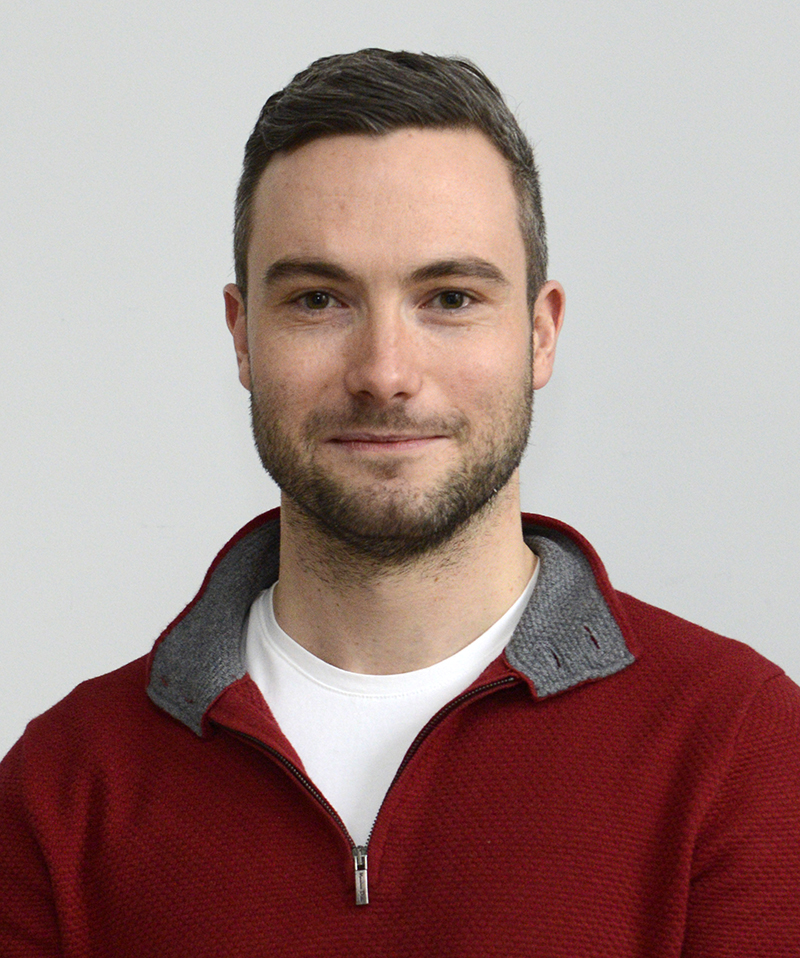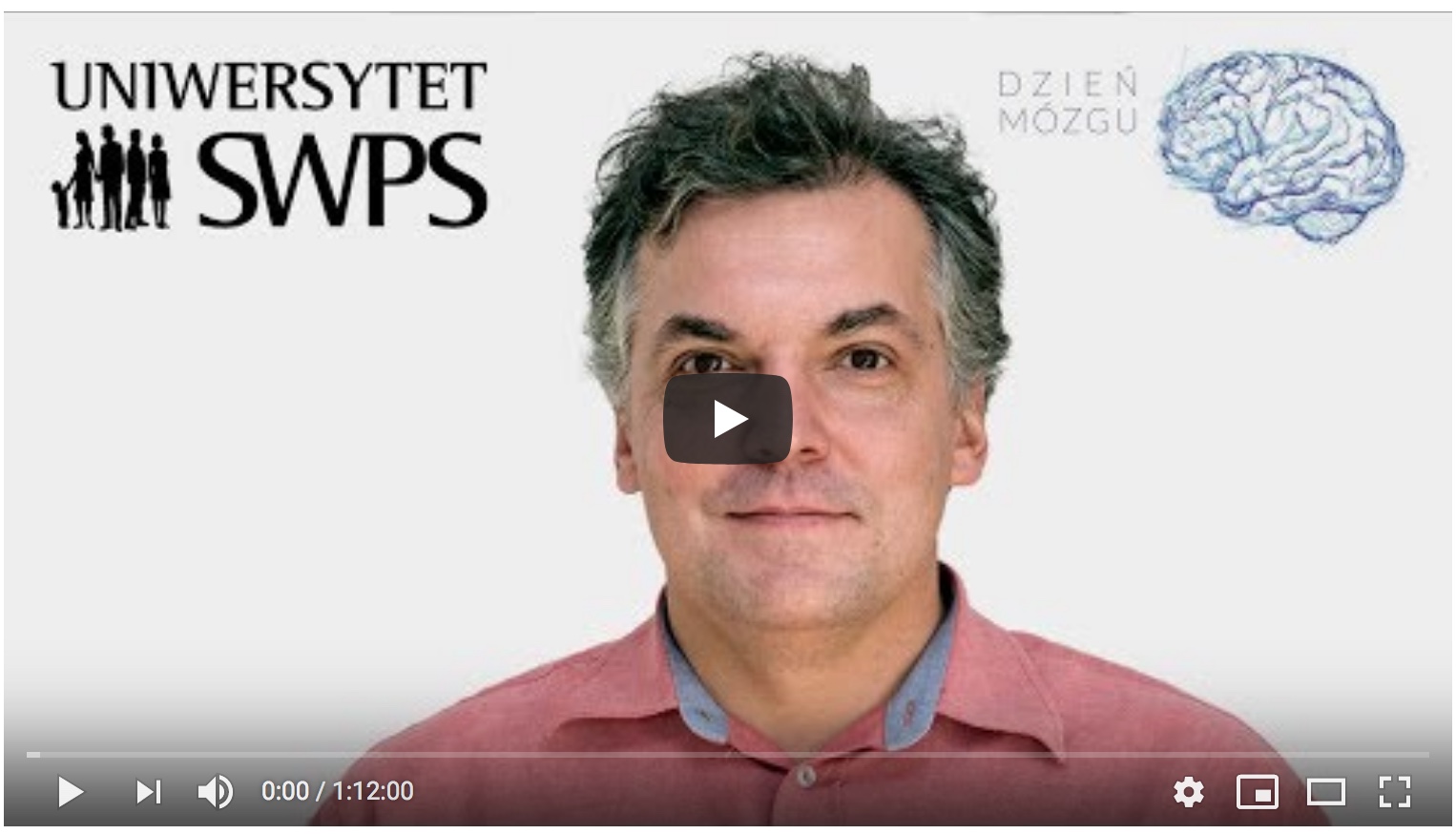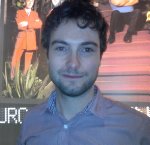
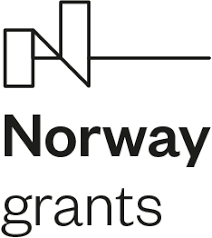

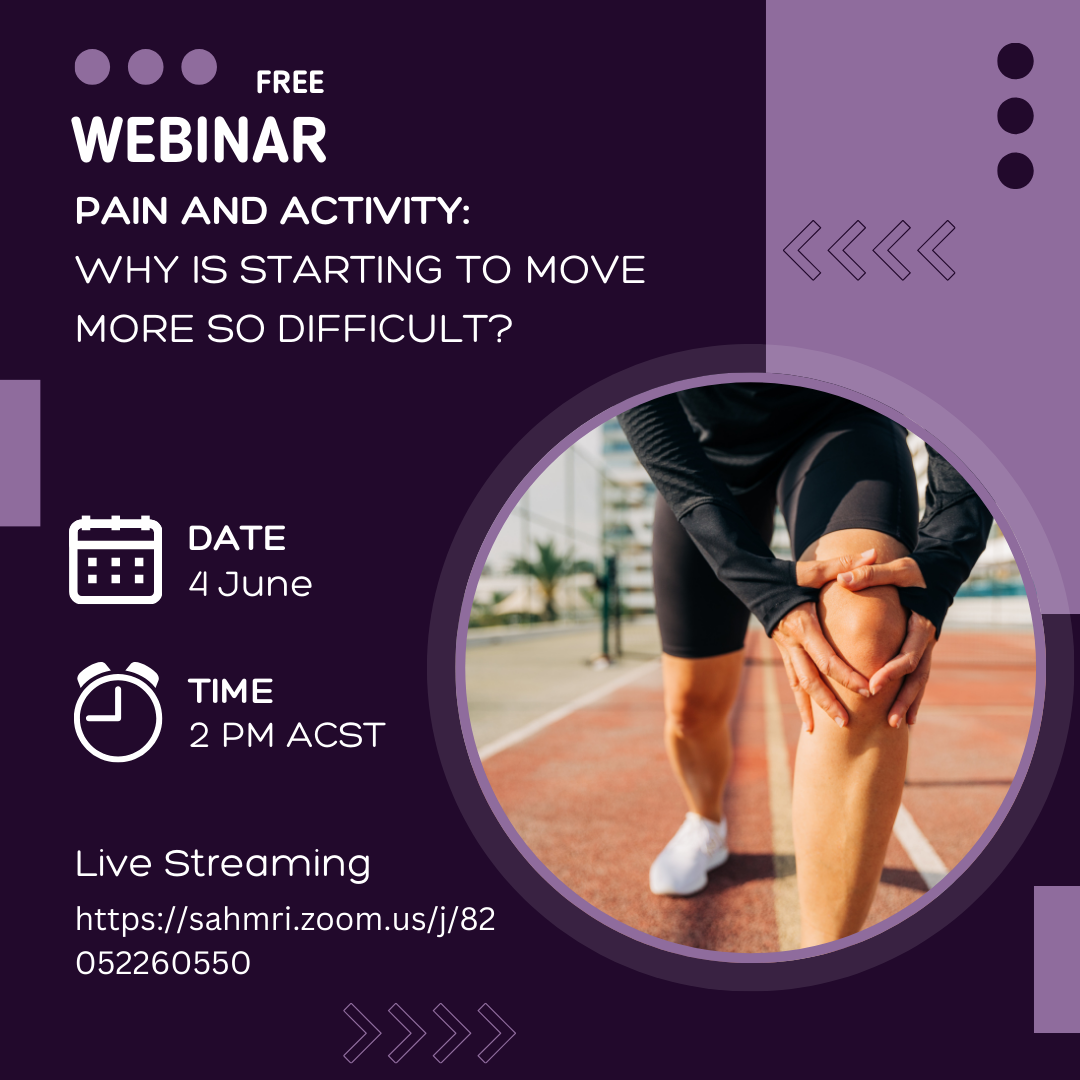
Why was it so challenging to start moving more when in pain? The Persistent Pain Research Group, based at SAHMRI in Adelaide, Australia, delivered this free webinar, in which they explored the reasons behind this difficulty and discovered strategies to overcome it. One of the speakers was dr hab. Aleksandra Herman from LOBI (and UniSA).
Whether you are someone experiencing persistent pain, a healthcare provider treating pain patients, or simply curious about factors influencing our choice and ability to stay active, this webinar is for you!
Link to the recording: https://www.youtube.com/watch?v=W1ov_gjN2rQ&t=22s&ab_channel=NeuroOrthopaedicInstitute
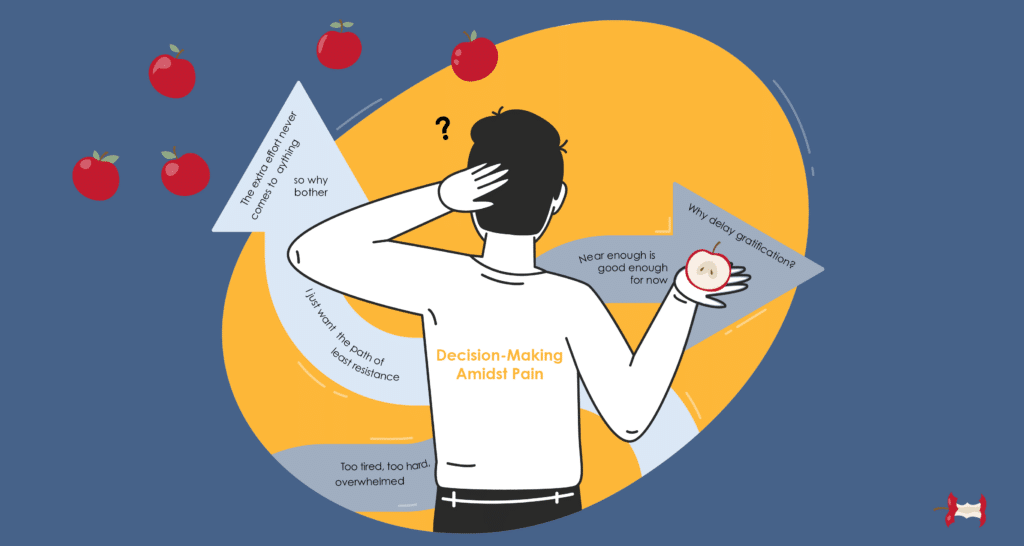
The post covers published and ongoing research on this important but understudied topic: https://www.noigroup.com/noijam/decision-making-amidst-pain/

We cordially invite you to an event presenting the results obtained during the implementation of the project "Mapping Human Emotions in the Face of Climate Change in Relation to Mental Health and Action-Taking" funded by the Norwegian Funds, grant no. 2019/34/H/HS6/00677.
The event will be held on April 29, 2024, from 3:30 PM to 5:30 PM in the CN Hall of the M. Nencki Institute of Experimental Biology, Polish Academy of Sciences (PAN), at 3 Pasteura Street in Warsaw. The event will be held only in the Polish language.
During the event, we will discuss the results of the research project and invite you to a discussion.
The event is open to the public and free of charge.
We welcome everyone interested in the topic of climate change. In particular, we invite activists, representatives of the local scientific community, and non-governmental organizations interested in climate change.
If you would like to participate in the event (in person or online), please register at this link: https://forms.climate-change-emotions.org/index.php/424347
More information about the project and event programme can be found on the website: https://climate-change-emotions.org/pl/
We warmly invite you on behalf of the entire research team!


We would like to cordially invite you to the upcoming Brain Imaging Meeting organized by the Laboratory of Language Neurobiology (LLN) and the Laboratory of Brain Imaging (LOBI). The seminar will take place on Wednesday 24.01.2024 at 03:00 PM in the CN Lecture Hall at the Nencki Institute. During the seminar Chiara Banfi, PhD (research fellow in the lab of Prof. Karin Landerl, at the Institute of Psychology at the University of Graz Austria) will present a talk entitled: Neurocognitive basis of associations and dissociations between written language and arithmetic processing Can we say that reading and spelling are two sides of the same coin? And how is it that they are correlated with arithmetic performance, an academic skill seemingly far from literacy competences? This talk will examine these research questions from a neuroimaging and cognitive perspective. In the first part, the focus will be on the neurocognitive underpinnings of associations and dissociations between reading and spelling skills. This approach enables to specifically investigate the correlates of sublexical and lexical strategies of written language processing. Eye-tracking, neurostructural and neurofunctional evidence will be presented, showing that there are different substrates related to the two skills. The second part of the talk will report recent research evidence from our lab that examined cognitive mechanisms contributing to shared variance in reading and arithmetic as compared to dimensions with a more specific role. In the final part of the talk, I will present data from an ongoing project that investigates the relation between acquisition and retrieval of orthographic and arithmetic facts in German- and Italian-speaking children.
Place: CN Lecture Hall at the Nencki Institute.
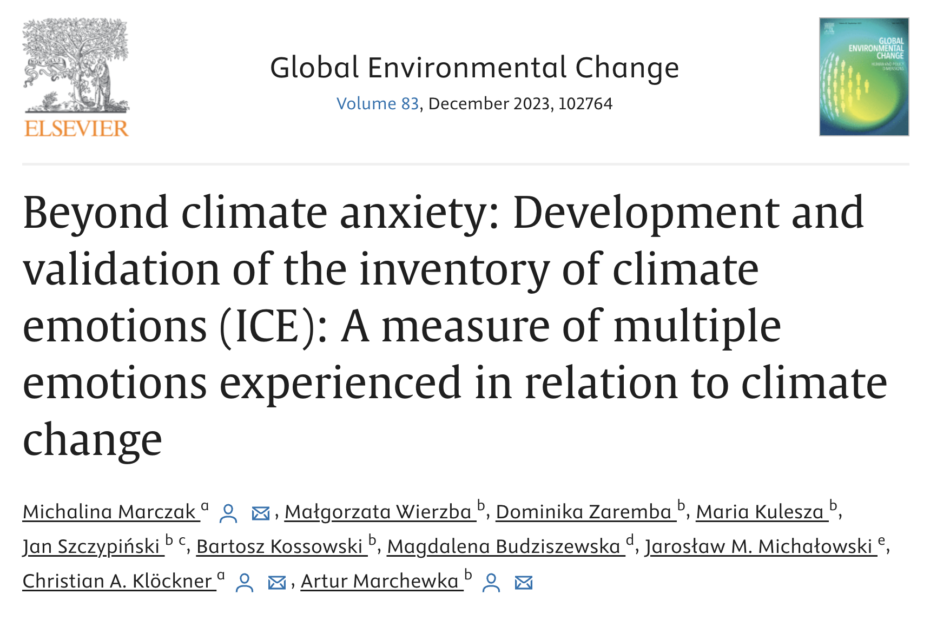
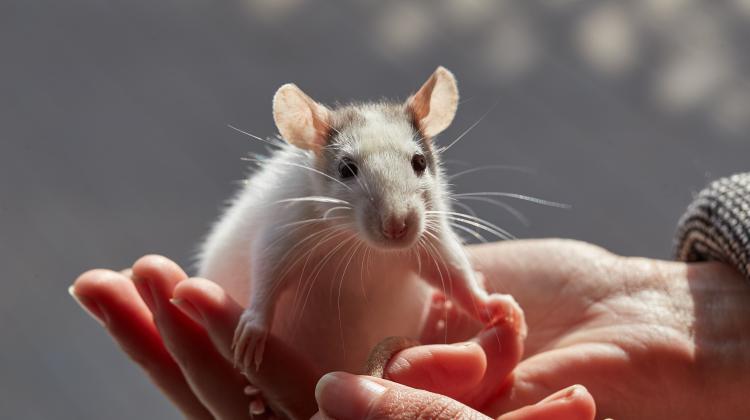
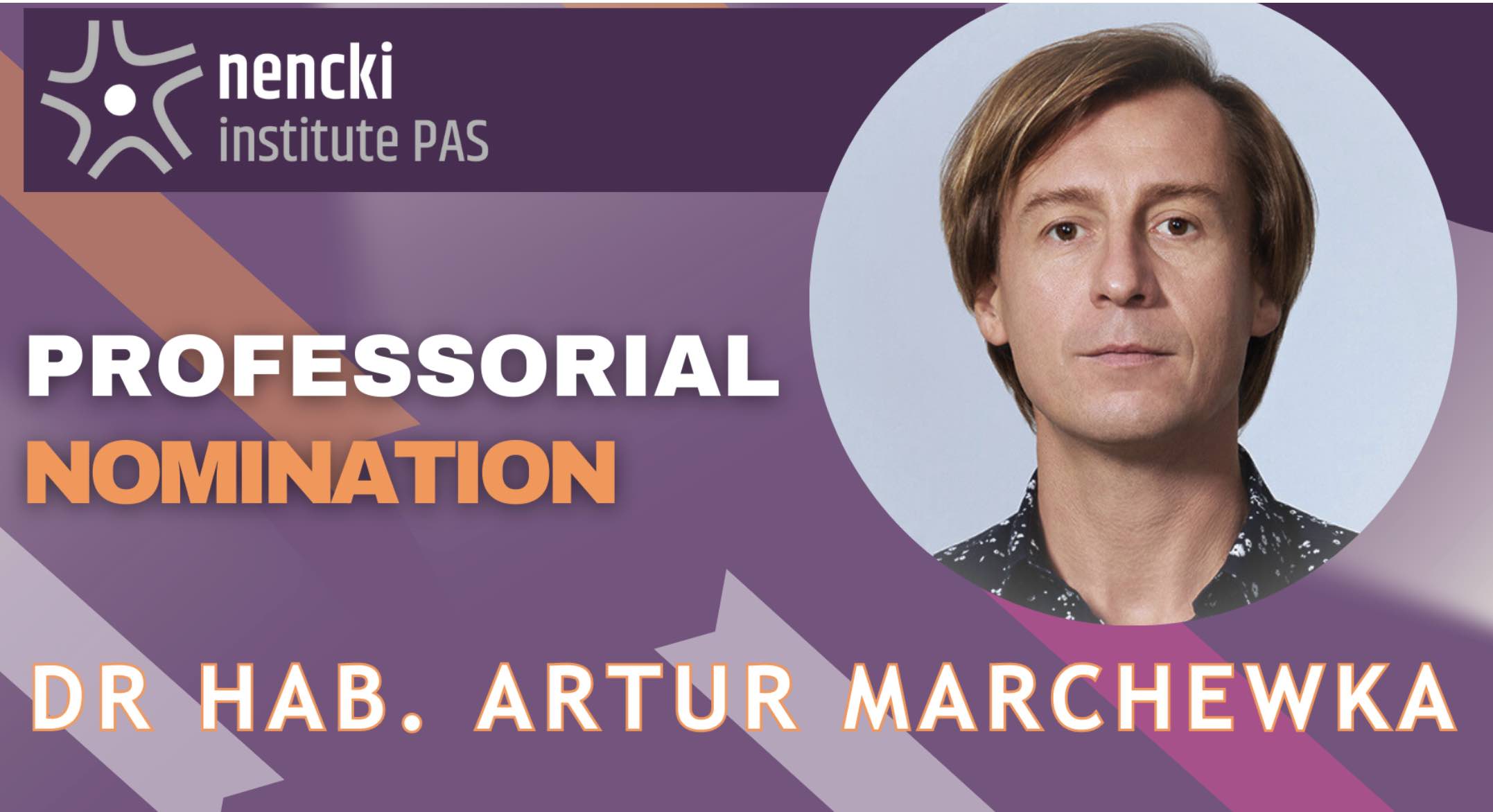
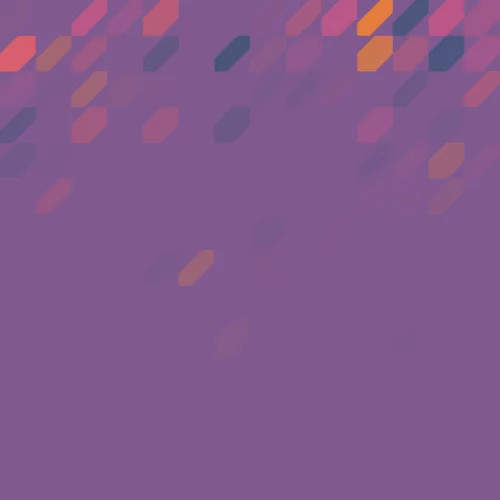
Few neuroimaging studies are sufficiently large to adequately describe population-wide variations. The UK Biobank, the largest neuroimaging dataset available to date (N ~ 40,000), is an ideal candidate to create neuroanatomical norms that could be reused for multiple studies of neurological and psychiatric disorders. I will present the results of our studies aimed at generating neuroanatomical norms and individual markers that consider age, sex, and brain size, from 629 cerebral measures in the UK Biobank. Additionally, I will describe how to analyze brain asymmetries to distinguish global from regional effects and report unbiased group differences in cerebral asymmetries.
Porf. Franck Ramus, CNRS senior research scientist at the Laboratoire de Sciences Cognitives et Psycholinguistique, Department of Cognitive Studies, Ecole Normale Supérieure in Paris.
Online access via: https://zoom.us/j/92506879693?pwd=SU05SHhIei9VdGRLTkRSKzNjSGIyUT09 with the access code: 663654
Place: Wojtczak Lecture Hall (1st floor) and via Zoom (see desc.)

Abstract: Interoception, the sense of the body's internal state, is increasingly recognised for its role in health and well-being. In this talk, I will focus on how signals from the body can impact decision-making, drawing on interdisciplinary methods from neuroimaging, psychophysiology, and behavioural economics. Specifically, I will present three studies investigating (i) how different body-related signals are processed and converged by the brain, (ii) the role of sensitivity to bodily cues in guiding decisions under uncertainty, and (iii) recent findings on how disrupted body-brain communication can affect actions and decisions. By investigating these interactions between the body and brain, the research reveals that our body signals partly influence our decisions and actions, but how well we can perceive and interpret these signals is also crucial. Furthermore, these findings imply that novel body-focused interventions may be promising tools for treating conditions such as chronic pain.
Place: CN lecture hall
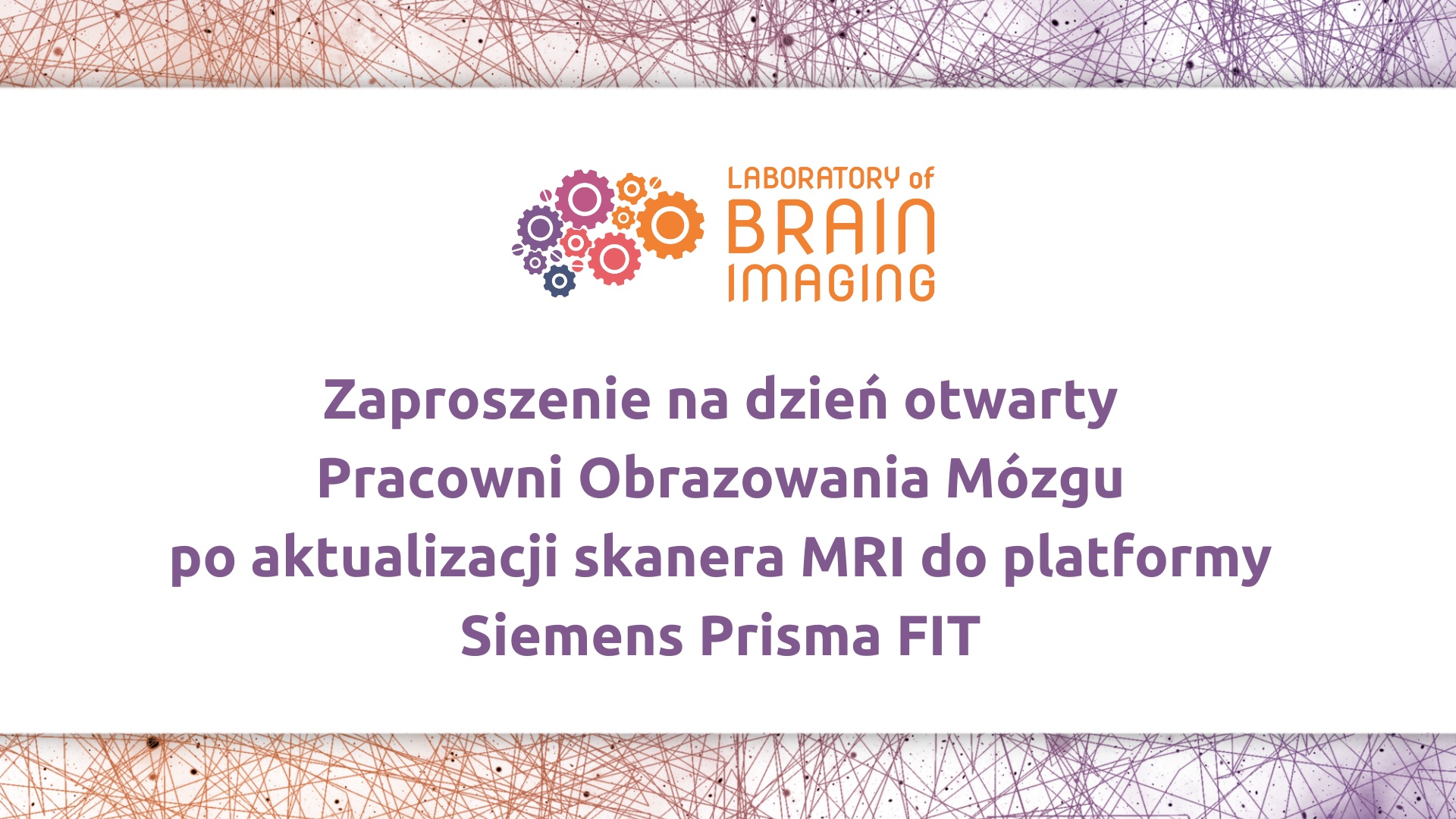
Szanowni Państwo, Koleżanki i Koledzy,
zapraszamy na dzień otwarty Pracowni Obrazowania Mózgu w Instytucie Nenckiego PAN. Wydarzenie będzie miało miejsce 21 kwietnia 2023 r. - rozpoczniemy o godzinie 10:00 w sali im. Konorskiego (2 piętro) krótkim wykładem na temat działalności Pracowni Obrazowania Mózgu (ang. Laboratory of Brain Imaging, LOBI), zaś po wykładzie zaprosimy Państwa na prezentację naszego zaplecza sprzętowego. Prezentacja (ok. 20 minut) odbędzie dla grupy osób, które zgłoszą chęć udziału do dnia 18.04.2024 na stronie: https://redcap.link/lobi-demo Serdecznie zapraszamy osoby zainteresowane poznaniem oferty usługowej LOBI oraz wszystkich zainteresowane nieinwazyjnymi badaniami ludzkiego mózgu.

The effects of working memory (WM) performance remain uderestimated in social decision-making studies. The mechanisms of working memory are anatomically and functionally related to the mechanisms of behavior inhibition. From the evolutionary point of view, an increase of computational demands for social decision-making correlated with the increase of the complexity in human society. This should result in development of working memory system. We suggest that working memory performance should correlate with the level of altruism - subjects prone to altruistic behavior should show larger WM capacity. To test this hypothesis, we recorded the evoked electrical activity of the brain in 70 subjects (33 female) aged 18-22 years under the following experimental conditions: Dictator Game (the subject acted as Proposer), Ultimatum Game (the subject acted as Proposer), the 2-Back WM test, the Sternberg WM test. The total amount of money that the subject shared during the Dictator Game or Ultimatum Game conditions was considered as the behavioral correlate of altruistic behavior, and the FRN (Feedback-Related Negativity) magnitude was considered as neurophysiological correlate of social interaction. The percentage of errors in WM tests was considered as behavioral correlate of WM performance, and the amplitude of the P3 component was considered to reflect WM load. Our results show that, contrary to the working hypothesis, subjects with more expressed altruistic behavior have a higher FRN amplitude. However, the P3 amplitude was also higher in the group of altruistic subjects in the Sternberg test. On the other side, the amplitude of the N2-P3 complex in the 2-Back task was higher in individualistic subjects. Behavioral results in WM tests showed that subjects with individualistic behavior have higher WM performance in both the 2-Back task and the Sternberg test. Thus, subjects with individualistic behavior show higher WM performance.
Online access via: https://zoom.us/j/94591383139?pwd=V2VnYm9EbHFhbE5IUGNiaE1Uc3FPdz09 Passcode: 762331

The presentation will dive into some recent studies around psychological predictors and barriers to climate actions, and climate communication. I will present a behaviour model and a behaviour change model and apply them to climate change actions, exploring the role of emotions in them. Then I will discuss some communication barriers and propose new ideas for overcoming them.
Prof. Christian A. Klöckner is professor in Social Psychology and quantitative methods at Norwegian University of Science and Technology. He leads the research group for “Citizen, Environment, and Safety” which is focusing on researching individual, social and contextual drivers of environmental decisions (including food, energy, mobility, housing).
The meeting will take place in the Konorski Hall (2nd floor) and online under the link: https://meet.google.com/jgm-qefb-mre
Place: Konorski Hall (2nd floor) and online

She will be conducting her project: "PAInful Decisions - How chronic pain affects daily decision-making" at the University of South Australia working with Professor Tasha Stanton and at the Nencki Institute working with Professor Artur Marchewka.
Congratulations 👏🏼 #MSCA
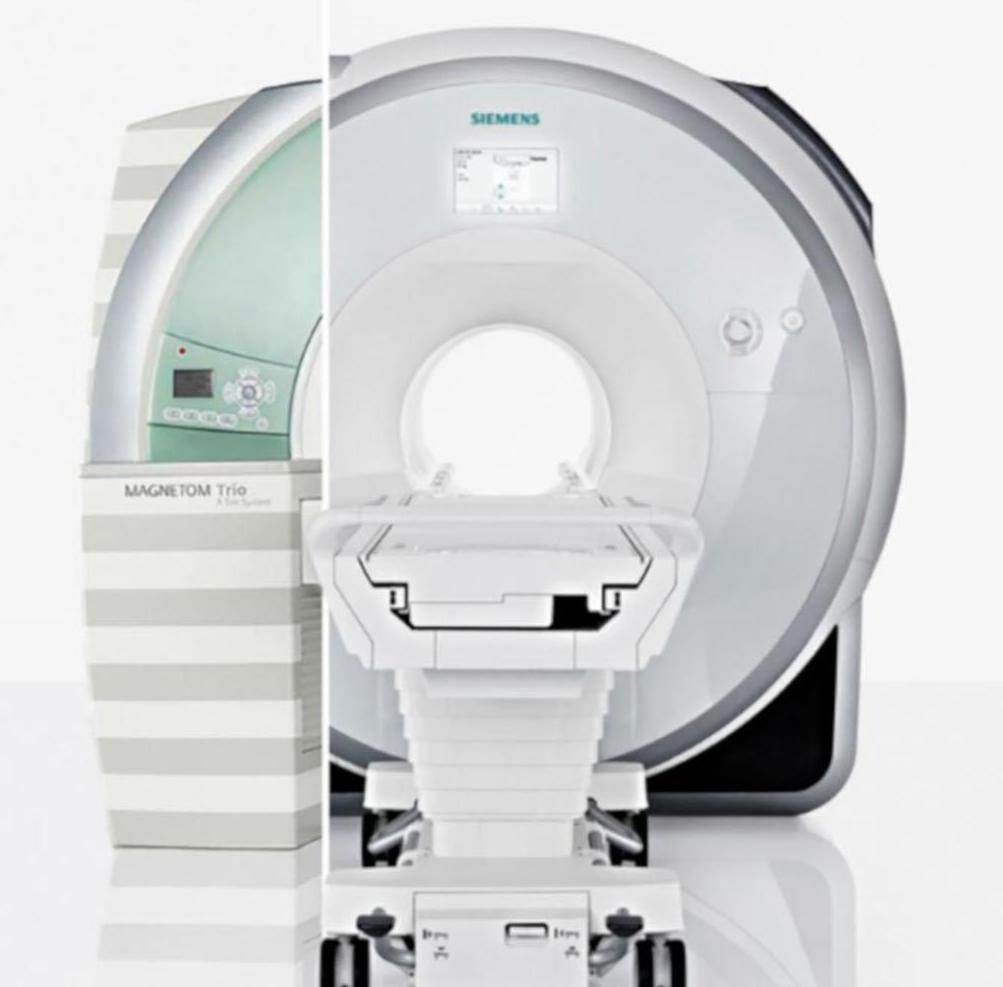

Procrastination is a self-regulation failure in which people irrationally delay intended actions despite expecting of negative consequences. Trait procrastination is estimated to affect 15-20% of the total population and leads to lower performance, satisfaction from achievements, and quality of life. Our previous fMRI results revealed impaired error processing (lower error-related activity of the anterior cingulate cortex) and lack of ability to intensify executive-control during the punishment context (no increase in activity in prefrontal regions) in highly procrastinating subjects. This led us to the question of whether procrastination is related to impaired learning on errors and punishments. During the seminar I will present results of our recent paper ( https://doi.org/10.1037/xge0001161 ) where low (LP) and high (HP) procrastinating students took part in a monetary probabilistic reversal learning task with separate reward and punishment conditions. Several learning models and model-free measures were applied to the collected behavioral data. Results suggest lower flexibility in the learning task in HP subjects, which can further decrease during the punishment condition. Moreover, as half of the participants started with reward and half with the punishment condition, we could find that, HP subjects who began with the punishment condition tended to be less flexible throughout the rest of the task. These results suggest that impaired learning from errors and punishments may prevent highly procrastinating subjects from correcting their behaviors and add to the persistence of procrastination. I will also argue that impaired learning from failures may constitute one of transdiagnostic mechanisms underlying various self-regulation disorders.

The ability to quickly and effectively react in the face of danger is crucial for survival in a complex, unpredictable environment. Therefore, it has been proposed that reaction to threatening stimuli might be initiated already on the unconscious stage of perception. While such unconscious reactions were shown to cause nonspecific arousal, it is not known whether specific prioritization of a fear-related stimulus can be observed without awareness. In the present study we investigated the ability of invisible signals of threat to selectively capture attention and engage cognitive processing. Participants (N = 42) were presented with images of faces expressing either fear or a neutral emotional state. Faces were arranged in pairs and displayed for 16 ms. In half of the trials visibility of face images was suppressed by a backward mask. Participants performed two tasks: in one of them faces were task-relevant, in the other one they served for task-irrelevant distractors. EEG signal was recorded during the procedure and event related potentials (ERP) were analyzed to track the neural response to face stimuli across processing stages. We found that unconsciously perceived fearful faces modulated amplitude of the face-specific N170 component, but did not affect ERP makers of attentional prioritization (P2, N2 components), selective attention capture (N2pc), attention engagement (SPCN), or higher order cognitive processing (P3). Importantly, fearful facial expressions did evoke automatic selective attention capture (N2pc) as well as task-related attentional engagement (SPCN), and cognitive processing (P3) in the conscious condition. Thus, our results demonstrate that while signals of threat can be encoded outside of awareness, they do not possess the ability to unconsciously capture or engage attention. Obtained results contribute to the discussion on subliminal origin of fear reactions, and on the capabilities and limitations of unconscious processing.

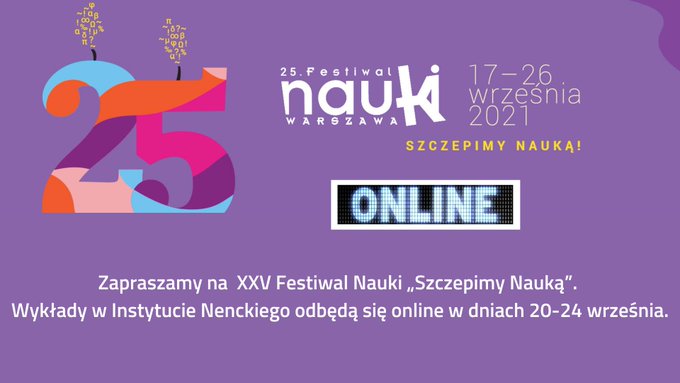
dr Marek Wypych:
„Co wiemy o odwlekaniu spraw i czy badania mózgu pozwolą opracować metody radzenia z prokrastynacją?”
dr hab. Maciej Juryńczyk:
„Rezonans magnetyczny – okno do wnętrza mózgu dotkniętego chorobą”
mgr Michał Szczepanik:
„Technologie wielkie i małe w rękach badaczy ludzkiego mózgu”
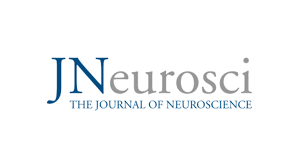
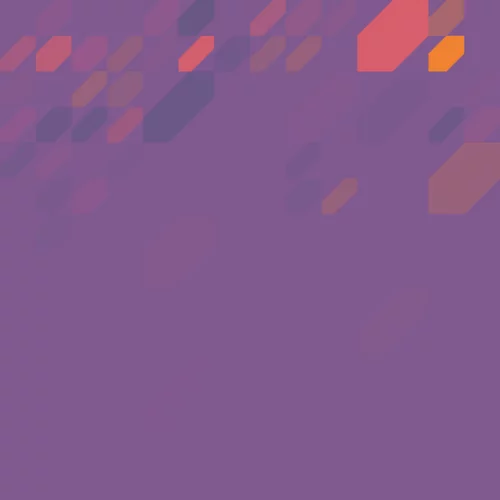
Recently we showed that it is possible to measure simultaneously properties of central vision, the fine acuity, and of peripheral vision the motion perception. We designed a motion-acuity task based on discrimination between a circle and an ellipse matched for surface, build from random dot kinematograms (RDK). The two shapes were separated from the background RDK by the motion of dots by coherence, direction, or velocity. Motion was carried in positive or negative contrast. We found that the velocity-based acuity task in negative contrast was most challenging as compared to positive contrast (Kozak et al., 2021). A bigger number of neurons with small receptive fields process the fine details of the objects presented at the center of the visual field, while the peripheral receptive fields with wider diameter, are sensitive to motion in negative contrast. The size of receptive field is not stable over time, and it is primarily shaped during the development and successively by experience and events. To gain insight into the dynamics of the rearrangement when the peripheral vision is missing, we narrowed visual fields for a short amount of time (15 minutes), leaving intact 10 visual degrees of central vision. We noticed that the significant differences in receptive field diameter between hemispheres were unified when the peripheries were excluded. Despite the individual discrepancies, we demonstrated a significant shift of spared narrow foveal receptive fields to wider diameters after limiting visual stimulation. Further, we found a correlation between the size of receptive fields and motion-acuity thresholds: the increase of receptive field diameter correlates with lower acuity in negative contrast velocity-acuity task. With these results, we are left with a main question: does narrowing the visual fields cause central receptive fields to acquire peripheral characteristics?

Reading process in deaf individuals, sign language users, is connected with their unique language and auditory experience (Emmorey & Lee, 2021). Deaf signers use a visuo-spatial language on daily basis and they have reduced access to spoken language, particularly to spoken language’s phonology. The lack of auditory input has impact on visual attention, e.g. deaf signers have enhanced peripheral attention (Bavelier et al., 2006). The immersion in sign language, the disadvantage in spoken language access and the auditory deprivation shape the reading process at the word level and at the sentence level in deaf individuals. In the single words’ reading tasks, deaf individuals do not rely on phonological coding (Castello et al. 2021) and they have greater engagement of the right hemisphere in visual word processing when compared with hearing individuals (Glezer et al. 2018). At the sentence level, deaf readers focus more on semantic and less on syntactic information than hearing individuals (Mehravari et al., 2017). The majority of the previous investigations were based on the results from event‐related potentials (ERPs). In the present study, we aim to analyse the fMRI data of deaf individuals, Polish Sign Language users, who performed two reading skills tasks: the lexical decision task (LDT) and the semantic judgement task (LJT). We plan to study the word-level and the sentence-level reading process in deaf individuals who use Polish Sign Language when compared to hearing individuals in order to investigate “the plasticity of the reading system” (Emmorey & Lee, 2021).

Menopause, the cessation of the menses in women, is an important milestone in a woman’s life. During the climacterium, the transitory period to menopause, her body is undergoing many critical physical and physiological changes. Women suffering from a particularly strong climacterium have reported many frequent symptoms including (but not limited to) night sweats, tiredness, hot flashes, sleeping problems, nausea, headaches, urogenital dryness, visual problems, irritability, and muscle stiffness. Simultaneously, women also document strong changes in mood with some reporting severe depressive symptoms. Scientifically, reduced oestrogen levels have been associated with increased risk for development of clinical depression on the psychological level but also Alzheimer’s disease and dementia on the neurological level. Surprisingly, the impact of menopause on basic emotional processing has not been investigated to date. Interestingly, recent data suggests that emotion processing may not only be occurring in the brain, but that emotions may also be perceived across the entire body. Therefore, the goal of this project is two-fold. First, on a basic (neuroscientific) level, to determine whether and to what extent menopausal symptoms alter basic emotion processing, also across the entire body given the strong physical symptoms associated with menopause. Second, on an applied clinical psychological level to determine to what extent any changes in emotion perception may be associated with mental health (e.g., depressive symptoms), well-being, and quality of life. To this goal, two groups of women, those with and those without strong symptoms of menopause (ages 40-60) will be compared against one another on a whole body emotion perception task as well as physiological responding to affective pictures via pupil dilation (eye tracking). Finally, hormonal samples of estrogen and follicle stimulating hormone (FSH) will be taken to determine menopause status and to correlate against mood symptoms. The findings obtained from this project may help researchers understand better the impact of the climacterium on basic affective processing and regulation as well as potential risk for mood disorders such as depression


Smartphones have become ubiquitous in the modern world. However, it remains vague whether and how a relation with mobile devices affects our cognitive functioning. Hence, in this study we investigated the impact of smartphone-related auditory distractions and smartphone usage on sustained attention. 31 participants were asked to perform a Continuous Performance Task in 3 separate conditions: one with a smartphone-related distractor, one with a neutral auditory distractor, and finally one without any distracting sounds. In addition to behavioral measures, electrophysiological methods were utilized in order to test in-depth effects on attentional and distractor processing. In order to examine whether smartphone usage has an effect on our attentional processing and to obtain objective usage characteristics a tracking mobile application was installed on participant’s smartphones. The results indicated that both (smartphone related and neutral) distractors had no impact on task performance. However, the participants exhibited a stronger orienting reaction towards a smartphone related distractor. Moreover, increased social media app usage appeared to change attentional target processing and prolonged the indexing of the distracting stimuli. These findings show preliminary evidence that smartphone usage might negatively influence our ability to keep attention focused on one task, as well as our capability to filter out and process smartphone-related auditory distractions. The matter of smartphone-related cognitive alterations is quite contemporary and uncharted. Because of the hasty development of technology and the fact that we are becoming more and more dependent on it, further research is necessary to help us better understand those relations and their implications.

Behaviours and emotional expression of others can serve as powerful cues, which can be utilised to learn about threat or safety in a social manner. We studied this process using the observational fear conditioning paradigm. We built upon an existing experimental protocol by inviting pairs of friends to simultaneously take part in the experiment: one participant was the demonstrator, and underwent differential fear conditioning while being observed by the other (observer). The social acquisition of fear was then tested by presenting the previously conditioned stimuli to the observer. While most previous studies used videos as social stimuli, we relied on live observation of a familiar person to increase immersion and ecological validity of the procedure. I will discuss our methodology and present results of two experiments: the first was psychophysiological, and allowed us to validate the real-time observational procedure in 35 pairs of friends. The second experiment was based on fMRI, and involved 48 pairs of friends as demonstrators and observers (with live video streaming) and further 47 participants who watched the same demonstrators (with video recordings). This allowed us to compare learning from a friend versus an unknown person, using visually identical stimulus material. The main effect of the task was similar in both groups, and again confirmed the effectiveness of social fear learning. Notably, we observed activations in the amygdala, anterior insula and anterior cingulate cortex (the set of structures activated also by direct fear conditioning), as well as in the superior temporal sulcus and fusiform gyrus (the structures involved in processing of social stimuli). However, we did not find differences between observation of a friend and observation of an unknown person. This suggests that social learning of threat can be considered primarily as a transfer of information, of which strangers are equally reliable sources as friends.

Multiple sclerosis (MS) is a chronic autoimmune disease of the CNS driven by an immune attack of lymphocytes against myelin sheaths. For many years MS was the primary diagnosis considered in all patients presenting with relapses of CNS inflammation. Following the recent discovery of new biomarkers the concept of MS has however changed with conditions previously considered as its variants now recognised as separate entities, including neuromyelitis optica spectrum disorders (NMOSD) associated with antibodies against the water channel aquaporin-4 and myelin oligodendrocyte glycoprotein antibody-associated disease (MOGAD). Importantly, patients with newly recognised antibody-mediated conditions often do not respond and might even exacerbate following treatment with currently used MS-modifying drugs, which might lead to their increasing disability. The choice of appropriate treatment is particularly challenging in patients with overlapping symptoms of MS and antibody-mediated conditions who do not have the presence of antibodies in the serum. Due to lack of biomarkers in these patients the diagnosis relies mainly on brain and spinal cord imaging. In this presentation I will review my previous work on characterising distinct clinical, imaging and metabolomic features of MS, NMOSD and MOGAD, and discuss how further progress in imaging could help optimise diagnosis in indeterminate cases to prevent disability from inappropriate treatment.
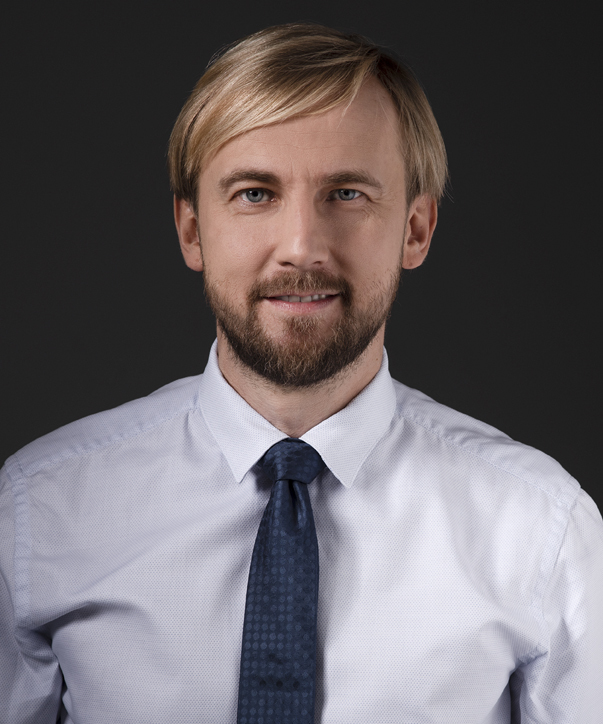

According to the cerebellar deficit hypothesis (Nicolson, Fawcett & Dean, 2001) impairments in cerebellum and cerebellar loops lead to decreased literacy skills (both reading and spelling). Interestingly, spelling deficit is described as due to the non-linguistic cognitive source: reduced automatisation, which also indirectly affects reading skills. Automatisation is often a part of implicit learning experiments, where participants react to the stimuli appearing on the screen in a set of hidden sequences and they become faster with each repetition (uknowingly automatizing their movements). In dyslexia there’s a well-established implicit learning deficit. However, it’s not clear if the obtained results are spelling- or reading-dependent since dyslexia is often defined as combined reading and spelling impairment. Therefore we wanted to investigate the relationship between literacy skills and automatisation, in particular: a hypothesized direct route between spelling and automatisation. Three groups of children (N = 114, aged 8-12) took part in the experiment: control, developmental dyslexia (combined reading and spelling impairment) and isolated spelling deficit. Children were asked to click the corresponding button to the stimuli on the screen as fast as possible. During fMRI task we gathered data from brain areas crucial for learning (e.g. SMA, cerebellum) and measured reaction times (RT). In line with previous research we observed an implicit learning deficit in dyslexic children. Yet, both control and isolated spelling deficit groups obtained similar results indicating learning effects. Main effect in brain activations was found in SMA only in the early stages of experiment. Further analyses revealed crucial role of pre-SMA in learning motor sequences in opposition to SMA-proper responsible for movement execution. We found that children with isolated spelling deficit resemble more typical readers and spellers than dyslexic peers. Thus, automatisation deficit is not spelling-dependent. Nevertheless, we propose an explanation in line with cerebellar deficit hypothesis: we consider pre-SMA as an initial part of a learning loop connecting with cerebellum at final stages when sequences are best learnt. Perhaps longer experiment would have exposed within-groups differences in cerebellum.

.

Studies in both rats and humans have shown that learning about threats from conspecifics is possible but the nature of social communication differs between these species. While humans prefer to learn observationally, rats need to interact with one another in order to learn about the threat vicariously. We conducted two studies in order to 1) examine the brain correlates of the observational fear learning in humans and 2) investigate whether human fear can be transmitted to rats through social interaction. In study 1, participants were asked to watch a close friend being fear-conditioned and in study 2, fear-conditioned humans were asked to interact with previously handled rats. Preliminary fMRI results showed that brain networks related to fear and empathy for pain were activated in the participants during observation. Remarkably, strong involvement of bilateral amygdala was observed. Regarding the human-rat experiment, the c-Fos mapping performed in this region of interest indicated increased activity in two amygdalar nuclei - medial and lateral - following the interaction with a fear-conditioned human. These findings show that bridging the gap between human and rat studies is possible and suggest a similar brain mechanism underlying social transmission of fear in both human-human and human-rat dyads.

Knowledge of brain mechanisms underlying self-regulation can provide valuable insights into how people regulate their thoughts, behaviours, and emotional states, and what happens when such regulation fails. Self-regulation is supported by coordinated interactions of brain systems. Hence, behavioural dysregulation, and its expression as impulsivity, can be usefully characterised using functional connectivity methodologies applied to resting brain networks. I am going to present the results from the study testing whether individual differences in trait impulsivity are reflected in the functional architecture within and between resting-state brain networks. Thirty healthy individuals completed a self-report measure of trait impulsivity and underwent resting-state functional magnetic resonance imaging. We identified across participants ten networks of regions (resting-state networks) with temporally correlated time courses. We then explored how individual expression of these spatial networks covaried with trait impulsivity. Across participants, we observed that greater self-reported impulsivity was associated with decreased connectivity of the right lateral occipital cortex with the somatomotor network. No supratheshold differences were observed in between-network connectivity. Our findings implicate the somatomotor network, and its interaction with sensory cortices, in the control of (self-reported) impulsivity. The observed 'decoupling' may compromise effective integration of early perceptual information (from visual and somatosensory cortices) with behavioural control programmes, potentially resulting in negative consequences.
Place: check "More information" for an online meeting link

What is the relation between consciousness and attention? Even though these two mental processes seem closely related, there is a growing body of evidence that they can be dissociated on both behavioral and neural levels. In particular, it has been convincingly shown that stimuli processed outside of awareness are able to capture visuo-spatial attention. However, as demonstrated by recent studies, the capture/shift of attention by a stimulus is only one function of attention, the other being attentional engagement in processing of a selected item (see also Posner et al. 1987). Indeed, several classes of salient, complex stimuli (like semantically incongruent scenes or angry faces) do not capture attention automatically, but they do trigger attentional engagement when presented in the spotlight of attention. Importantly the relation between attention shifts and consciousness has been investigated, but attentional engagement has to our knowledge not been studied in relation to consciousness. Thus, we set out to investigate whether salient naturalistic stimuli - such as emotional faces, affective or incongruent scenes - can engage attention when processed without awareness. We conducted two pilot experiments in order to test the experimental procedure, so far including only the condition of full perceptual awareness. In each trial participants (N=28) had to determine which letter (Z or N) was presented in the peripheral area of the screen. Simultaneously they were presented with a centrally located, clearly visible image of an emotional face (angry, fearful, or neutral; exp. 1) or a scene (disgusting or neutral, congruent or incongruent; exp. 2). We hypothesized that salient stimuli will engage attention and thus delay the response to the peripheral target letter. The analysis of reaction times provided no evidence for such an effect, yet it allowed us to draw important conclusions regarding possible methodological pitfalls. Summarizing, we think that the idea of investigating unconscious attention engagement is very promising, and can improve our understanding of the relation between consciousness and attention.

The pedophilic disorder is characterized by a sexual preference for children and leads to child sexual abuse (CSA) in half of the patients. Studies showed that pedophiles with a history of CSA (CSA+) are inferior, in inhibitory control, to those without (CSA-). Inhibitory control may be influenced by negative affectivity, which was shown to be a state factor facilitating sexual abuse. Nevertheless, it is not known if distress influence CSA+ and CSA- equally. We recruited three groups of participants: healthy controls (HC) CSA+ and CSA- who performed an emotional Go-NoGo block task. The task was design specifically to correspond to a situation in which an individual is opposed by a negative life event. In each trial, participants were presented with photographs, either of neutral or negative valence, which did not require reaction. After the photographs, a circle (Go stimuli) or a square (NoGo stimuli) was presented. We found that HC and CSA- had slower reaction time in negative compared to neutral condition (regardless of the block type), while CSA+ did not. Consequently, HC and CSA- showed increased activation in the right dorsolateral prefrontal cortex (DLPFC) in negative compared to the neutral condition, what was not observed in CSA+. DLPFC is crucial for cognitive control, however, the activity of this region is modulated by emotional valence. Reduced engagement of dlPFC in CSA+ in negative condition (irrespectively of the task instructions), suggest that negative emotions in CSA+ disrupt also other aspects of cognitive control, rather than inhibition specifically.
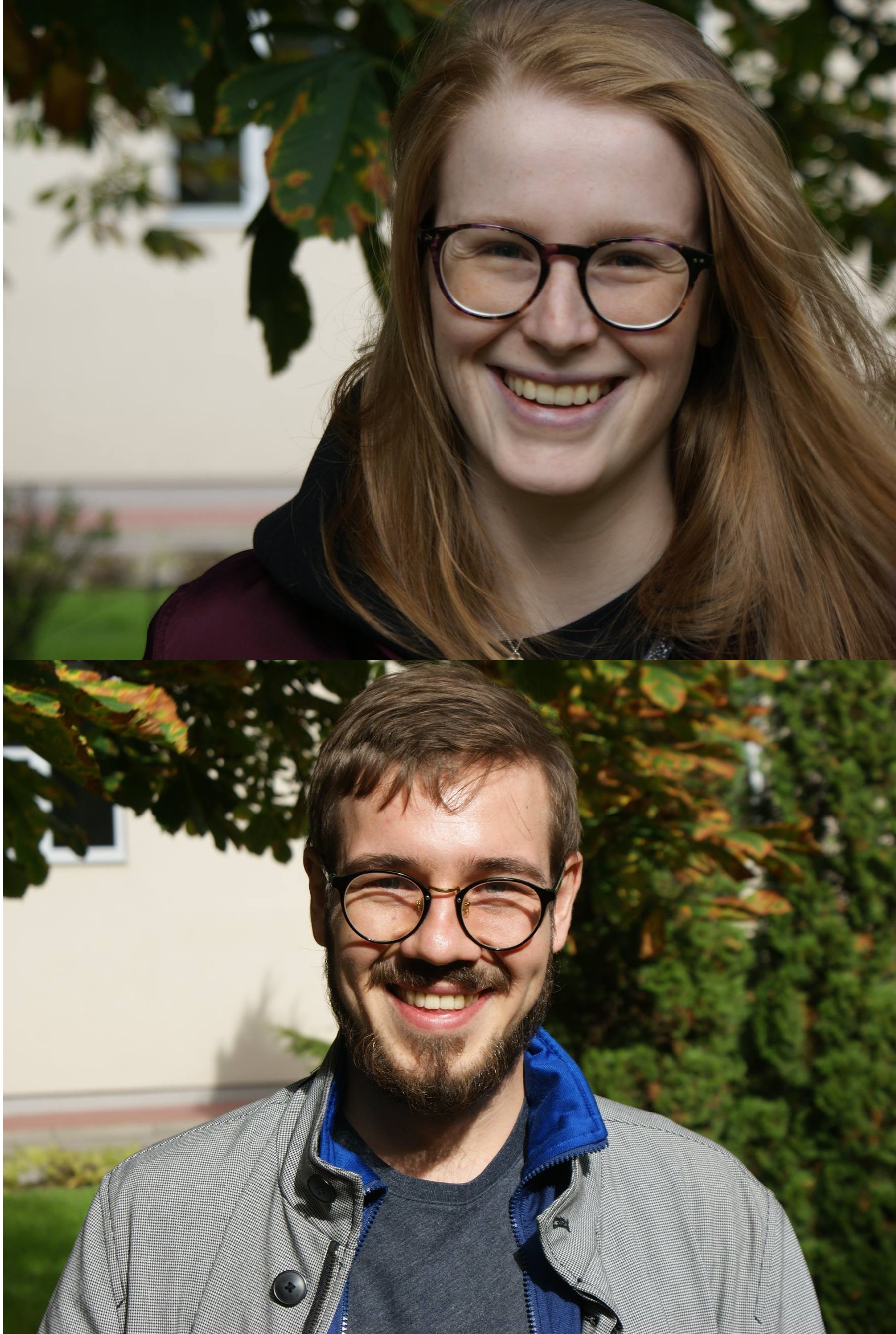
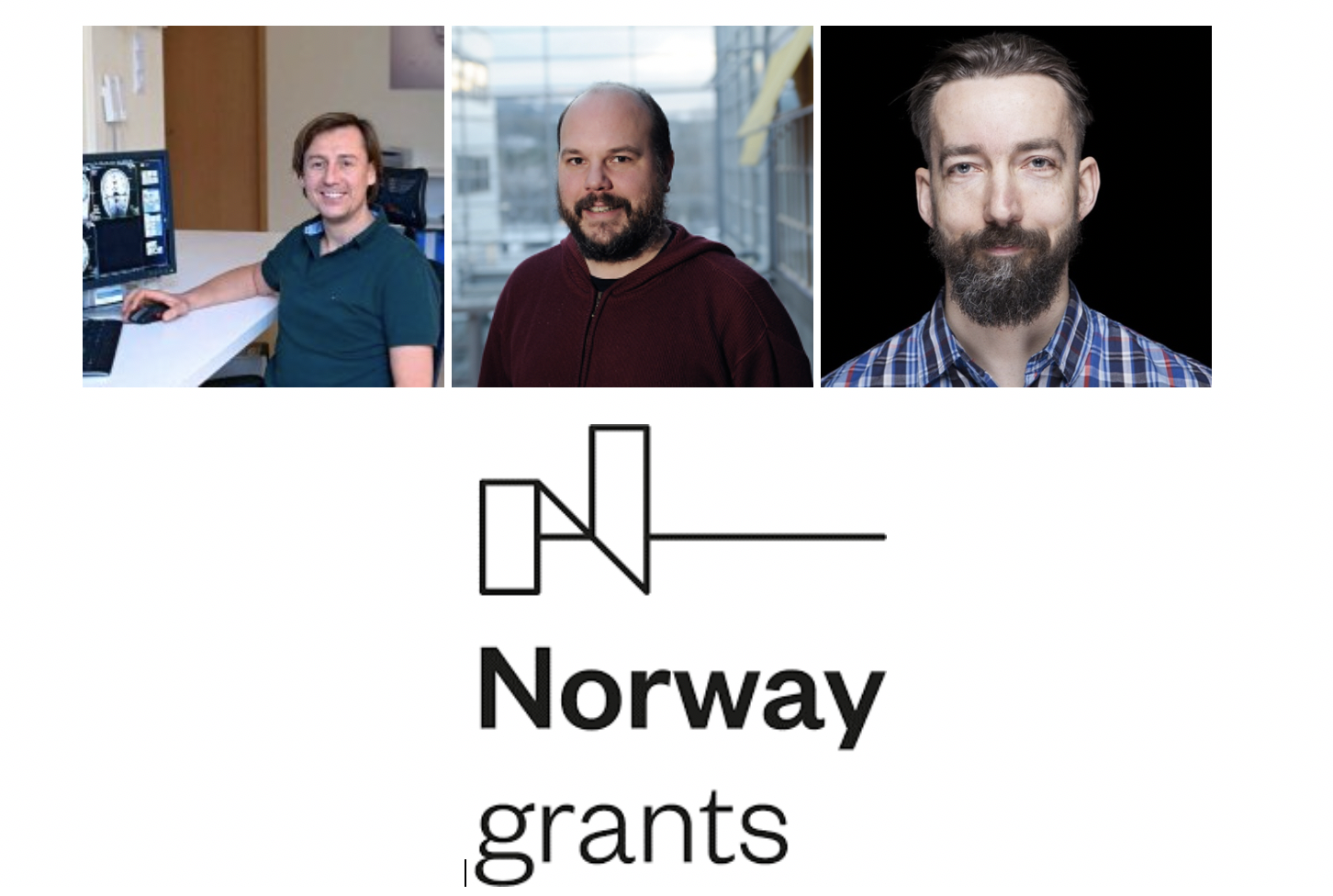
www.ncn.gov.pl/aktualnosci/2020-04-27-wyniki-konkursu-grieg?language=en

Neural networks for print reading are generally script invariant and show convergence with the speech processing network in the perisylvian areas. Blind readers use the Braille system based on the same correspondences between speech and symbols as other writing systems but in the tactile modality. Here we examine the alterations in the neural reading network due to visual deprivation and changed modality used for reading. A group of early blind and sighted adults (n=25 per group) were presented with words, pseudowords and non-linguistic control stimuli in two modalities: tactile or visual and auditory during an fMRI session. During reading, word-specific (real words vs control stimuli) activations in the blind group were very similar to activity during pseudoword reading in the sighted. Regions where speech processing and reading-related activations overlapped were different between the two groups. In the blind subjects, the main site of the reading-speech processing convergence was bilateral ventral occipitotemporal cortex, whereas in the sighted the convergence appeared in the left middle and superior temporal gyri. Our results indicate that despite some astonishing similarities between tactile and visual reading network, sensory experience influences the functional organization of the language network in a significant way.
Place: room 1, first floor

Visual objects are typically perceived as parts of an entire visual scene and the scene’s context provides information crucial in the object recognition process. Fundamental insights into the mechanisms of context-object integration have come from research on semantically incongruent objects, which are defined as objects with a very low probability of occuring in a given context. However, the role of attention in processing of the context-object mismatch remains unclear, with some studies providing evidence in favour, but other against an automatic capture of attention by incongruent objects. In my talk I will present results of an EEG study conducted by our team in order to address this controversy. Next I will discuss ideas for follow-up studies that we plan conduct in the near future.

Dylemat Więźnia (DW) jest grą ekonomiczną, polegającą na podejmowaniu decyzji w kontekście społecznym. Istotą DW jest postawienie uczestników przed wyborem między korzyściami indywidualnymi (strategia indywidualistyczna; brak współpracy) i grupowymi (strategia kooperacyjna; współpraca). Zgodnie z teoriami ekonomicznymi, racjonalnie postępujący uczestnik gry powinien wybierać strategię indywidualistyczną. Jednak badania behawioralne wykazują, iż ludzie często są skłonni ze sobą współpracować. Ma to miejsce zwłaszcza w wersji gry zwanej Iterowanym Dylematem Więźnia (IDW), w której poszczególne rundy DW są wielokrotnie powtarzane i jest możliwe odwzajemnienie kooperacji. Prace, opisujące dynamikę wyboru w IDW, zwykle wskazują na coraz większą liczbę decyzji o współpracy w miarę upływu gry. Celem projektu jest poznanie neuronalnego podłoża tego zjawiska. Czy zaangażowanie sieci funkcjonalnych mózgu w późniejszej fazie IDW zmienia się w zależności od decyzji podejmowanych przez gracza? Czy te decyzje wpływają również na spoczynkową aktywność mózgu? Podczas prezentacji przedstawię plan przyszłego badania z użyciem rezonansu magnetycznego: schemat procedury eksperymentalnej oraz możliwe kierunki analizy danych. Przedstawię też czynniki, które mogą wpływać na decyzje podejmowane w IDW, i które uwzględnię w analizach. Należą do nich: informacje na temat wysokości wypłat obu graczy w przypadku wybrania lub odrzucenia kooperacji, cechy osoby badanej oraz jej oczekiwania wobec decyzji drugiego gracza. Badanie jest realizowane dzięki finansowemu wsparciu MNiSW Diamentowy Grant nr 0135/DIA/2017/46.



In everyday life, we often experience emotional events. Compared to neutral ones, our memories of these events are particularly vivid, detailed and remembered with high confidence. Interestingly, emotion enhances memory not only for emotional information itself, but also retroactively modulates memory of related neutral information preceding emotional arousal. Moreover, it has been shown recently that emotion can prospectively enhance memory for unrelated, neutral information encountered minutes later, by biasing future states of brain activation. However, the exact mechanism of how emotional states carry over and bias subsequent memory formation still remains unknown. It has been established about episodic memory that after initial encoding, our memories become stabilized and transformed during the period of consolidation. A spontaneous reactivation of hippocampal representations, together with hippocampal-cortical interactions, have been leading candidate mechanisms to explain these memory-related mechanisms. The project is built on a recent proposal that a prospective influence of emotion on memory can be also explained in terms of persistent reactivation of prior experiences that is still on-going during subsequent learning. More specifically, we are investigating if this reactivation can be influenced by two separate components of emotion: affective (arousal) and cognitive (expectations).

Recent studies suggest that a stimulus actively maintained in working memory (WM) automatically captures visual attention when subsequently perceived. However, such a WM guidance effect has been so far observed only for stimuli defined by one simple feature (color). Here we investigated whether the guidance effect occurs also for complex and naturalistic stimuli, which are defined by multiple features and relations among them, specifically for faces and houses. The experiment comprised two conditions – a WM condition and a mere exposure condition. After remembering or seeing a stimulus, subjects performed several trials of a dot-probe task, in which pairs of stimuli were presented laterally as distractors (remembered or seen on the one side, control stimulus on the other) and followed by a target dot, to which subjects reacted by pressing a button. We found that subjects’ response was faster when the target dot followed a memorized face (t(25) = -4.08, p < 0.001, BF = 152.24) or house (W = 53.00, p < 0.001, BF = 6.71), than when it followed a control stimulus. Further, the N2pc component was evoked by memory-matching faces (t(25) = -2.96, p <0.01, BF = 13.33) and houses (t(25) = -1.99, p = 0.03, BF = 2.18). Importantly, neither RT, nor N2pc effect were observed in the mere exposure condition. In conclusion, behavioral and electrophysiological data jointly indicate that complex visual stimuli automatically attract attention when maintained in WM. The interaction between WM and attention can be thus further explored in more ecological settings.

Wyniki badań (Kroese, Evers, Adriaanse, de Ridder, 2014) potwierdzają, że odwlekanie godziny pójścia spać jest jedną z istotnych determinant powszechnie obecnie występującej - w tym także wśród adolescentów - chronicznej deprywacji snu. Niedosypianie wiąże się z takimi konsekwencjami, jak zmiany nastrojów, problemy z samoregulacją czy problemy poznawcze. Celem przeprowadzonego badania było ustalenie związku między specyficznym rodzajem prokrastynacji jakim jest odwlekanie godziny snu a uważnością oraz poczuciem własnej skuteczności w grupie adolescentów. Przeprowadzono badanie korelacyjne (N=267) z wykorzystaniem następujących kwestionariuszy – Kwestionariusz Prokrastynacji Snu, Skrócona Wersja Pięciowymiarowego Kwestionariusza Uważności i Kwestionariusz Poczucia Własnej Skuteczności. Analiza wyników potwierdziła istotny związek między odwlekaniem godziny snu, uważnością oraz poczuciem własnej skuteczności. Badani adolescenci w tym mniejszym stopniu odwlekali godzinę snu im większą wykazywali uważność i im wyższe mieli poczucie własnej skuteczności. Wyniki badania sugerują, że interwencja zwiększająca poczucie własnej skuteczności połączona z treningiem uważności pozwoliłyby zmniejszyć skłonność do odwlekania godziny snu.

Multiple previous EEG studies associate low mood with disturbed normal brain lateralization. Participants with lower mood or depression are often found to display asymmetry of alpha power in the frontal cortex (Davidson, 1994, 2004; Bench, Friston, Brown, Scott, 1993). Some researches propose to treat alpha asymmetry as a biomarker of depression (Iosifescu et al., 2009. Baskarana, Milevc, McIntyre, 2012). However, more recent studies and meta-analyzes (Olbrich, Arns, 2013, Thibodeau et al., 2006, van der Vinne et al., 2017) begin to question the relationship between alpha asymmetry and depression. Moreover, many EEG studies on depression are plagued by various methodological issues that may influence their interpretation. We will discuss these methodological issues and propose guidelines for future research. We then present results from implementing these guidelines in multiple successive analyses on three independent studies (Study 1: N=55, Study 2: N= 81, Study 3: N= 95, altogether 231 participants) with resting state EEG. Only 2 of 36 conducted analyses detected relationship between alpha asymmetry and mood level or depression severity. In our opinion this indicates that improving analysis standards eliminates the alpha asymmetry effect. We follow this negative result with perspectives on future directions for electrophysiology of depressive disorders. We expand on one of these directions by presenting results from EEG recordings conducted during Sternberg task. These results show differences between healthy and diagnosed participants in neuronal markers of working memory maintenance in absence of strong differences in behavioral performance. We finish up by shortly discussing our current project and how escaping the dogma of alpha asymmetry may lead to novel insights.

Written language skills like reading and spelling are one of the most important cultural inventions. They allow to transfer the knowledge on the individual and social levels. However, around 15% children in Poland fail to acquire written language skills properly despite typical IQ, lack of sensory problems and undisrupted educational process. Spelling deficit may be associated with the reading deficit or exist in an isolated form. Children with isolated spelling deficit suffer from an inadequate spelling level despite the typical reading level. It is still unknown if orthographic and phonological sensitivity and integration of phonological and orthographic information undergo differently in isolated spelling and combined reading and spelling deficits. While the majority of neuroimaging studies focused on the neural underpinnings of combined impairments the goal of the current project is to establish the neural and cognitive basis of the spelling deficit and its relation to reading experience. The project focuses on three domains essential for effective development of good spelling. First, on the sensitivity to words in the left ventral-occipitotemporal cortex, encompassing region called Visual Word Form Area (VWFA) which is considered as a neural storage for orthographic representations (Lerma-Usabiaga et al., 2018, Dehaene et al., 2002). Second, on the sensitivity to phonological information, meaning auditory characteristics of phonemes crucial for decoding words, in the posterior temporo-parietal cortex (Leonard & Chang, 2014, Price, 2012). Third, on efficiency in precise mapping of graphemes onto corresponding phonology.

Playing a musical instrument is a complex multisensory task usually acquired at an early age. Essentially, learning to play involves interactions of numerous modalities (motor, auditory, visual) as well as higher-order cognitive functions. In addition, taking up a musical instrument remarkably changes the structure and the function of the human brain on time scales ranging from minutes/hours to weeks/months/years. In our talk, we will review recent studies investigating brain plasticity induced by musical training. Firstly, we will present cross-sectional studies on brain structure comparing musicians and non-musicians. They show differences in grey matter volume (GMV) in areas related to sensorimotor control, auditory and visual-spatial processing, as well as memory-related processes. While no clear causality can be established at this point, these results are mostly interpreted as effects of musical training on structural brain development. Moreover, we will discuss longitudinal sMRI/fMRI experiments. We will show that brain responses of distinct brain structures before training can predict learning success. We will also show how the activation of specific brain areas during training inside an MRI scanner changes on a short time scale. Additionally, we will present how structural changes, measured as a change in mean diffusivity of brain tissue, rapidly follow the onset of training. Lastly, we will describe long-term changes in the sensorimotor networks and the auditory-motor connections after weeks or months of musical training. Together, these studies paint a picture of the dynamics of plastic changes related to the acquisition of a new skill. In summary, we argue that learning to play a musical instrument is the most optimal experimental framework for understanding brain plasticity dynamics and interactions of different cognitive modalities.
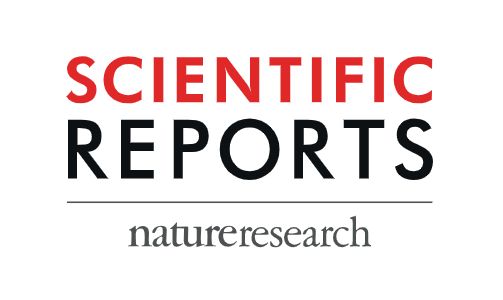


Syndrom poznawczo-uwagowy (CAS) to kluczowy konstrukt w metapoznawczym modelu psychopatologii i psychoterapii. Składają się na niego nieadaptacyjne wzorce powtarzającego się negatywnego myślenia i dysfunkcjonalne przekonania metapoznawcze. W tym podejściu teoretycznym jest on konstruktem transdiagnostycznym, leżącym u podłoża różnego rodzaju zaburzeń psychicznych. W tym wystąpieniu omówione zostaną badania korelacyjne dotyczące związków CASu z objawami psychopatologicznymi oraz badania neuroobrazowe dotyczące indukcji ruminacji u osób z wysokim i niskim nasileniem objawów CASu. Głównym celem było potwierdzenie transdiagnostycznego statusu syndromu poznawczo-uwagowego. Nasilenie objawów CASu jest powiązane z wyższym nasileniem różnych rodzajów objawów psychopatologicznych oraz jest związane z kilkukrotnie większym ryzykiem względnym rozpoznania zaburzeń psychicznych w obecnym momencie i w ciągu całego życia. Osoby z wysokim nasileniem objawów CASu różnią się także istotnie w zakresie połączeń funkcjonalnych w mózgu w kilku istotnych sieciach neuronalnych – sieci spoczynkowej, sieci wykonawczej i sieci istotności. Uzyskane wyniki mogą wskazywać na istotną rolę wysokiego nasilenia objawów CASu w etiopatogenezie różnego rodzaju zaburzeń psychicznych, co potwierdza jedno z głównych założeń metapoznawczej teorii zaburzeń psychicznych i rozszerza je o dodatkową perspektywę różnic w funkcjonowaniu mózgu u osób z różnym nasileniem objawów CASu.
Place: 1
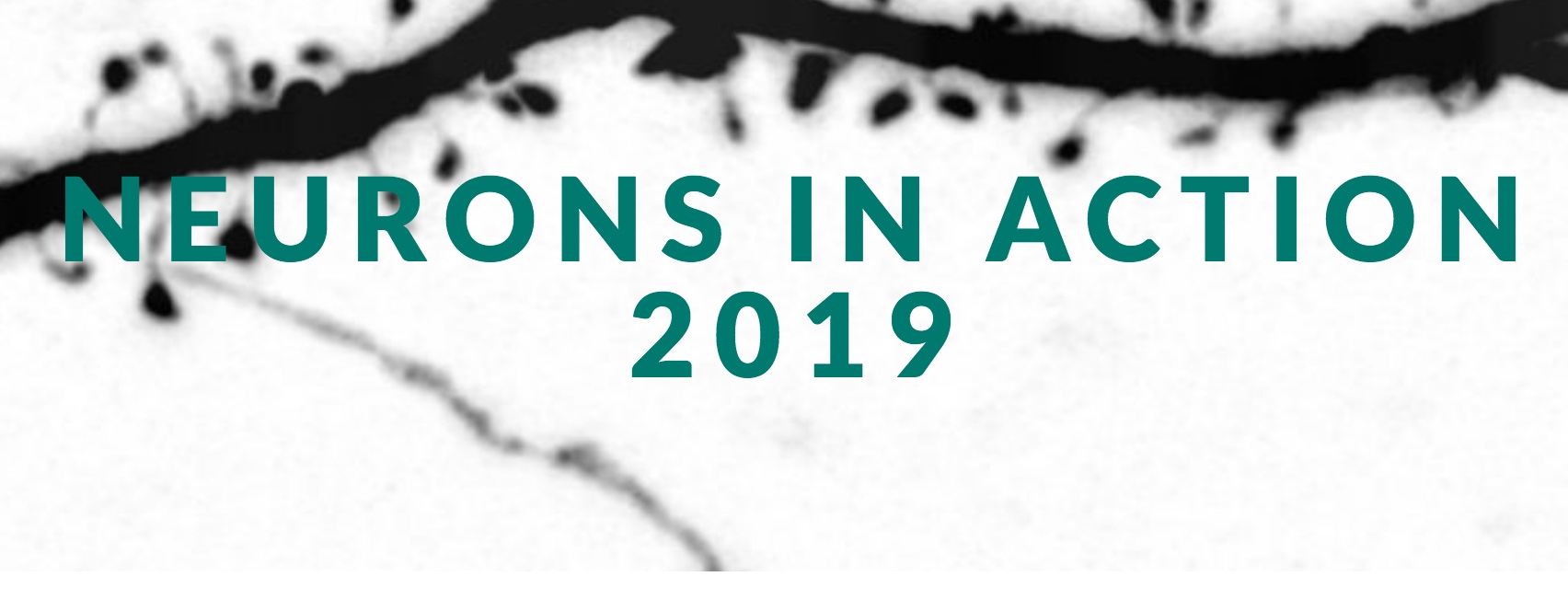
Neurons in Action 2019 is the 4th Nencki Symposium dedicated to plasticity of the nervous system. The symposium is a collaborative initiative of the research groups from the Institute. This year we will host scientists covering several themes we are fascinated by: neurobiology of spatial memory, emotions, addiction, social interactions, feeding, astrocytes, neuromuscular junctions and synaptic plasticity. NiA 2019 is aimed at PhD students, postdocs, older academics as well as all other fans of neurobiology. Our group is organizing one of the sessions: The riddle of human brain plasticity – from sensory deprivation to training (chair: Artur Marchewka) https://neuronsinaction.nencki.gov.pl
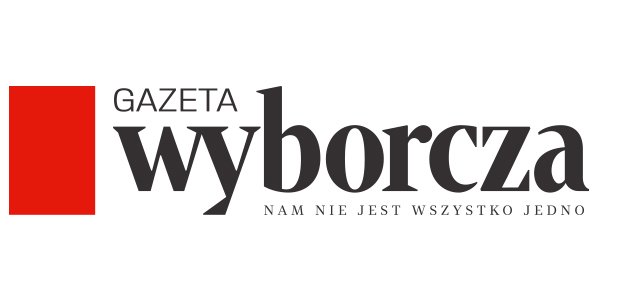
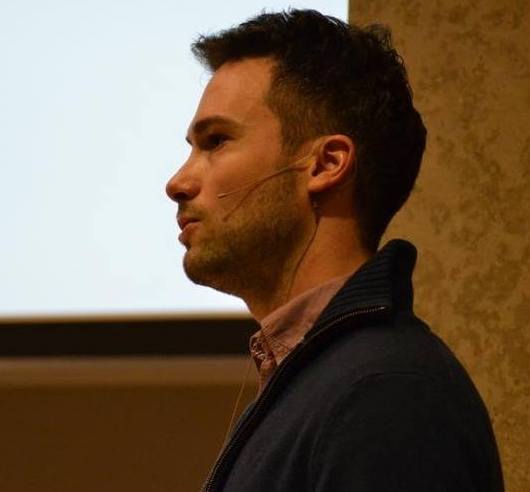
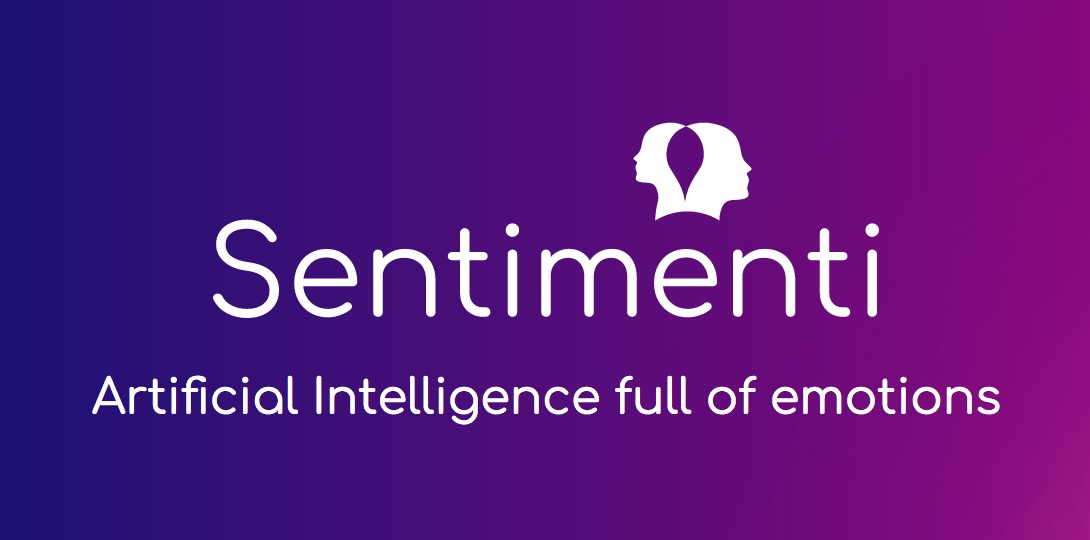
https://sentimenti.com/

Previous studies (e.g. Bola et al., PNAS 2017) suggest that the deafs’ auditory cortex preserves its task-specific function (i.e. rhythm processing) despite switching to a different sensory modality (visual). Still however remains unclear what exactly is „the specific task” persisting in the task specific cross-modal reorganization. Here we ask whether the role of task-specific in the auditory cortex in deaf humans concerns strictly particular function of rhythm processing, or can it be extrapolated to cognitively similar function without “rhythmical” component. Preliminary results show that the rhythm discrimination tasks activate the auditory cortex (posterior right STG) in the deaf and not in the hearing subjects for both visual and tactile modality. Interestingly, he interaction effect analysis (rhythmicality x cognitive load) shows that „task-specificicity” for the rhythms discrimination task is more prominent for tactile modality, than for visual modality. Moreover, simple effect analysis suggest that spatial sequences lead to the auditory cortex activation in the deaf independently on cognitive load, while for rhythm perception the cognitive load is crucial for cross modal activation to occur. Overall, the result suggests that the effect of cross modal reorganisation in the deaf can be less „task specific” than previously claimed.

Being congenitally blind affects not only everyday life experience and brain circuits, but also brain morphometry. Inspired by Jiang et al. (2009), we checked how the cortical thickness differs in blind and sighted subjects from Warsaw and Cracow (102 people). As an addition to this analysis we calculated local Gyrification Index (lGI) and applied the extension of the Freesurfer method - shape-adaptive algorithm introduced by Lyu et al. (2018). The results of the new lGI method are promising as they are less spatially blurred than in Freesurfer. During this presentation I will explain the analysis pipeline and methods as well as show the results of both thickness and gyrification analyses.

For many years, the idea of playing computer games has been perceived solely as a fruitless activity, an obstacle for achieving proper social skills, getting positive grades at school or, more generally speaking, becoming a fully functional member of the society. Over the last years, together with the technological revolution of the twentieth and twenty-first centuries, the games have gradually evolved from a rather banal and unrealistic two-dimensional environment to experience becoming more similar to a real-life activity. This allowed for a wide range of new game genres to erect. Due to the significant and continuously increasing impact that playing video games has been having on global society, the cognitive effects of video games have become an exciting matter to be considered on a scientific level. That being said, over the last twenty years, the number of video-gaming related papers published has risen from twenty in 2000 to almost four hundred in 2016. There have been tens of studies focusing on the possible cognitive impact of playing action video games. Many of those show that playing action video games (AVGs) has a positive impact on many cognitive skills: the ability to better track or switch between objects, faster processing, better oculomotor or executive control, visual short-term memory, visuospatial performance or working memory. Some studies even conclude that the process of playing games improves general cognitive skills. On the other hand, there are also numerous studies (including meta-analyses) that show negligible or no cognitive impact on any level. There is, however, only a handful of studies that focus on possible structural changes as an effect of playing a video game (and action video game in particular). Those do show that playing AVG induces grey matter thickness changes for example in the parahippocampal cortex, somatosensory cortex, superior parietal lobule or insula. The first aim of this preliminary study was to see whether or not approximately 30 hours of training is sufficient for any cognitive and structural changes to occur. Based on previous literature on the matter, a region of interest (ROI) approach was used to select structures of the brain that could be related to the gaming experience. The second aim of the study was to see whether or not a higher cortical thickness in specific structures can be predictive of the quality of playing throughout the training process. While the whole study did not yield any strong effects, it does show possible directions for future studies on this matter. This research was supported by the National Science Centre (Poland) Grant: 2013/10/E/HS6/00186 (to Aneta Brzezicka, PhD).

Vast quantities of food are thrown away every day which has a profound environmental impact, as well as undermines the efforts to achieve sustainable development and global food security. At the same time, interventions referring to moral judgment can be an effective tool to motivate behavior change. Since little is known about the underlying morals of food wasting behavior, the aim of our study was to directly answer the question whether food-wasting is viewed as an immoral behavior, and more specifically which moral intuitions are involved in moral judgment of this behavior. To address these questions, we developed a set of standardised scenarios based on a large-scale pilot study and we used them to collect neuroimaging and behavioral data. In the main study, 50 participants made moral judgments regarding food-wasting, disgusting, harmful, dishonest or neutral behaviors presented in these scenarios. In this presentation, I will introduce the results of our research and discuss them in the context of the evolutionary significance of food that might have led to seeing food-wasting as a moral transgression, and empathic involvement in moral judgment of wasting food.

The noninvasive estimation of neuronal receptive field (RF) properties in vivo allows a detailed understanding of brain organization as well as its plasticity by longitudinal following of potential changes. Visual RFs measured invasively by electrophysiology in animal models have traditionally provided a great extent of our current knowledge about the visual brain and its disorders. Voxel-based estimates of population RF (pRF) by functional magnetic resonance imaging (fMRI) in humans revolutionized the field and have been used extensively in numerous studies. However, current methods cannot estimate singleneuron RF sizes as they reflect large populations of neurons with individual RF scatter. Here, we introduce an approach to estimate RF size using spatial frequency selectivity to checkerboard patterns. Thismethod allowed us to obtain noninvasive, average single-neuron RF estimates over a large portion of human early visual cortex. These estimates were significantly smaller compared with prior pRF methods. Furthermore, fMRI and electrophysiology experiments in nonhuman primates demonstrated an exceptionally good match, validating the approach.
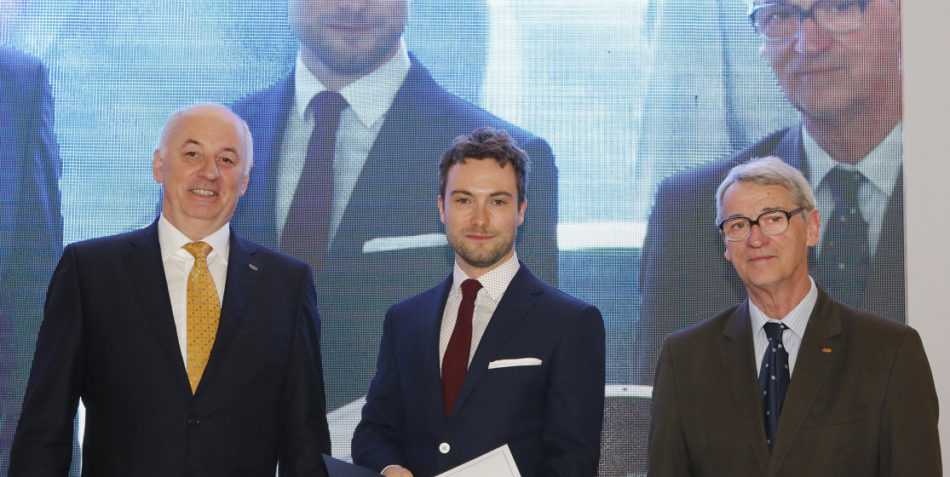

The P3b event-related potential (ERP) - a late brain response observed over parietal electrodes - is hypothesized to constitute a neuronal correlate of consciousness (NCC; Dehaene, 2011). However, recent studies refute this hypothesis by showing that, firstly, P3b might be related to cognitive processing rather than conscious access per se (Pitts, 2014) and, secondly, that P3b can be evoked by unconscious stimuli when these stimuli salient or important (Silverstein, 2015). The present study was conducted to further falsify P3b as an NCC by testing a hypothesis that stimuli related to “self”, which are processed preferentially and evoke P3b when presented consciously (Tacikowski, 2010), will generate P3b potential even when presented unconsciously. In the conducted experiment 3 types of stimuli were presented: subject’s own name, other name, or a blank (empty screen). Words were presented in masked (subliminal) or unmasked (supraliminal) condition. In each trial participants (N=30) performed either the subjective evaluation task or a forced choice identification task. Behavioral data indicated that conscious perception was highly degraded in the masked, but not in the unmasked trials. Analysis of the P3b component showed that, in contrast to other names, unconscious perception of the self name was related to greater P3b in the identification task, but not during the subjective evaluation task. At the same time preferential processing of consciously presented self name resulted in higher amplitude of P3b in both tasks. Therefore present study demonstrates that P3b can be evoked by an unconscious stimulus, provided it is task relevant and salient. It shows that attentional processes related to automatic preference of subjects for their own name can affect the amplitude of P3b. More generally, by showing that unconscious stimuli can cause spatially widespread and temporally delayed brain activations our finding falsify P3b component as NCC.

As humans, we have a remarkable ability to learn multiple languages. In this project, we focused on a very specific case of the language acquisition. Here, we investigate the plastic brain reorganization while subjects acquire Braille. Neuroimaging studies in recent decades have provided evidence of white matter plastic changes during any training. However, most studies focused only on pre-post training differences. In order to explore the detailed time course of brain plasticity studies must involve multiple time points (TP). In this study, sighted subjects participated in 5 diffusion MRI (dMRI) sessions during a tactile Braille reading course. Such a design and training offer a unique opportunity to study the time course of plasticity occurring both within and between sensory modalities. Through employment of fractional anisotropy (FA), a dMRI characteristic sensitive to white matter myelination, we provide an unprecedented insight into the neurobiological underpinnings of learning- associated brain microanatomy changes. From our results, it is clear that the most pronounced white matter changes occur not only at the onset of the training, but also within the next months of Braille course. During presentation, the speaker will explore the longitudinal diffusion MRI design and discuss the resulted microarchitectural changes evoked by tactile-motor training.

Among psychiatric disorders, considerable controversy has surrounded conditions that have been termed “behavioral addictions.” Arguably the prototypical behavioral addiction is gambling disorder, a condition that was classified as an impulse control disorder (as pathological gambling) in the fourth edition of the Diagnositc and Statisitical Manual (DSM-IV) and was reclassified as a substance-related and addictive disorder in the fifth edition (DSM-5), with similar classification changes having been described going from the tenth edition of the International Classification of Diseases (ICD-10) to the eleventh edition (ICD-11). A broader range of behavioral addictions has been proposed (for example, with respect to gaming and sexual behaviors), and data from multiple domains (phenomenological, clinical, neurobiological, genetic and others) suggest similarities (as well as differences) among these disorders and with substance-use disorders. Such findings have important implications for how disorders are classified and the prevention and treatment approaches tested and employed. In this presentation, recent findings relating to the neurobiology of gambling, gaming, compulsive sexual behavior and other disorders will be presented. Clinical implications relating to prevention and treatment will be discussed.

The advent of Diffusion MRI, along with computational tools for its analysis, has risen an opportunity to unveil tissue's microstructural information. Gaining this knowledge, one may give a key for brain connectivity which might be conceptualized with a labyrinth puzzle and a steel ball. The true fiber connections, based on observed water molecules displacements ('rolling balls'), could be interpreted as a pathway from region A to B within a muddle of multiple crossing paths. In the neuroanatomical studies, this information would confirm that two regions being examined are dependent or autonomous as it was or was not expected. Even though the topic sounds promising, there is a vast range of difficulties concerned in application and interpretation of diffusion derived information in research studies. In this presentation, diffusion principles along with signal analysis approaches will be covered. Moreover, technical issues of data acquisition will be depicted. The key part of the presentation will be dedicated to explanation of the most common Diffusion Tensor Imaging (DTI) approach with its intrinsic limitations. Finally, the speaker will explain what can be gained if one move beyond DTI in diffusion signal analysis.

Neuroplasticity Seminar

In everyday life we use central, foveal vision for processing details of the external environment and peripheral vision for processing features such as motion of the objects towards us and also for selecting fragments of the visual scene for further, detailed analysis by central vision. This normal specialization is impaired in some conditions. For example, 2,5 million people worldwide suffers from Retinitis Pigmentosa (RP), an uncurbable retinopathy, which causes the progressive peripheral to central loss of photoreceptors leading to tunnel vision. On the contrary, subjects affected by Stargardt Disease (STGD), suffer from central photoreceptor loss, which leaves visual peripheries untouched. We hypothesize, that the cortical representation of peripheral retina although deprived from retinal input in RP, remains functional (Burnat, 2015). In our preliminary, behavioral study, we used novel set of perceptual stimuli, specifically targeted at simultaneous assessment of central and peripheral processing to compare RP and STDG patients with control group. As a model of a peripheral vision loss in RP patients we artificially narrowed visual field in controls to check if transient loss of peripheral visual field differently affects perception than permanent and progressive loss in RP. We present preliminary behavioral data from 5 control subjects, 3 RP and 2 STGD patients. This work will be continued within frame of OPUS grant “Inputs from V5/MT to V1 in cortical reorganization triggered by Retinitis Pigmentosa: significance and functions” granted to Kalina Burnat.

Spoken and written language processing engages similar neural circuits in adults speaking different languages (Rueckl et al., 2014), with areas of print/speech overlap in the left inferior frontal and superior temporal gyri. However, children speaking different languages were never examined in a similar paradigm – when, in fact, childhood is the period when the reading network changes the most, and different scripts may support different reading strategies. Transparent scripts may encourage using phonological decoding (i.e. letter-by-letter reading), while opaque scripts – visual whole word recognition, thus the brain networks involved in reading should vary in readers of transparent Polish and opaque English (Ziegler & Goswami, 2005). Moreover, different skills may be needed to develop efficient reading, with phonological awareness being more important in transparent, and fluency/retrieval speed more important in opaque scripts. In this study we analyzed spoken and written language networks in young monolingual children learning to read in Polish or English matched for age, sex and reading skill. Similarly to Rueckl et al., regions of print/speech overlap were found for both languages in the left inferior frontal and superior temporal gyri, but their activation was differently related to phonological awareness and fluency/retrieval skills in Polish and English. During the presentation I will discuss the theoretical framework and the results, but I will also devote time to the methodological issues and potential difficulties associated with a multisite study.

Late time of speech emergence constitutes a risk factor for later language difficulties (Paul, 1993; Rescorla, 2005) including reading and writing deficits (Scarborough & Dobrich, 1990), some of which may last even until adolescence (Rescorla, 2009). Certain cognitive functions, such us phonological awareness are disrupted not only in late talkers but also in readers with dyslexia. Additionally brain structure alterations in preschool children with a history of late speech emergence and familial risk for dyslexia were reported (Raschle et al., 2015). In order to check the long lasting consequences of late speech emergence as well as common and distinct correlates of the age of speech emergence and dyslexia we performed behavioral and neuroimaging study in 120 elementary school (2nd and 3rd grade) children aged 7.23-10.7 (M=9.14, SD=0.61). We investigated language, reading, writing and phonological skills as well as brain structure in late and on-time talkers with and without developmental dyslexia. Four groups were selected: dyslexic late talkers (N = 18), typically reading late talkers (N = 23), dyslexic on-time talkers (N = 39) and typically reading on-time talkers (N = 40). We conducted two-way ANOVA analyses using both voxel based morphometry (VBM) and surface based morphometry (SBM). The analyses using VBM showed decreased grey matter volume (GMV) in late talkers’ cerebellum and bilateral putamen as well as increased GMV in the left planum temporale and left occipital pole. Additionally, an interaction between time of speech emergence and dyslexia was found in left fusiform gyrus with dyslexic late talkers having less GMV than the other three groups. This outcome will be discussed along with the SBM models which took into consideration not only grey matter volume but also area, thickness and curvature of the cortical sheet.

Major depressive disorder (MDD) is one of the most common psychiatric disorders around the world. It’s characterised by prolonged negative mood, lack of motivation, anhedonia, high level of anxiety and cognitive impairment. Treatment approach is either pharmacotherapy or psychotherapy, those two often combined. Therapies proven to be effective in MDD are cognitive behavioural therapy (CBT) and mindfulness based cognitive therapy (MBCT). Both interventions differently address impaired emotion regulation (ER) in MDD. CBT focuses on reinterpretation of the meaning of stimuli, which can alter affective response. Mindfulness focuses on awareness of inner states, and fully accepting them without judging. The goal of our study was to compare influence of CBT and MBCT on brain activity related to both ER strategies. In the first stage of the ongoing project 8 MDD patients took part in 8-week MBCT group training and 7 MDD patients took 8-week CBT group training. 11 MDD participants were in a waiting list control group (WL). All subjects underwent an fMRI experiment. Before the scan a qualified psychologist gave subjects detailed and exemplified instructions of the task, during which subjects were shown sad or emotionally neutral pictures, with one of three instructions: to change the interpretation to more positive (REAP), to be mindfully aware and accepting (MIND), or just to observe the photos (PASSIVE). After every condition participants were asked to score their performance and current mood. Pre-therapy fMRI results showed extensive activations including ACC and IFG during the REAP (REAP>PASSIVE), supposedly representing the cognitive effort to reinterpret the viewed scenes. In MIND>PASSIVE contrast no significant clusters were found, although insula was expected as it was shown to be correlated with mindfulness and self-awareness. This outcome can suggest that the subject naive to mindfulness techniques have difficulties in engaging in this kind of ER strategies. I will present those preliminary outcomes as well as talk in detail about the project design and future analysis plans.

Transcranial direct current stimulation (tDCS) of the posterior parietal cortex (PPC) can effectively modulate visuospatial attention. However, previous results are conflicting: some data evidence the role of PPC in biasing attention contra- or ipsilaterally depending upon stimulation polarity, as predicted by Kinsbourne’s ‘hemispheric rivalry account’, others findings suggest that PPC controls spatial attention across the entire visual field. We investigated the effects of two opposite polarities of dual tDCS over bilateral PPC (P3 and P4 of the EEG 10-20) on deployment of spatial attention during a visual detection task in healthy volunteers. Near-threshold luminous stimuli were presented, before and after dual tDCS of PPC (i.e. right cathodal-left anodal or RC-LA and, vice versa, RA-LC) or sham stimulation. RC-LA tDCS prevented fatigue on the detection task, compared to sham and RA-LC tDCS: detection performance dropped after RA-LC and sham stimulation but not after RC-LA. This effect was independent from the side of stimuli presentation. Our findings support the role of PPC in top-down attentional control and suggest that dual right ‘inhibitory’ cathodal/left ‘facilitatory’ anodal tDCS of PPC enhances detection of near-threshold visual stimuli, regardless of hemifield. These findings may have important theoretical implications for translational research.

In psychological science, more and more attention has recently been given to ecological paradigms. Scientific community agrees that research intending at modelling real-world situations cannot rely solely on experiments performed in isolated labs (Matusz et al., 2018). Strongly convinced of the importance of naturalistic approach to research elucidating social behaviors, we have recently conducted a study introducing ecological modifications to the human observational fear conditioning paradigm (Haaker et al., 2017). Results turned out to be more complex than expected, suggesting the impact of a new, ecologically valid experimental situation. What is more, obtained effects gave rise to a new hypothesis of a modulating role of attention placement for the relationship between individual emotional contagion susceptibility and observational fear learning effectiveness. This hypothesis constitutes the core of my Preludium proposal. The project is aimed at further explanation of the human observational fear learning phenomenon, taking into account good research practices recently accentuated in a scientific discourse: employing naturalistic paradigms and increasing results generalizability. During the seminar, theoretical underpinnings as well as a detailed study design will be discussed. I kindly invite you to attend this talk. Every feedback will be more than appreciated!

ZAPROSZENIE NA SEMINARIUM NAUKOWE
Pracownia Obrazowania Mózgu serdecznie zaprasza w dniu 13 listopada 2018 roku o g. 14:00 na Seminarium Naukowe: Wytyczne dotyczące doboru barwy światła w celu poprawy sprawności psychofizycznej człowieka o skrajnych chronotypach na podstawie badań fMRI
Prezentują mgr inż. Bartosz Kossowski oraz dr hab. Artur Marchewka, prof. IBD
Miejsce seminarium : Sala 1 na I piętrze - Instytut Biologii Doświadczalnej im. Marcelego Nenckiego Polskiej Akademii Nauk, ul. Ludwika Pasteura 3, 02-093 Warszawa (wskazówki dojazdu)
Plan seminarium:
- Wprowadzenie do teorii światła i barwy
- Charakterystyka techniczna urządzeń wykorzystanych w projekcie
- Charakterystyka zastosowanych barw światła: niebieska, czerwona, zielono-niebieska, światło wygaszone
- Schemat badania
- Zadania eksperymentalne (n-wstecz, hamowanie reakcji)
- Wyniki badań behawioralnych i fMRI
- Wytyczne doboru barwy światła w celu poprawy sprawności psychofizycznej człowieka
Projekt został przeprowadzony we współpracy z Centralnym Instytutem Ochrony Pracy - Państwowym Instytutem Badawczym (CIOP-PIB) w ramach Programu Wieloletniego „Poprawa bezpieczeństwa i warunków pracy” IV etap (2017-2019) – numer projektu II.N.04.B tytuł: „Wpływ barwy światła na sprawność psychofizyczną człowieka o skrajnych chronotypach z wykorzystaniem metody funkcjonalnego rezonansu magnetycznego”.
Prezentacja z seminarium naukowego
***Nencki Institute Seminar*** There is still a lot to uncover about how the adult brain changes in response to learning. One of the most unique human abilities is to acquire new language (L2). During my PhD project I focus on the special case of L2 – sign language – which requires not only acquisition of new vocabulary and linguistic rules, but also switching to a different sensory modality. Using functional magnetic resonance imaging (fMRI) and longitudinal approach (5 time points in 8 months), we explored the dynamics of reorganization in the large-scale functional network, induced by sign language acquisition in hearing adult learners. The most pronounced changes occurred at an early stage of learning (3 months after the beginning of linguistic training) as reflected by increased activation in language-related perisilvian network, together with parieto-occipital visuospatial areas. (Experiment 1). Further comparisons between sign and spoken languages (Experiment 2) as well as hearing learners and deaf signers (Experiment 3), revealed enhanced involvement of bilateral parietal areas (e.g. superior parietal lobule – SPL) during sign language comprehension, but only in the hearing group. Therefore, to test the role and potential lateralization of SPL we additionally used a transcranial magnetic stimulation method (TMS; Experiment 4). TMS applied to right SPL significantly decreased performance in both hearing and deaf participants, while left SPL stimulation resulted in the lower performance only in the hearing group.
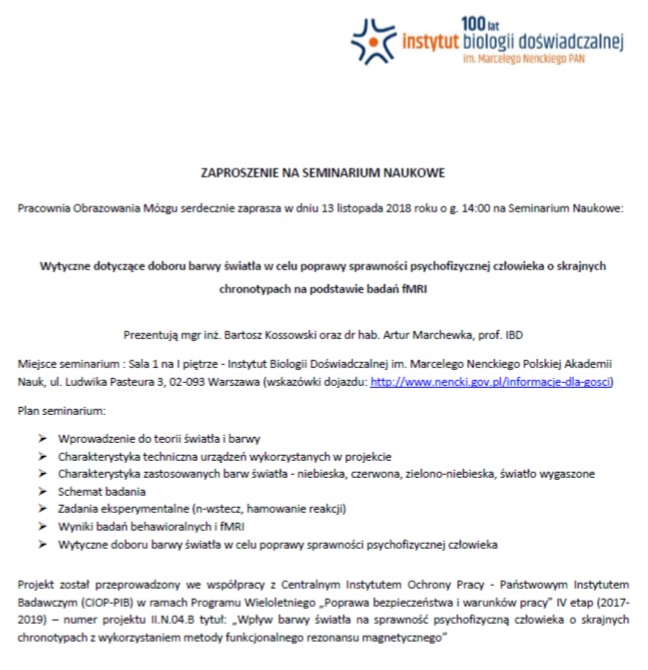


Social interactions are essential part of our everyday life. Theory of mind (ToM) is an ability to understand other people mental states and is necessary for effective communication with others. Reading Mind in the Eyes Test (RMET) is a task used to measure ToM. In RMET adjectives describing mental states have to be attributed to photographs of the human eyes. It is mostly used with photographs of adults, however prior studies suggest that child abusers may have intact ability to understand mental states of children. In order to investigate this problem in the future, we have developed Nencki Children Eyes Test (NCET), in which photographs of children are utilized. NCET was validated on 30 participants. Then we used both tests (NCET and RMET) in fMRI settings to better understand neuronal mechanisms of TOM in childless adults. Therefore, we recruited 20 (9 males) subjects who are/were working with children (WWC) and 19 (9 males) subjects who have never worked with children (NWWC). Based on previous studies we expected that the WWC group would be better in NCET test than the NWWC group. In line with our hypothesis WWC group showed significantly better accuracy in NCET, yet there were no between group differences in RMET. At the neuronal level we observed increased activation in the left (IFG) when compared WWC to NWWC group, during NCET. Moreover the WWC group showed increased activation in the left and right IFG, when NCET induced activation was compared directly to RMET. On the other hand, the NWWC group showed increased activation the right Superior Temporal Sulcus (STS) during RMET as compared to NCET. These results are in line with previous findings showing crucial involvement of IFG and STS in ToM. Increased activation of L_IFG in WWC group could be interpreted as better understanding of mental states of children which is in line with behavioral data. STS is involved in ToM, language, face processing and is also more active when perceived emotion is understandable by the observer. Increased activation in this region, in NWWC group, during attribution of adult mental states suggests that this group can understand emotion of adults better than emotions of children. Current findings implicates that working experience with children improve understanding mental states in youngsters and also influence brain response in ToM network. Study supported by: National Science Center Grant [2016/21/B/HS6/01143]

The language system faces major cognitive problems when presented with an unknown script for the first time. Neural representations of the unknown words must be built by ortho-graphic or phonological decoding of the written word and integrated into lexical and semantic networks to achieve understanding. Further in the process of Second Language acquisition, connections between central nodes of the language network should be reinforced and lexico-semantic access should be facilitated, resulting in decreased activation of regions within and outside of the classical language network. Here, we report from a longitudinal fMRI study that tracked functional changes in the language network of beginning learners over an unpreced-ed long period of one year. One pre-exposure, three within learning-period and one follow-up scan was taken in lexical and semantic decision tasks. The results show a comparable time course in both tasks. Classical language areas (Left Inferior Frontal Gyrus, left Precentral Gyrus, and bilateral Supplementary Motor Cortex), and cognitive control areas (Inferior Pa-rietal Lobe) showed stronger activation in response to Greek words after 3 months of formal classroom instruction. The activation in the language network remained constant throughout the rest of the study even though participants continued visiting the Greek course. Our re-sults confirm that Second Language understanding can be achieved after a short time of in-struction and relies on classical networks. We also confirm that cognitive control areas are recruited in second language processing, eventually to monitor conflict between languages. Observing stable activation in language networks while proficiency of our participants in-creased, we suggest that functional activity in the Language Network depends on tasks de-mand rather than on language proficiency.
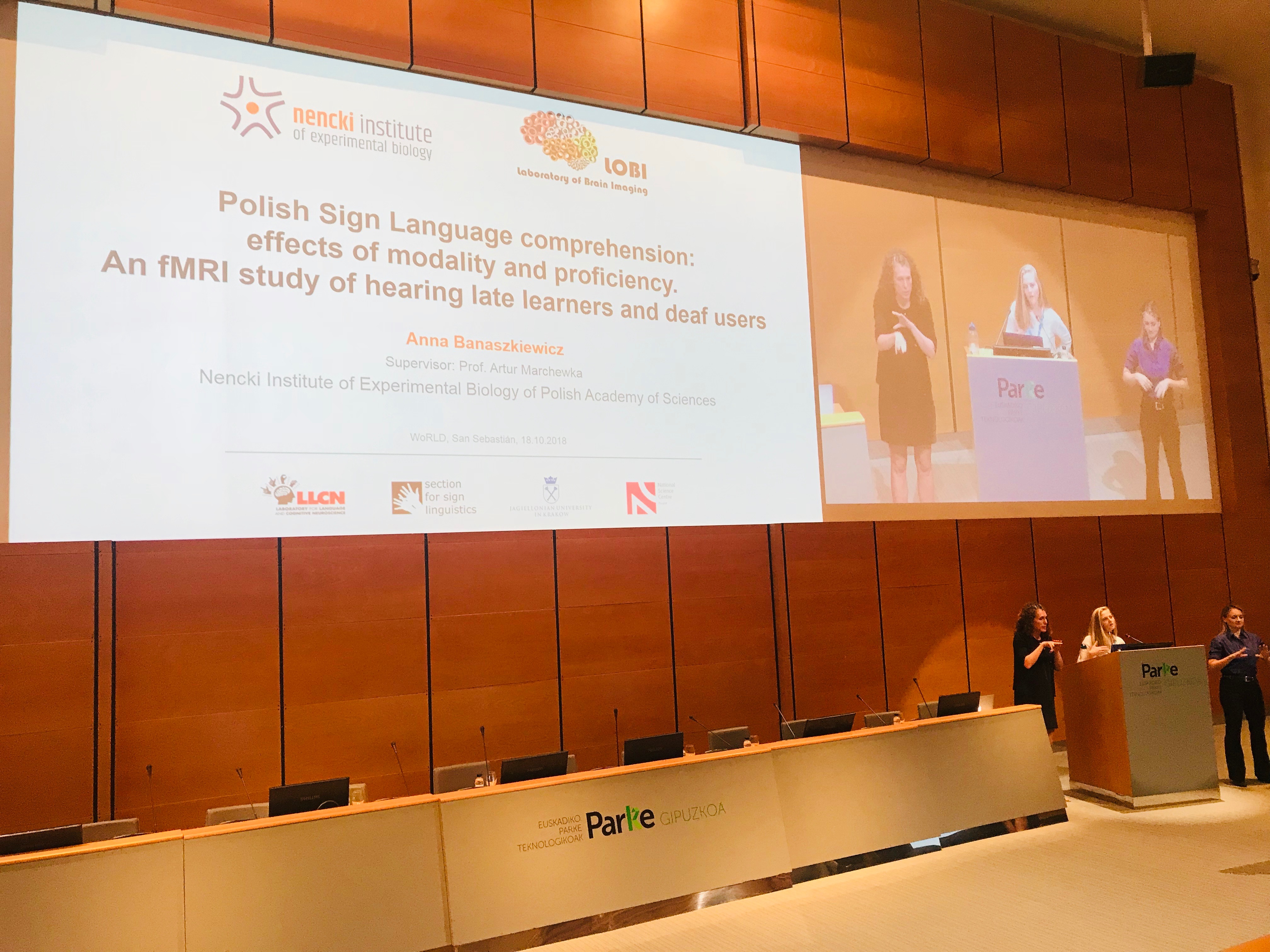

Emisje otoakustyczne (OAE) to bardzo ciche dźwięki wydobywające się z uszu, które mogą być zarejestrowane przy pomocy czułego mikrofonu włożonego do kanału słuchowego. Mogą one służyć jako metoda oceny słuchu, która jest nieinwazyjna i nie wymaga od pacjenta subiektywnej decyzji, czy dany dźwięk jest słyszalny. Te zalety sprawiły, że jest ona powszechnie stosowana do badań przesiewowych u noworodków. W czasie mojej prezentacji przybliżę czym są emisje otoakustyczne i jak można je mierzyć oraz opowiem o wynikach mojej pracy przeprowadzonej na Wydziale Fizyki UW we współpracy ze Światowym Centrum Słuchu w Kajetanach. W ramach projektu magisterskiego porównywałam dwie metody pomiaru emisji – OAE wywołane bodźcem tonalnym (Stimulus Frequency OAE) i OAE produktów zniekształceń (Distortion Product OAE). Tylko jedna z tych metod (DPOAE) jest obecnie używana klinicznie, druga natomiast wydaje się być lepiej zrozumiana i łatwiejsza do interpretacji. Celem mojej pracy było sprawdzenie czy jest ona wiarygodna i porównywalna ze stosowanym obecnie protokołem DPOAE. Na koniec opowiem krótko czym w najbliższym czasie będę się zajmować w ramach mojej pracy w LOBI.

W czasie wykładu zostaną omówione wynik analiz fMRI z uwzględnieniem rodzaju światła i chronotypu. Projekt został przeprowadzony we współpracy z Centralnym Instytutem Ochrony Pracy - Państwowym Instytutem Badawczym (CIOP-PIB) w ramach Programu Wieloletniego „Poprawa bezpieczeństwa i warunków pracy” IV etap (2017-2019) – numer projektu II.N.04.B tytuł: „Wpływ barwy światła na sprawność psychofizyczną człowieka o skrajnych chronotypach z wykorzystaniem metody funkcjonalnego rezonansu magnetycznego”.
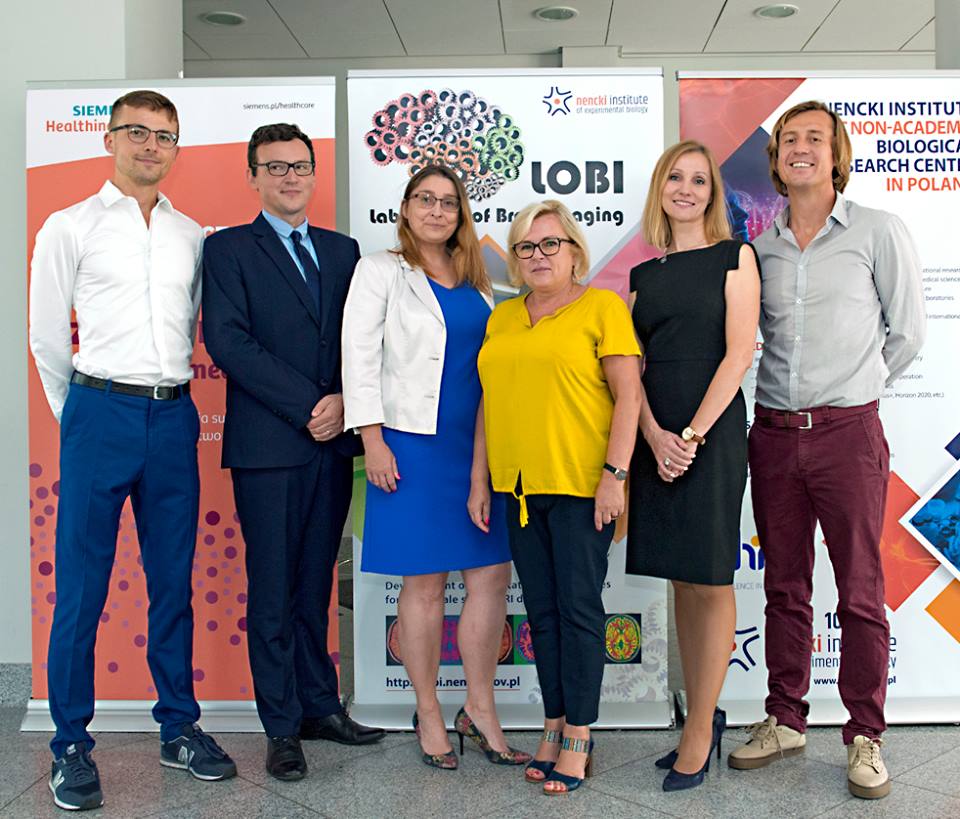

TBA

Prokrastynacja, czyli tendencja do dobrowolnego odwlekania decyzji lub działań, dotyka średnio 15 – 20% społeczeństwa (Harriot & Ferrari, 1996) i nawet 80 – 90% studentów (za Steel, 2007). Prokrastynacja prowadzi do niższego poziomu wykonania zadań (np. Ariely i Wertenbroch, 2002), a przez to do niższej satysfakcji z osiągnięć i jakości życia (za Steel, 2007). Trwałość tego szkodliwego wzorca zachowań wskazuje na trudności z samokontrolą. Badania kwestionariuszowe wskazują na wysoką korelację prokrastynacji także z impulsywnością, problemami z regulacją emocji oraz strachem przed porażką (np. Steel, 2010; Simpson & Pychyl, 2009). Wcześniejsze badanie w paradygmacie Go/NoGo (Michałowski et al., 2017) wykazało istotne różnice w czasach reakcji w próbach następujących bezpośrednio po popełnionym błędzie - w grupie prokrastynatorów (HP, high procrastination) czasy reakcji po popełnionym błędzie były krótsze, co sugeruje trudności w przetwarzaniu informacji o popełnionych błędach. Różnica ta była jednak widoczna tylko w warunku, w którym błędy były karane finansowo (brak różnic w warunku z nagrodami i neutralnym). Postanowiliśmy więc sprawdzić, czy u HP uczenie na błędach zachodzi inaczej niż w grupie osób bez tendencji do odwlekania (LP, low procrastination). W tym celu przeprowadziliśmy badanie z zastosowaniem zadania w paradygmacie Probabilistycznego Naprzemiennego Uczenia się (Probabilistic Reversal Learning Task), które wymaga adaptacji do zmieniającego się prawdopodobieństwa wygranej/przegranej różnych bodźców. Typowe zadanie eksperymentalne zostało zmodyfikowane przez stworzenie oddzielnych bloków z nagrodami i z karami. Stawialiśmy hipotezę, że w związku z deficytem kontroli zachowania i wyższą wrażliwością na kary (zmierzoną przeznaczonym do tego kwestionariuszem), osoby z grupy HP będą radziły sobie gorzej w warunku z karą. W badaniu wzięło udział 60 studentów (po 30 w grupach HP i LP) zrekrutowanych na podstawie Kwestionariusza Problemów Związanych z Uczeniem się (Study Problem Questionnaire – SPQ) (Schouwenburg, 1995; Wichrowski, 2008). Analiza danych polegająca na zaimplementowaniu do danych modelu uczenia się Rescorli i Wagnera (Rescorla & Wagner, 1972) przyniosła istotnie statystycznie wyniki dla parametru α – określającego wrażliwość na błędy. W warunku z nagrodą parametr α nie różnił się między grupami, podczas gdy w warunku z karą był on istotnie wyższy w grupie LP, a pozostawał bez zmian w grupie HP. Otrzymane wyniki mogą sugerować, że HP mają trudności ze wzmożeniem kontroli w sytuacjach, które wzbudzają negatywne emocje.

Perception of facial expression is crucial to understand emotional state of our partner(s) in social interactions. In recent years, there has been ongoing debate on the role of two distinct processes involved in decoding faces: one based on the features of the face, and the other focused on grouping those features into holistic representation. Although much behavioral research documents existence of those two cognitive processes, their neural mechanisms are still debated. Previous fMRI results from our laboratory showed distinct networks recruited by these processes when observing static happy and angry faces (Meaux and Vuilleumier, 2016). However, in real life, expression features are not only seen together but also move together, hence their grouping might also depend on temporal synchrony. Building on those results we investigated brain systems for analytic and holistic processing of dynamic facial expressions where eye and mouth features could move at the same or different points in time. 24 participants in our study viewed dynamically changing facial stimuli with different emotions (angry, happy, joy or sad) expressed either in both parts together (full condition) or in one part (upper or lower) before the other (feature condition). The whole brain GLM analysis revealed that both right and left Inferior Occipital Gyrus, bilateral Fusiform Gyrus are involved in processing both holistic and analytic information about faces. The processing of synchronous expressions (holistic mechanism) was distinctively present in Right Anterior Cingulate Cortex and bilateral Superior Frontal Gyrus. Whereas seeing expressions in which one part of the face unfolded before the other (e.g. eye then mouth) activated the right Superior Temporal Sulcus (STS) and also right Inferior Frontal Gyrus (IFG). The results show also that prolonged attention to features of a face (e.g., angry mouth) activates amygdala and parts of analytic system such as STS even when synchronous expressions are presented. Finally, this study revealed that individual differences in neuroticism have an impact on amygdala and the analytic system activity when processing features of angry faces. Overall, these results show specific roles for STS and IFG in analytic processing of dynamic expression features, while more medial and rostral brain areas of the face processing network are sensitive to holistic synchronous expressions.

https://scholar.google.nl/citations?user=4VtrQcMAAAAJ&hl=en&oi=ao

Is visual awareness dichotomous, gradual, or both? Both empirical results and theoretical accounts have provided contradictory answers to the question regarding the nature of the threshold separating unconscious and conscious processing of visual stimuli. In this talk, I will present two candidate factors that might influence the gradualness of visual awareness, namely: (i) the dominant level of processing in the hierarchy of the visual system and (ii) the strength of attentional engagement in temporal selection. Based on the available empirical evidence, as well as theoretical accounts, I hypothesised that imposing either high processing level or high attentional engagement leads to the decreased gradualness of visual awareness. To test these hypotheses, I conducted two experiments employing a Posner and Mitchell’s (1967) task, which was designed for manipulating levels of processing, and three experiments applying a variant of a rapid serial visual presentation task (RSVP; Broadbent & Broadbent, 1987), typically used to study temporal attention. The results of the experiments from the first line of the study revealed that the level of processing imposed by the demands of an experimental task modifies the gradualness of visual awareness in line with the prediction. The results from the second line of experiments were less conclusive: attentional engagement seemed to alter the gradualness of visual awareness, but not in the anticipated way. Taken together, the results suggest that both levels of processing and temporal attention modify the gradualness of visual awareness. However, there are presumably other contributing factors that shape the conscious visual experience. Such factors, such as previous experience, expectation, and context, need to be addressed in the further empirical investigation.

Cortical signal diversity constitutes a robust neuronal marker of global states of consciousness. It has been demonstrated that, in comparison to resting wakefulness, signal diversity is lower during unconscious states, and higher during psychedelic states. A plausible interpretation of these findings is that neuronal signal diversity corresponds to diversity of subjective conscious experience. Therefore, in the present study we varied an information rate processed by the subjects and hypothesized that greater information rate will be related to richer and more differentiated phenomenology and, consequently, to greater signal diversity. To test this hypothesis speech recordings (excerpts from an audio-book) were presented to subjects at five different speeds (65%, 83%, 100%, 117%, 135% of the original speed). By increasing or decreasing the speed of recordings we were able to, respectively, increase or decrease the presented information rate. We also included a backwards (unintelligible) speech presentation and a resting-state condition (no auditory stimulation). We tested 19 healthy subjects and analyzed the recorded EEG signal (64 channels) in terms of Lempel-Ziv complexity (LZs). We report the following findings. First, our hypothesis was not confirmed, as comparing LZs among five speeds of an audio presentation we found no significant effect of the information rate on diversity. Second, we found that LZs during the resting-state was greater than during processing of both meaningful and unintelligible speech. Third, topographic analysis indicates that two clusters of electrodes exhibited greater LZs during the resting-state condition: a centro-parietal cluster extending laterally and a more focal centro-frontal cluster. Finally, an additional analysis uncovered a gradual decrease of diversity over the time-course of the experiment, which might be linked to decreasing vigilance. We thus speculate that higher signal diversity during the unconstrained resting-state might be due to a greater variety of experiences, involving mind wandering and spontaneous attention switching between various stimuli and modalities.

See the program to find out about LOBI talks and posters

Previous studies showed that children with dyslexia (with both spelling and reading problems) hypoactivate left hemisphere language regions, specifically temporo-parietal and occipito-temporal cortex. But it remains unknown which of the reported alterations could be attributed to reading and which to spelling disorder. This is a first large fMRI study (N=170) that aimed at identifying the basis of reading and spelling deficits in brain activity in children. We examined 170 Polish-speaking children (aged 8-13 years) with different cognitive profiles: typical in reading and spelling (n=65), with isolated reading impairment (n=20) and spelling impairment (n=30) and with deficits in both spelling and reading (n=55). All participants performed a battery of phonological tasks in fMRI (minimal pair discrimination, rhyming, first phoneme matching). Series of two-ways ANOVAs were used to distinguish the unique contribution of spelling and reading effects in each task. The main effect of reading was found in underactivation of the left temporo-parietal cortex (dorsal stream), connected with the phoneme-to-grapheme mapping whereas main effects of spelling in the left occipito-temporal cortex (ventral stream) associated with the orthographic representations. Additionally, compensatory mechanisms in the right hemisphere were present in ventral regions for poor readers and in dorsal for poor spellers.

Bodily signals can modulate the access of external stimuli to perceptual awareness. It has been shown – mainly in the visual domain – that afferent cardiac information can affect sensory processing. Here, we investigated the relationship between the cardiac cycle and perceptual sensitivity for somatosensory stimuli. We recorded electrocardiograms of 33 healthy volunteers while near-threshold electrical pulses at a fixed intensity were applied to their left index finger. The detection performance relative to the heartbeat was examined with two complementary analyses. Circular statistics showed that the detection performance was not uniformly distributed across the cardiac cycle: near-threshold stimuli presented towards the end of the cardiac cycle (at diastole) were more likely to be correctly detected (hits), whereas stimuli presented at the beginning of the cardiac cycle (at systole) showed a tendency to be missed. Analysis based on signal detection theory indicated that the accumulation of hits towards the end of the cardiac cycle was due to a higher sensitivity but not due to changes in response criterion. In the follow up study, we replicated these results and further showed that detection enhancement is accompanied by differences in evoked potentials in the somatosensory cortex. Thus, our findings demonstrate that perceptual awareness for near-threshold stimuli varies across the cardiac cycle and, more generally, suggest that the state of the body influences how we perceive the world.


Syndrom poznawczo-uwagowy (cognitive-attentional syndrome, CAS) to styl myślenia polegający na zamartwianiu się i ruminacjach, koncentrowaniu się na zagrożeniach i wynikający z nieadaptacyjnych przekonań metapoznawczych. Według teorii metapoznawczej CAS jest głównym czynnikiem powodującym i podtrzymującym objawy zaburzeń depresyjnych i lękowych. Wiele badań wskazuje na związki nasilenia objawów CASu z zaburzeniami psychicznymi różnego rodzaju, ale nie istnieją jeszcze badania eksplorujące mózgowe podłoże tego syndromu. W prezentowanym badaniu skupiliśmy się na różnicach w procesie ruminacji między osobami z wysokim i niskim nasileniem CASu. Z ponad 1200 osób wybrane zostało po n=45 osób ze skrajnymi wynikami w miarach CASu, osoby te przeszły procedurę indukcji ruminacji w skanerze MR. Na procedurę tę składały się dwa warunki – osoby badane miały za zadanie myśleć o zdaniach wywołujących ruminacje oraz zdaniach abstrakcyjnych. Każde zdanie było prezentowane przez 30s w blokach po 5, po dwa bloki na każdy warunek. Po każdym bloku badani oceniali swój poziom lęku, smutku oraz zaangażowania w myślenie. Podczas prezentacji zostaną przedstawione wyniki dotyczące samoopisu badanych oraz aktywności mózgu w trakcie indukcji ruminacji. Główny nacisk zostanie położony na różnice między grupami osób z wysokim i niskim poziomem CASu oraz różnice między warunkami ruminacyjnym i abstrakcyjnym.

I have created a plugin for Horos DICOM browser which helps in creating BIDS datasets. It is ready to use and publically available on GitHub. During the meeting I will demonstrate the usage of the plugin using several examples. The aim of this meeting is twofold: to show how the plugin works and, by encouraging its usage, to solicit feedback regarding potential improvements or bug fixes.

Na świecie ponad 19 milionów dzieci w wieku szkolnym jest niewidomych i nabywa umiejętność czytania za pomocą innego niż zwykle zmysłu – dotyku zamiast wzroku. Mimo to nie wiemy właściwie nic na temat nabywania umiejętności czytania brajlem. W naszym projekcie chcielibyśmy odpowiedzieć na pytanie czy nabywanie umiejętności czytania brajlem zmienia strukturę i funkcjonowanie mózgu niewidomych dzieci podobnie do nabywania umiejętności czytania wzrokowego u dzieci widzących. Czy istnieje w mózgu uniwersalna, niezależna od wykorzystywanego zmysłu sieć odpowiadająca za czytanie? Podejrzewamy, że korzystanie z innego zmysłu – dotyku – i seryjna natura brajla (aby przeczytać wyraz trzeba kolejno przeskanować literę po literze, nie można przeczytać całego wyrazu na raz) w porównaniu do jednoczesnego i równoległego przetwarzania wzrokowego (czyli czytania całymi wyrazami) będą miały odzwierciedlenie w pracy mózgu. Sądzimy, że znajdziemy rejony mózgu zaangażowane wyłącznie w czytanie wzrokowe, wyłącznie w czytanie dotykowe, ale także rejony wspólne dla czytania wzrokowego i dotykowego. Dodatkowo, chociaż naukowcy już dawno sugerowali istnienie dysleksji w brajlu, badania na temat czytania brajla ograniczone były do dorosłych dobrze czytających osób niewidomych. Podobnie jak niektóre dzieci widzące, część dzieci niewidomych wykazuje specyficzne trudności związane z czytaniem brajla, które trudno wytłumaczyć. W obecnym projekcie proponujemy przekrojowe porównanie pomiędzy trudnościami w czytaniu u dzieci niewidomych i widzących na poziomie behawioralnym i neuronalnym. Mamy nadzieję, że uda nam się określić udział różnych zdolności poznawczych i sensorycznych w czytaniu wzrokowym i dotykowym i przebadać specyfikę trudności czytania w brajlu. Wstępne analizy kilkorga dzieci niewidomych ukazują wielką heterogeniczność zarówno w poziomie wykonywania testów behawioralnych jak i aktywacji mózgowych.

Acquisition of a second language (L2) involves visual and auditory processing of initially meaningless stimuli. Integration of these sensory information into ventral streams of the language processing network allows access to conceptual-semantic information. Integration in dorsal streams provides access to a sensory-motor interface, necessary for speech production (Hickok, 2012). In semantic decision tasks, proficiency modulates changes in the L2 processing network (Wartenburger et al., 2003). In the present study, we investigated changes in functional plasticity in response to lexical and semantic decisions while participants were enrolled in a Greek course for beginners. The language course was designed to meet the requirements of this particular study and lasted 8 months. At 5 time points – before the course, after 3, 6, and 8 months of instruction and 3 months after the end of the course - participants were invited to functional magnetic resonance imaging (fMRI) sessions. Tasks in the scanner were presented in both, L1 (Polish) and L2 (Greek) and in two different sensory modalities (audio and visual). We analyzed the longitudinal data set with a focus on the development of L2 network relative to L1 network over time. Our results show changes in the language network that are driven by the first three months of instruction to Greek language. We observe main effects of time that are unique to L2 networks in the visual modality. In the auditory modality, these effects are weakened or absent. For visual processing, both, in lexical and semantic tasks, we observe time-related changes within the conceptual-semantic interface (inferior temporal gyrus), the sensory-motor interface (supplementary motor area, precentral gyrus) and fusiform gyrus. These networks are comparable to those observed in beginning readers for L1 (Chyl et al., 2017; Liebig et al., 2017).
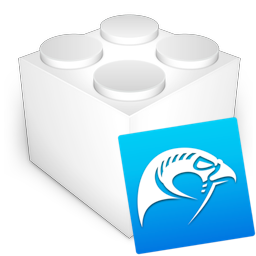

Purpose The prevalence and long-term consequences of dyslexia make it crucial to look for effective and efficient ways of its therapy. Action video games (AVG) were implied as a possible remedy for difficulties in reading in Italian and English-speaking children (Franceschini et al., 2013, 2017). However, the studies examining the effectiveness of AVG application in dyslexia suffered from significant methodological weaknesses such as small sample sizes and lack of a control group with no intervention. In our study, we tested how two forms of training: based on AVG and on phonological non-action video games (PNAVG), affect reading in a group of fifty-four Polish children with dyslexia. Method Fifty-four dyslexic children (36 boys, 18 girls), mean age 11.0 years (range 9.0–13.2) participated in the training programme involving 16 hours of supervised playing either AVG or PNAVG. Participants’ reading skills, as well as phonological awareness, visual selective attention and rapid naming were assessed before and after the training. Additionally, sixteen children (15 boys, one girl), mean age 11.5 years (range 8.8 – 14.0) participated in the project as a dyslexic control group with no intervention. The control group participated in the same online assessment of reading skills as both training groups. Results Both speed and accuracy of reading increased in AVG as much as in PNAVG groups. Moreover, both groups improved in phonological awareness, selective attention and rapid naming. Critically, the reading progress in the two groups did not differ from a dyslexic control group which did not participate in any training. Thus, the observed improvement in reading in AVG and PNAVG can be attributed either to the normal reading development related to schooling or to test practice effect. Conclusions Overall, we failed to replicate previous studies: Neither AVG nor the PNAVG designed for the current study remedy difficulties in reading in school children.

According to the police statistics in Poland during the years 2007-2011 more than 46.000 people were victims of a sexual crime. The majority of the victims were juveniles (~40.000 individuals), among them over 75% were children under age of 15. Pedophilic rape and molesting are the most common sexual crimes in Poland and also worldwide. Most of the functional magnetic resonance (fMRI )studies on pedophilia were focused on brain activation during the presentation of sexual context. This findings suggest that pedophiles present similar patterns of brain’s actvity as a control group, when exposed to preferable sexual stimuli. There is also neuroimagng evidence for deficits in emotional processing and inhibition control in pedophilic individuals. However the underlying neural mechanisms of these deficits are not well known and need further exploration. I will present state of the art, aims of the project, which focus on expanding the knowledge of the neuronal mechanisms in pedophilia and progress in preparation of the fMRI study.

Nauka czytania jest procesem złożonym i wieloetapowym. Jednakże jednym z pierwszych i najważniejszych etapów jest opanowanie umiejętności kojarzenia danej litery z odpowiadającą jej głoską. Umiejętność ta jest niezbędna dla wykształcenia płynnego czytania. Według najnowszej definicji, to przede wszystkim trudność w automatycznym dekodowaniu (zdolność integracji i transformacji liter na głoski) charakteryzuje dysleksję rozwojową. Rodzinny charakter występowania dysleksji sprawia, że u dzieci, u których jedno z rodziców lub rodzeństwa ma zdiagnozowaną dysleksję prawdopodobieństwo wystąpienia dysleksji rośnie z ≈ 10 % do nawet ≈ 50%. W obecnym badaniu postanowiliśmy odpowiedzieć na pytanie: Czy dzieci z rodzinnym ryzykiem dysleksji (FHD+) wykazują (już na wczesnym etapie nauki czytania) różnice w aktywacji mózgu na bodźce związane z kojarzeniem litery z głoską. W tym celu przebadano 94 siedmioletnich dzieci: 38 dzieci FHD- oraz 56 dzieci FHD+ przy użyciu testów językowych oraz rezonansu magnetycznego, podczas którego prezentowano 4 kategorie bodźców (litery, głoski oraz spójne i niespójne pary liter i głosek). Na poziomie behawioralnym nie znaleziono różnic pomiędzy grupami. Jednak dzieci FHD+ wykazywały obniżoną aktywację w lewym zakręcie wrzecionowatym dla liter. Wzorzec ten jest bardzo zbliżony do wzorca odpowiedzi mózgu dzieci oraz dorosłych ze zdiagnozowaną dysleksją. W warunkach multisensorycznych, niespójne w porównaniu do spójnych par liter i głosek wywołały większą̨ aktywność́ u dzieci FHD- w lewym zakręcie skroniowym górnym (BA 39). Prawdopodobnie wzorzec ten odzwierciedla wczesną fazę̨ automatyzacji procesu dekodowania, w której mózg aktywnie odpowiada na konfliktowe/niespójne pary liter i głosek. Wzorzec ten był nieobecny u dzieci z ryzykiem dysleksji a także tych które później rozwinęły dysleksję. Biorąc pod uwagę, że różnice w aktywności mózgu zaobserwowane zostały u dzieci dopiero rozpoczynających naukę czytania, sugeruje to że zaburzenie integracji litery z głoską w mózgu może stanowić przyczynę dysleksji.

Studies on human brain indicate that neuronal organization is shaped both by nature - congenital specialization and nurture – our experiences (i.e. sensory deprivation or training of new skills). One formidable example of nurture shaping would be congenital blindness, as it provides unique insights into how experience contributes to functional specialization of the visual cortex during development. Without visual input, brain areas classically processing visual information in non-deprived population are engaged in tasks in different sensory modalities like sound localizationand tactile Braille reading or even change their cognitive role and participate in numerical thinking (Kanjilia et al., 2016). This phenomenon is referred to as cross-modal plasticity. Currently there are two main models trying to explain such cortical reorganization processes regarding visual cortex. First one assumes that cortical areas are specialized for certain cognitive processes independently from sensory input modality, i.e. retain their category-specific information processing (like reading, number or body shape identification) (Amedi et al., 2017). Second model expects visual cortex to be pluripotent – capable of executing various neuronal operations related to different cognitive processes like mathematical operations and semantic or phonological decisions (Bedny, 2017). The goal of my project is to test predictions from these models with a series of experiments conducted on blind and sighted subjects with the use of magnetic resonance imaging (MRI) and transcranial magnetic stimulation (TMS). Results of this study will help with verification of modern views on human brain organization. --- References: A. Amedi, S. Hofstetter, S. Maidenbaum, B. Heimler; Task selectivity as a comprehensive principle for brain organization; Trends in Cognitive Sciences (2017), 10.1016/j.tics.2017.03.007 M. Bedny; Evidence from Blindness for a Cognitively Pluripotent Cortex; Trends in Cognitive Sciences (2017), 10.1016/j.tics.2017.06.003 S. Kanjlia, C. Lane, L. Feigenson, M. Bedny; Absence of visual experience modifies the neural basis of numerical thinking; PNAS (2016), 10.1073/pnas.1524982113
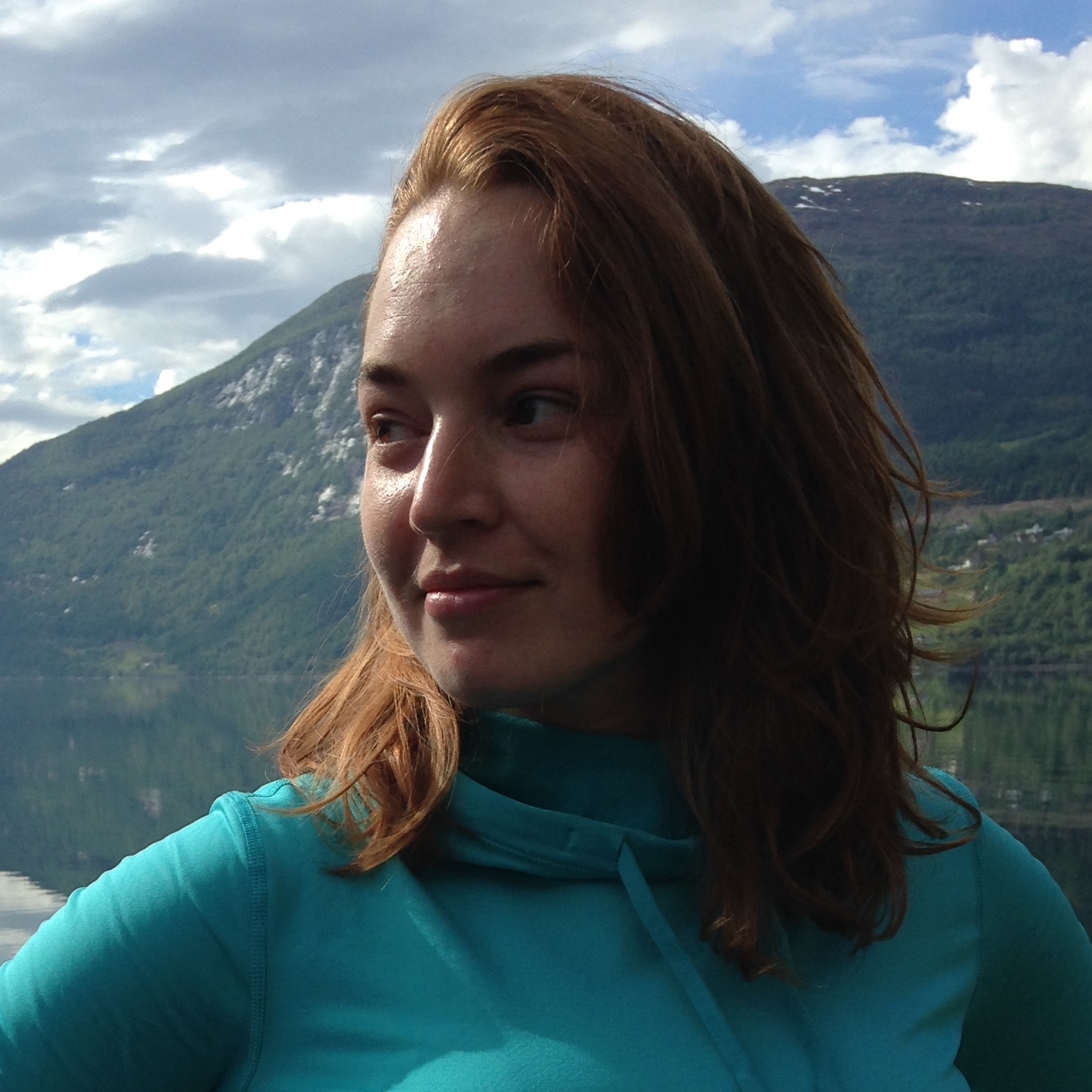

Studies investigating sign language processing in deaf native signers and bimodal bilinguals (fluent both in spoken and sign language) have provided new perspectives into our understanding of the nature of language processing. However, there is still very little known about the late acquisition of a sign language as a second language in hearing adults. To our knowledge, only one study has investigated the time-course of neural dynamics during sign language acquisition in hearing late learners. In the ongoing project Harmonia we recruited a group of 21 hearing subjects who participated in the 8-months Polish Sign Language (PJM) course (A1/A2 level of proficiency). and underwent 5 functional magnetic resonance (fMRI) sessions. The experimental task was based on two levels of linguistic processing: lexical and semantic. The analysis revealed that the most pronounced brain reorganization during PJM acquisition occurred after the first 3 months in classical language regions such as inferior frontal gyrus, as well as visual and parietal regions (which are hypothesized to be a part of modality-dependent system supporting sign language processing). Additionally, we tested deaf native users of PJM as a control group. The comparison showed a higher activity in superior temporal gyrus in deaf subjects (which is classically specified as a secondary auditory cortex) and highlighted the specific role of superior parietal lobule in late-learners. In the further research I plan to include in the analysis a third specific group – hearing bimodal bilinguals (children of deaf adults – CODAs) who are native users of both PJM and spoken Polish. The goal of this project will be the unique and systematic analysis of sign language processing in order to distinguish hearing deprivation effects from those related to language experience and age of acquisition. There is also no published study that directly compared deaf, CODAs and adult late-learners.


Multi-voxel pattern analysis (MVPA) is gaining increasing interest in the neuroimaging community. It allows to detect differences between conditions with higher sensitivity than conventional univariate analysis by focusing on the analysis and comparison of distributed patterns of activity. In such a multivariate approach, data from individual voxels within a region are jointly analyzed, which is closer to a contemporary view on the brain representation of different mental states (Kragel & LaBar, 2014). For instance, this type of analysis is extremely important in emotion research where no simple one-to-one representation between a structure and function exists (Hamann, 2012). Also, in memory research MVPA allows for a better understanding of the relationships between encoding and retrieval by a comparison of brain activation patterns of these two processes (Ritchey, Wing, Labar, & Cabeza, 2012). During the presentation, I will demonstrate performing several different types of MVPA analyses using the CoSMoMVPA toolbox.

Depresja to obecnie jedna z najpowszechniejszych chorób psychicznych. W jej leczeniu najczęściej wykorzystywana jest farmakoterapia oraz terapia poznawczo-behawioralna (cognitive behavioral therapy, CBT). W ostatnich latach zainteresowaniem badawczym objęto nowy typ interwencji skierowanej do osób z depresją - terapię poznawczą opartą na uważności (mindfulness based cognitive therapy, MBCT). W obecnej literaturze dostępne są badania potwierdzające skuteczność tej metody nie tylko w depresji, ale też np. w zaburzeniu lęku społecznego. MBCT istotnie zmniejsza emocjonalne zaburzenia obecne w depresji oraz może przyczynić się do redukcji nawrotów choroby. Niestety wiedza na temat wpływu interwencji opartych na uważności na aktywność neuronalną jest wciąż znikoma. W projekcie „Mózgowe korelaty wpływu treningu uważności na procesy poznawcze i emocjonalne u osób z depresją” chcemy pogłębić informacje o neuronalnych korelatach MBCT w porównaniu do CBT. W trakcie seminarium przedstawię podstawowe założenia projektu i planowane działania.
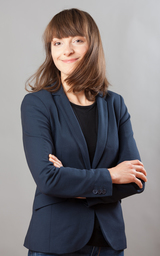
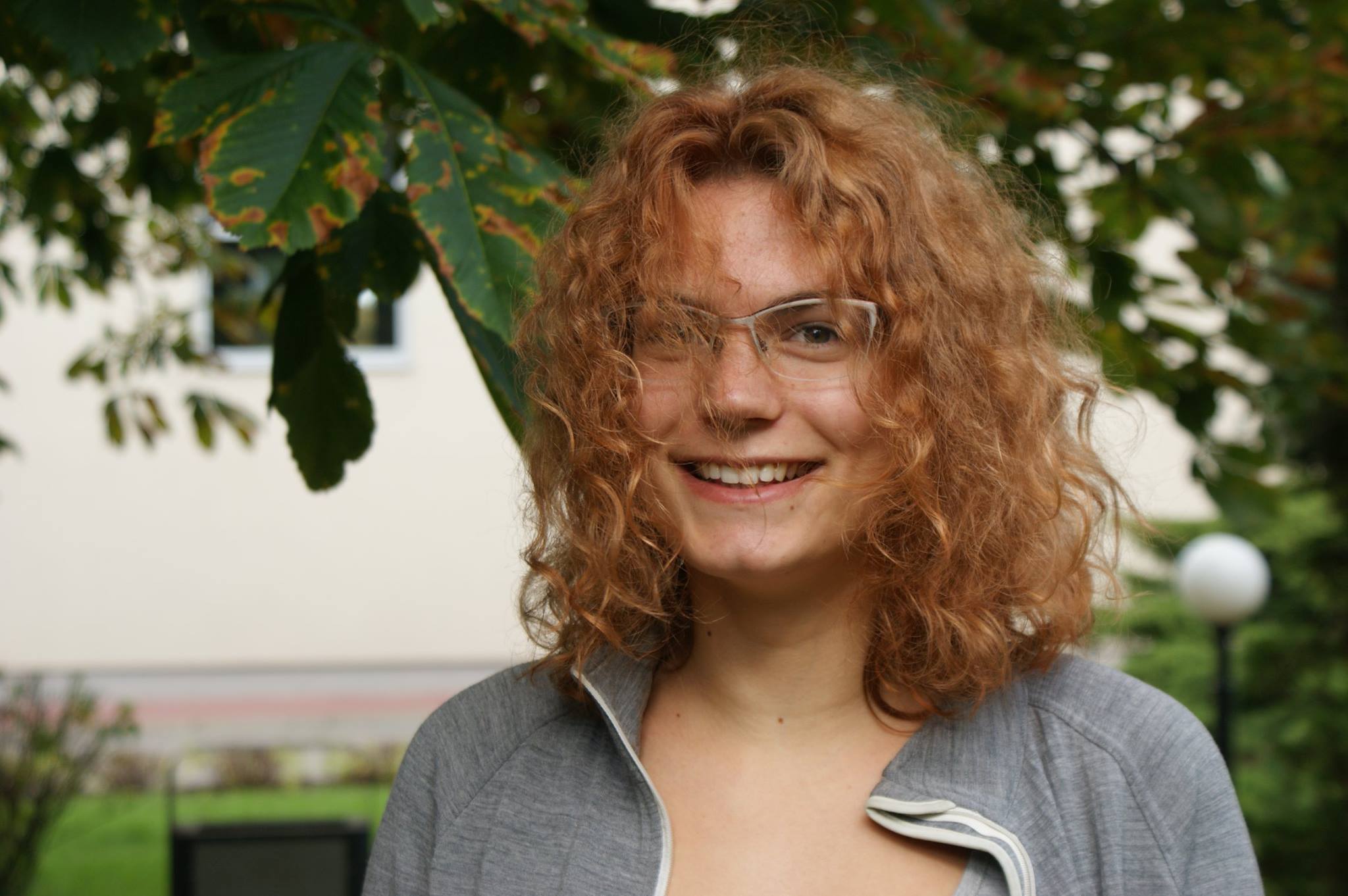


TBA

Project meeting



June 25-29, 2017 Vancouver Convention Centre
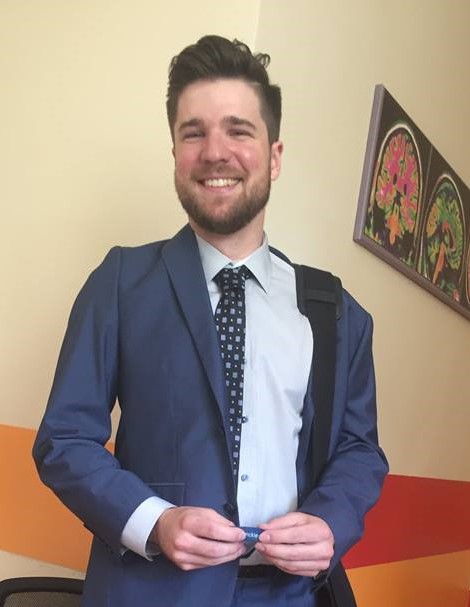

Termin anhedonia został wprowadzony do literatury pod koniec XIX wieku, za jego pomocą opisano "niemożność odczuwania przyjemności". Już na początku XX wieku anhedonia została uznana za główny objaw depresji oraz schizofrenii. Jednakże w świetle współczesnych badań dotyczących odczuwania przyjemności pierwotna definicja anhedonii przestaje być aktualna. Jak obecnie wiadomo odczuwanie przyjemności związane jest z procesami przetwarzania nagród, które dzielą się na trzy etapy - uczenie się, pożądanie oraz satysfakcję. Za każdy z etapów przetwarzania nagród odpowiada neuronalna aktywność w obrębie mózgowego układu nagrody, której zaburzenia skutkują anhedonią. W badaniach anhedonii podstawową metodą pomiaru są kwestionariusze samoopisowe, mimo że nie pozwalają one zagłębić się w procesy mózgowe leżące u podstaw odczuwania przyjemności, to ich niewątpliwymi zaletami jest niewielki koszt, duża dostępność i łatwość w przeprowadzaniu pomiaru. Często są one wykorzystywane w badaniach behawioralnych, a także w badaniach neuroobrazowania w celu oceny nasilenia anhedonii wśród osób badanych. W mojej prezentacji omówię działanie układu nagrody w anhedonii oraz próby nadania jej nowej definicji, a także przedstawię własności psychometryczne polskich wersji trzech kwestionariuszy do pomiaru anhedonii – Dimensional Anhedonia Rating Scale, Temporal Experience of Pleasure Scale oraz Snaith-Hamilton Pleasure Scale, które zostały poddane badaniu walidacyjnemu, w ramach mojej pracy magisterskiej.

[INTERNAL SEMINAR / in Polish] Scientific work very often requires writing our own programs (scripts), for example for data processing or stimulus presentation. Usually, we make a series of changes and fixes in our code, thus creating subsequent versions. A Version Control System (such as git) is a program which allows us to add descriptions to these version, automatically tracks changes and allows us to revert those changes when needed. As a result it increases transparency and productivity - we don't get lost among multiple versions, and having the ability to easily go back to the previous state we are not afraid to make changes.
The true power of git lies in collaboration, enabled by platforms such as github. After saving a new version of our code, we can send it to a remote server, where it will be available to our collaborators, who in turn can introduce their own changes. Git allows us to track what changes were made and by who, while keeping the entire history of changes.
Apart from the collaborative aspect, git also allows simply to publish code or download code shared by others. This made git an important tool for open science. On github one can find source code of many useful toolboxes (many of which are not available from other sources), and some researchers publish the scripts they used when preparing their publication.

Phonological awareness is a key factor in reading acquisition and typically is underdeveloped in dyslexic children. We aimed to establish neural correlates of auditory rhyming in children at different stages of literacy acquisition. We followed a group of children who either had or did not have familial history of dyslexia and either became typical readers or developed a reading impairment. At the first time point (TP1) we tested phonological and reading-related skills in 120 Polish beginning readers and prereaders (aged 5;6 – 8;0) with or without familial history of dyslexia. During fMRI children had to decide whether two aurally presented words rhymed (rhyme task) or whether they were spoken by speakers of the same gender (voice task). We repeated the tests and conducted a formal diagnosis of dyslexia in the same children 2 years later (TP2). We identified three groups: at risk children who 2 years later developed dyslexia (n = 15) and typically reading controls who either had (n = 18) or did not have a familial history of dyslexia (n = 18). The three groups were matched for age, gender, socio-economical status and intelligence. Brain activity to rhyme>voice was compared between the groups at both time points. Dyslexic children underperformed in numerous reading and phonological awareness tasks compared to control groups, with more pronounced differences at TP2. In the in-scanner rhyme task dyslexic children scored lower than control groups only at TP1. At this stage both groups at risk for dyslexia (irrespective of later reading development) showed hypoactivation of the left inferior frontal gyrus. This area was consistently underactivated in dyslexia and might reflect a dysfunction in efficient access to phonological representations. At TP2, dyslexic children displayed higher activation of the left tempo-parietal junction than both control groups. Additionally, in the left tempo-parietal junction an interaction between group and TP was observed – at TP1 dyslexic children had lower activity than control group without risk, and this relation reversed at TP2, when tempo-parietal junction was recruited by dyslexic children and not by control group. Thus, left tempo-parietal junction activation might reflect an early, suboptimal, stage of grapheme-phoneme correspondence and that is why controls move away from it. We conclude that literacy modifies not only the neuronal mechanism of speech processing but affects in particular processing of phonology, and dyslexic children seem to lag behind typical readers in development of specific phonological network.

Zaburzenie Osobowości Borderline (Borderline Personality Disorder, BPD) dotyczy 1-2% populacji ogólnej i około 10% pacjentów leczonych ambulatoryjnie. Znaczącą większość diagnozowanych osób stanowią kobiety (70-75%). BPD charakteryzuje się przede wszystkim częstym angażowaniem się w impulsywne, zagrażające zachowania (np. wielu partnerów seksualnych), zaburzeniem poczucia tożsamości, trudnością w nawiązywaniu stabilnych relacji i skrajnymi stanami emocjonalnymi. Osoby z tym zaburzeniem doświadczają trudności w funkcjonowaniu emocjonalnym, społecznym i zawodowym. Duża heterogeniczność tej grupy pacjentów może wiązać się z trudnością w uzyskiwaniu jednoznacznych wyników we współczesnych badaniach. Wiadomo już, że osobowość borderline cechuje się gorszą regulacją, opisywaniem i identyfikowaniem emocji w porównaniu do osób zdrowych. Pacjenci są też bardziej podatni na negatywne sygnały z otoczenia, charakteryzują się stałym wysokim poziomem lęku i nastrojem depresyjnym. W zadaniach poznawczych wypadają tak samo dobrze, co grupy kontrolne. Rozbieżności zaczynają pojawiać się na polu teorii umysłu, empatii oraz rozpoznawania emocji, choć można zauważyć, że przeważa brak różnic między BPD a osobami zdrowymi. Stąd też sugeruje się stosowanie technik bardziej ekologicznych, mogących wychwytywać subtelniejsze deficyty. W moim wystąpieniu opowiem o trwających badaniach własnych, prowadzonych pod opieką dr Agnieszki Pluty, oraz wstępnych wynikach. Ich celem jest pomiar funkcjonowania emocjonalnego i społeczno-poznawczego kobiet z diagnozą BPD, w tym sprawdzenie zdolności rozpoznawania emocji po indukcji stresu społecznego.

Learning to read requires the development of a highly organized brain system capable of integrating orthographic, phonological, and lexico-semantic features of written words. In this talk, various aspects of the functional neuroanatomical foundations of reading will be examined: (1) differences between children and adults, (2) differences between typical and poor readers, and (3) differences between various alphabetic orthographies. Based on meta-analyses of existing fMRI and PET studies, the dominant models of reading and dyslexia in the brain could be specified and modified. Due to the fact that in the existing literature, to date, relatively artificial “reading tasks” and unnatural presentation modes are prevailing, the validity of these findings is limited. Therefore, a new technique - “fixation-related fMRI” - has been developed, which allows the investigation of natural reading processes. It is based on a combined analysis of eye movement and brain activation data. In this talk, the method, as well as applications in reading research will be presented.

[INTERNAL SEMINAR / in Polish] How to BATCH in SPM - czyli o tym jak zautomatyzować przetwarzanie danych obrazowych. Podczas spotkania pokażę jak korzystać z wbudowanej w SPM możliwości tworzenia automatycznych skryptów (batch, jobs & scripts). Dodam do tego praktyczne wskazówki dla początkujacych programistów MATLABa. Spróbuję pokazać jak najwięcej praktycznych przykładów zaczerpniętych z pracy w LOBI. UWAGA! Najwięcej skorzystają osoby, które już trochę znają SPM oraz potrafią wykonywać podstawowe obliczenia w oknie MATLABa. Na rozgrzewkę przed zajęciami proponuję wykonać 1 proste ćwiczenie – link poniżej. Polecam przy tej okazji skorzystać z różnych źródeł – konsultacje, strony www itp. (również po to, żeby sprawdzić czy istnieją inne rozwiązania). Na warsztaty zapraszam wszystkich zainteresowanych analizami w SPM. Warto zabrać własny komputer z działającym oprogramowaniem.

[INTERNAL SEMINAR / in Polish] Neuroimaging experiments require collecting large amounts of data, and convenient organization and storage of such data is not a trivial issue. Recently, a useful standard has been proposed by a group of leading scientists in the field (Gorgolewski, K. J., Auer, T., Calhoun, V. D., Craddock, R. C., Das, S., Duff, E. P., … Poldrack, R. A. (2016). The brain imaging data structure, a format for organizing and describing outputs of neuroimaging experiments. Scientific Data, 3, 160044. doi 10.1038/sdata.2016.44). Following such a standard has multiple advantages, from simplifying work with own datasets (especially when it requires writing scripts and batches), through using standard-compliant toolboxes to data-sharing within and between research groups. The presentation will originate from my own experiences with using BIDS to organise a dataset. I will describe the standard itself as well as some useful related tools.

Where we move our eyes is not random. The target of every eye movement is selected via attentive mechanisms even before the movement is executed. Those attentive shifts have a mandatory impact on the perception and processing of visual information (Kowler & Schneider, 1995; Deubel & Schneider, 1996). In the study, I will present, we investigated if the enhanced processing of information is driven by changes in the perceptual tuning, similar to changes occurring in neuronal tuning in the presence of attentive modulation. To that aim, we presented observers a sequence of up to twelve randomly oriented gabor patches left and right from a fixation cross. The task was to make a saccade to one of the two locations which was indicated simultaneously with the sequence onset. As soon as the saccade was executed, all gabor patches were removed such that the sequence was never foveated. Once the eyes landed at the indicated location, we probed the perception of participants by asking if they saw a vertical (or horizontal) gabor within the sequence of one of the two locations. The location we probed was independent from the direction of the eye movement such that in 50% of the cases we probed the target of the saccade (congruent trials). In the remaining 50%, we probed perception at the opposed location (incongruent trials). We used a reverse correlation approach to study the distribution of orientations at both locations and their contribution to a detection report. This approach allowed us to study the temporal dynamics of perceptive tuning before the onset of a saccade. We observed a strong influence of saccade preparation on perceptual orientation tuning: Detection reports were associated with orientations tuned to the target orientation if these appeared within 100ms before saccade onset, and this effect was specific to congruent trials. Our findings suggest that pre-saccadic perceptual benefits arise from the temporal dynamics of orientation tuning before saccades.

Zakręt Heschla to struktura charakteryzująca się dużą różnorodnością ze względu na swój możliwy kształt i rozmiar. W porównaniu ze sporą ilością badań wiążących rozmiar i grubość kory zakrętu z nauką języków czy muzykalnością (np. Golestani, 2007; Schneider i in., 2002), jak dotąd niewielu badaczy zdecydowało się eksplorować jego zróżnicowany kształt (tzw. gyryfication pattern). Wszelkie zaś skupiające się na tym aspekcie prace (Abdul-Kareem, Sluming, 2008; Marie i in., 2015) zawsze ograniczały się do opisu jedynie trzech możliwych wariantów zakrętu: pojedynczego, częściowo podwójnego i całkowicie podwójnego. W swoim wystąpieniu zaprezentuję nową klasyfikację struktury zakrętu Heschla opracowaną we współpracy z zespołem Instytutu Psychiatrii w Oslo. Pokażę przykłady sześciu wariantów zakrętu oraz omówię kryteria ich klasyfikacji. Wstępna walidacja narzędzia została dokonana na próbie 84 adolescentów (32 osoby z diagnozą psychozy o wczesnym początku i 52 osoby zdrowe). Oceny skanów anatomicznych dwukrotnie dokonało dwóch niezależnych sędziów. Przeprowadzona analiza rzetelności sugeruje zadowalającą zgodność ocen między oraz wewnątrz sędziami. Wyniki wskazują na różnice w częstotliwości występowania wzorów anatomicznych pomiędzy osobami zdrowymi a osobami ze wczesnym początkiem psychozy. W grupie osób zdrowych zauważalne są również różnice międzypłciowe. Narzędzie pozwala więc na szczegółowy opis struktury zakrętu Heschla w populacjach. Umożliwia też dokładniejszą niż dotychczas próbę powiązania funkcji zakrętu z jego cechami strukturalnymi.

Poczucie rytmu pełni istotną rolę nie tylko w zadaniach słuchowych: w odbiorze muzyki i w mówieniu, ale także w codziennych funkcjach wzrokowo-motorycznych: w koordynacji ruchu, w poruszaniu się, w odbieraniu gestów i w synchronizacji z rozmówcą (np. Grahn, 2011) Badania pokazują, że umiejętność wzrokowego postrzegania rytmu, może rozwinąć się pod wpływem treningu u tancerzy (Su, 2016), Wzrokowe wyczucie rytmu jest lepsze u synestetów (Saenz, Koch 2008), a osoby głuche wykazują podobne lub lepsze wyniki od osób słyszących (Iversen, 2015) Wydaje się, że we wszystkich tych specyficznych grupach wzrokowe wyczucie rytmu może być wspomagane przez aktywność obszarów mózgu tradycyjnie przypisanych przetwarzaniu bodźców słuchowych. Nasze dotychczasowe badania pokazują, że rozpoznawanie rytmicznych sekwencji bodźców w modalności wzrokowej u osób głuchych związane jest z aktywacjami w obrębie drugorzędowej kory słuchowej. Pokrywanie się aktywowanego obszaru z regionem aktywnym w wersji słuchowej zadania u osób słyszących wskazuje ponadto, że pewne obszary kory słuchowej mogą zachowywać swoje funkcje bez względu na przetwarzaną modalność (Bola, Zimmermann, 2017) Wyniki rodzą kolejne pytania o zakres i charakter plastyczności kory słuchowej. Do jakiego stopnia kora słuchowa pełni niezbędną rolę w widzeniu rytmu w wypadku deprywacji sensorycznej? Czy obszary słuchowe mogą zacząć wspomagać widzenie rytmu pod wpływem długotrwałego treningu muzycznego? Poddamy dyskusji planowane badania TMS i fMRI zmierzające do dalszej eksploracji międzymodalnej plastyczności w zadaniach rytmicznych.

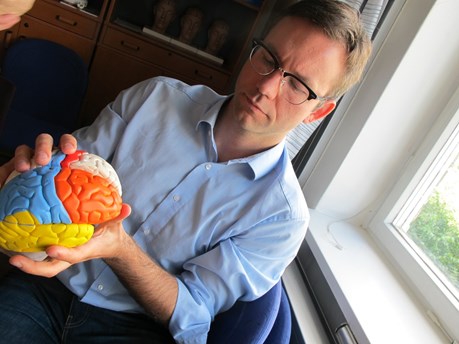

The principles that guide large-scale cortical reorganization remain unclear. In the blind, several visual regions preserve their task specificity; ventral visual areas, for example, become engaged in auditory and tactile object-recognition tasks. It remains open whether task-specific reorganization is unique to the visual cortex or, alternatively, whether this kind of plasticity is a general principle applying to other cortical areas. Auditory areas can become recruited for visual and tactile input in the deaf. Although nonhuman data suggest that this reorganization might be task specific, human evidence has been lacking. Here we enrolled 15 deaf and 15 hearing adults into an functional MRI experiment during which they discriminated between temporally complex sequences of stimuli (rhythms). Both deaf and hearing subjects performed the task visually, in the central visual field. In addition, hearing subjects performed the same task in the auditory modality. We found that the visual task robustly activated the auditory cortex in deaf subjects, peaking in the posterior–lateral part of high-level auditory areas. This activation pattern was strikingly similar to the pattern found in hearing subjects performing the auditory version of the task. Although performing the visual task in deaf subjects induced an increase in functional connectivity between the auditory cortex and the dorsal visual cortex, no such effect was found in hearing subjects. We conclude that in deaf humans the high-level auditory cortex switches its input modality from sound to vision but preserves its task-specific activation pattern independent of input modality. Task-specific reorganization thus might be a general principle that guides cortical plasticity in the brain.

Learning the predictive value of cues through observing the responses of a conspecific (demonstrator) is common across species. This social, indirect, means of acquiring information might be especially advantageous in potentially dangerous environments. In contrast to learning through direct experiences, relatively little is known about the principles governing observational learning. I will present behavioral and physiological (fMRI) research examining human observational learning about events that are threatening (fear learning) and no longer threatening (safety learning). Our results show that observational fear and safety learning draw on processes partially shared with direct (Pavlovian) fear conditioning, and extinction learning, respectively. Importantly, the quality of observational learning depends on social information about demonstrator in ways consistent with research in both human and non-human animals.

Celem wystąpienia będzie prezentacja programu KINEMO, czyli aplikacji do badań komunikacji multimodalnej. Aplikacja rejestruje ruchy rąk za pomocą czujnika ruchu MS Kinect, a następnie ustala ich parametry i rozpoznaje wybrane gesty. Rozróżnianie rodzajów ruchów rąk jest oparte na systemie kodowania NEUROGES stosowanym w neuropsychologii oraz psychiatrii (Lausberg, H. 2013). W systemie tym przyjmuje się, że ruchy rąk są powiązane ze stanami emocjonalnymi uczestników komunikacji i przebiegiem ich procesów poznawczych oraz ich interakcji. Wyniki analiz ruchów rąk wspierają diagnozę zaburzeń psychicznych takich jak depresja czy aleksytymia (Lausberg, H. i Sloetjes H., 2015). KINEMO jest wszechstronnym narzędziem badawczym dla specjalistów komunikacji międzyludzkiej. Wśród przyszłych użytkowników aplikacji KINEMO są zarówno badacze komunikacji międzyludzkiej, a w szczególności gestów, czyli językoznawcy, psycholodzy i psychiatrzy i neurolodzy. Bibliografia: Lausberg H, Sloetjes H. The revised NEUROGES-ELAN system: An objective and reliable interdisciplinary analysis tool for nonverbal behaviour and gesture. Behavior Research Methods, DOI: 10.3758/s13428-015-0622-z., 2015. Lausberg, H. Understanding Body Movement. A Guide to Empirical Research on Nonverbal Behaviour With an Introduction to the NEUROGES Coding System. Frankfurt am Main: Peter Lang, 2013.

Trening Trening uwagowy (attentional training technique, ATT) jest jedną z technik/interwencji terapeutycznych stosowanych w terapii metapoznawczej Adriana Wellsa. Jednym z założeń podejścia metapoznawczego jest to, że osoby z zaburzeniami psychicznymi mają sztywny wzorzec kierowania uwagi na zagrażające bodźce ze środowiska lub na wewnętrzne doznania, przede wszystkim w formie zamartwiania się i ruminacji. Trening uwagowy został zaprojektowany, jako ćwiczenie, podczas którego osoba uczy się kierować uwagę na inne niż zagrażające bodźce, a co za tym idzie - ćwiczy umiejętność elastycznego kierowania uwagi. Wystąpienie będzie składało się z trzech części. W pierwszej zostanie zaprezentowana polska wersja treningu uwagowego. Podczas drugiej zostaną omówione badania dotyczące skuteczności ATT, ze szczególnym uwzględnieniem badań, w których wykorzystywano jedną lub dwie sesje treningu. W trzeciej części zaprezentowany zostanie schemat badań, które będą realizowane w Pracowni Obrazowania Mózgu, CN, IBD.

“Decoding” refers to the application of machine learning methods to derive powerful predictions of experimental or behavioral variables from multivariate neuroimaging data. Besides obtaining accurate predictions, one goal is to also gain insight into the neural activity that enables the model to achieve its performance. Such interpretation must be done with care as the neural features (e.g. activations of fMRI voxels) that are relevant, e.g., to distinguish two cognitive states, are not necessarily specific to the cognitive processing in any of these states. We demonstrate that this problem is caused by correlated additive signals (which can be noise or simply brain processes unrelated to the prediction task). To overcome the problem, we propose a model representation from which the condition-specific neural features can be readily obtained. Another domain in which correlated superimposed activity can lead to misinterpretation is the analysis of interactions between time series. We will point out how linear superposition of brain signals in neuroimaging data can lead to spurious detection of interaction for some of the most established interaction measures. To deal with this problem, we will introduce a number of "robust" measures and demonstrate their advantages.

Recognition of communicative interactions is a complex social cognitive ability, which is associated with a specific neural activity in healthy individuals. However, aberrant patterns of brain activations are observed in patients with schizophrenia during social interactions processing. These findings could be confounded by social cognitive deficits well described in schizophrenia. In our previous studies we have observed that, while healthy individuals are able to easily recognize social interactions from whole-body motion (Manera et al., 2015), patients with schizophrenia present aberrant pattern of processing of this type of stimuli (Okruszek et al., 2015). Therefore, current study aimed to examine the neural activity associated with recognition of communicative interactions by using displays of the dyadic interactions downgraded to minimalistic point-light presentations. Twenty-six healthy controls (HC) and twenty-five patients with schizophrenia (SCZ) were asked to classify if two agents presented only by point-light displays are communicating or acting independently. While SCZ were outperformed by HC at the behavioral level, high accuracy was found for communicative actions recognition in both groups. At the neural level, reduced activity of the right posterior superior temporal sulcus (pSTS) was observed in SCZ compared to HC for communicative vs. individual actions processing. Importantly, increased connectivity of right pSTS with structures associated with mentalizing and mirroring networks was observed in HC, but not in SCZ during presentation of social interactions. Under-recruitment of the right pSTS, a structure known to have a pivotal role in social processing, may underlie higher-order mentalizing problems observed in SCZ. Furthermore, decreased task-related connectivity of the right pSTS may result in reduced use of additional sources of information (for instance motor resonance signals) during social cognitive processing in SCZ. The meting will be aimed to discuss the results of the project and research proposal which is aimed to extend current findings by examining the role of right pSTS in multi-level social information processing in patients with schizophrenia.

Wystąpienie dotyczyć będzie zagadnienia interakcji emocji i procesów poznawczych u osób chorych na schizofrenię. W świetle badań z zakresu psychologii i neuronauki systemy związane z każdym typem procesów łączy bardzo silna współzależność, co jest odzwierciedleniem faktu, że żadne złożone działanie człowieka nie jest w pełni „afektywne” czy „poznawcze” (Pessoa, 2008). Jednocześnie badania nad interakcją obu typów procesów u pacjentów chorych na schizofrenię ograniczone były do nielicznych projektów o zróżnicowanych metodologiach, których rozbieżne wyniki w dużym stopniu utrudniają zrozumienie mechanizmów interakcji emocji i procesów poznawczych w schizofrenii. Głównym celem omawianych badań było określenie czy na poziomie behawioralnym oraz neuronalnym (mierzonym za pomocą elektroencefalografii - EEG) obserwowane mogą być różnice w zakresie stopnia, w jakim pobudzenie emocjonalne wpływa na funkcjonowanie poznawcze osób zdrowych i osób chorych na schizofrenię. W celu odpowiedzi na to pytanie przeprowadzono cykl badań, w których udział wzięło łącznie 62 pacjentów chorych na schizofrenię oraz 62 dobrane demograficznie osoby zdrowe. Dzięki użyciu bodźców afektywnych z baterii Nencki Affective Picture System (NAPS), które prezentowane były w ramach coraz bardziej złożonych paradygmatów poznawczych, kolejne badania pozwoliły prześledzić poszczególne aspekty interakcji pomiędzy emocjami i procesami poznawczymi u osób zdrowych i chorych na schizofrenię. Omwione zostaną wyniki behawioralne i neurofizjologiczne projektu.

Nauka czytania to jedno z najważniejszych wyzwań stojących przed uczniem rozpoczynającym edukację szkolną. W związku z tym procesem zachodzą również istotne zmiany na poziomie struktury i funkcji mózgu. W trakcie prezentacji omówione zostaną wyniki wcześniej prowadzonych badań w których sprawdzano jak nabywanie czytania u dzieci i dorosłych analfabetów wpływa na przetwarzanie języka w dwóch modalnościach – wzrokowej (pismo) i słuchowej (mowa). Następnie zaprezentowane zostanie badanie przeprowadzone przez zespół LOBI i PSlab, w którym dużej grupie dzieci o zróżnicowanym poziomie umiejętności czytania wzrokowo i słuchowo prezentowano słowa w zadaniu fMRI. Okazało się, że umiejętność czytania pozytywnie koreluje z odpowiedzią mózgu na pismo w lewej półkuli w obszarach skroniowych, ciemieniowych i czołowych. Lepiej czytające dzieci w odpowiedzi na mowę również silniej angażowały lewopółkulowe obszary skroniowe. Porównanie aktywacji u dzieci jeszcze nieczytających z dobranymi do nich wiekiem, płcią, IQ i statusem socjoekonomicznym dziećmi czytającymi wykazało, że tylko dzieci już umiejące czytać reagują na pismo na poziomie mózgowym. W odpowiedzi na słowa prezentowane słuchowo grupa czytająca i nieczytająca nie wykazały jednak znaczących różnic. Uzyskane wyniki zostaną odniesione do aktualnego stanu wiedzy, a także do pierwszych wyników z analiz podłużnych, w których to samo zadanie dzieci wykonywały po dwóch latach od pierwszego badania.

Consciousness is identified with binding and integration of information, both on the phenomenological and neuronal level. Whereas the neuronal basis of features’ binding and multi-sensory integration has been extensively investigated, not much is known about the mechanisms of temporal integration and their role in maintaining consciousness. In the present study spontaneous brain activity was recorded in different states of consciousness and analysed in terms of long-range temporal correlations (LRTCs), which indicate that signals possess long “memory” and are modulated across multiple time-scales. We hypothesized that loss of consciousness during general anaesthesia will be related to weaker LRTCs in brain activity. Resting-state electrocorticography (ECoG) was recorded from four macaque monkeys during wakefulness and general anaesthesia. We estimated amplitude envelopes of brain oscillations and used Detrended Fluctuation Analysis to estimate LRTCs of amplitude modulations. We report two main findings. Firstly, spontaneous brain activity exhibits significant LRTCs, which span a wide range of time-scales. Strongest LRTCs were found in the motor and frontal regions. Secondly, LRTCs diminish during loss of consciousness. Topographically, anaesthesia-induced changes can be described in terms of a “normalization effect”, as brain regions characterized by strongest LRTCs during wakefulness exhibited greatest decrease during anaesthesia. Therefore, our results complement and extend previous studies, which demonstrated LRTCs in non-invasive M/EEG recordings. Further, we revealed that during consciousness brain activity is modulated across a wide range of time-scales, which is indicative of a long temporal memory and might reflect the process of temporal integration. Conversely, during general anaesthesia the brain’s `temporal memory' is much shorter, suggesting that extensive temporal integration does not occur during loss of consciousness.

Dwusystemowe teorie umysłu wyjaśniają mechanizmy jego pracy dzięki odwołaniu do dwóch konkurencyjnych procesów: automatycznego i kontrolowanego. Procesy te leżą u podstaw dwóch niezależnych systemów umysłowych: doświadczeniowego i racjonalnego (Epstein, 2003), które przejawiają się w różnych aspektach funkcjonowania psychiki, naprzemiennie generując odpowiedzi na wyzwania przed jakimi stajemy, czy też konkretne zachowania. W nurcie teorii dwusystemowych jak dotąd bez odpowiedzi pozostaje pytanie o to, jak wyglądają mechanizmy aktywacyjne charakterystyczne dla obu systemów. Aktywacja jest kluczowa, ponieważ zapewnia napęd do przetwarzania charakterystycznego dla każdego z systemów. W przypadku procesów automatycznych, charakterystycznych dla umysłu doświadczeniowego (Epstein, 2003), rolę aktywacji powinno pełnić pobudzenie (arousal) – dobrze znany w psychologii czynnik będący właściwością interakcji umysłu z otaczającymi bodźcami (Russell, 2003). W przypadku procesów kontrolowanych, bazujących na systematycznym przetwarzaniu charakterystycznych dla umysłu racjonalnego (Epstein, 2003), rolę aktywacji pełnić może subiektywna waga regulacyjna doznań (subjective significance), stanowiąca zgeneralizowaną postawę wobec bodźców z otaczającego świata (Imbir, 2016a). Badania nad normami afektywnymi dla bodźców pokazały, że oba typy aktywacji są względnie niezależne (Imbir, 2016b) i możliwy jest ich pomiar przy użyciu porównywalnych skal typu Self-Assessment Manikin. W badaniach sprawdzałem rolę obu typów aktywacji dla efektywności kontroli poznawczej mierzonej w Emocjonalnym Teście Stroopa, przy użyciu ortogonalnych manipulacji czynnikowych (3 poziomy pobudzenia x 3 poziomy subiektywnej wagi regulacyjnej doznań). Okazało się, że subiektywna waga regulacyjna redukuje spowolnienie w czasach reakcji powodowane przez wzrastający poziom pobudzenia (Imbir, 2016c). W badaniu EEG (Imbir, Spustek, Duda i Żygierewicz, w recenzji) z wykorzystaniem tej samej listy słów okazało się, że amplituda potencjałów wywołanych dla komponentu P2 odzwierciedla wyniki behawioralne, podczas gdy efekty związane z wagą regulacyjną można zaobserwować również w komponentach na bardzo wczesnym etapie wykonywania zadania (50-150 ms), jak też w komponencie N450. Wyniki te rzucają światło na mechanizmy związane z usprawniającą rolą wagi regulacyjnej dla procesów kontroli poznawczej.

Percepcja rytmicznych sekwencji bodźców i „wyczucie rytmu” pełni istotną funkcję nie tylko w odbiorze muzyki, i w mówieniu, ale także w koordynacji ruchu, w poruszaniu się, w odbieraniu gestów, w synchronizacji z rozmówcą itp. (np. Grahn 2011) Ze względu na wyższą rozdzielczość czasową percepcji w modalności słuchowej, można przypuszczać, że to słuch pełni kluczową rolę w nabywaniu tego rodzaju umiejętności, a deprywacja słuchowa może powodować trudności w wykonywaniu zadań związanych z rytmem i czasem u osób głuchych. Z drugiej strony badania nad międzymodalną neuroplastycznością wskazują, że pozbawione dopływu bodźców, nieaktywne obszary kory, mogą przejmować funkcje innych zmysłów wzmacniając tym samym określone funkcje poznawcze. Nasze dotychczasowe badania z użyciem fMRI pokazały istnienie mechanizmu międzymodalnej neuroplastyczności w zadaniu związanym z rytmem. rozpoznawanie rytmicznych sekwencji bodźców w modalności wzrokowej u osób głuchych związane jest z aktywacjami w obrębie drugorzędowej kory słuchowej, (górnego zakrętu skroniowego). Pokrywanie się aktywowanego obszaru z regionem aktywowanym w wersji słuchowej zadania u osób słyszących wskazuje ponadto, że pewne obszary kory słuchowej mogą zachowywać swoje funkcje bez względu na przetwarzaną modalność. Poddamy dyskusji planowane badania TMS zmierzające do dalszej eksploracji tego zjawiska.

Pedofilia przez szereg lat traktowana była głownie jako problem natury społecznej. Zepchnięta na ubocze psychiatrii, od stosunkowo niedawna staje się obiektem zainteresowania nauki. Do tej pory, powstały co najmniej dwie znaczące koncepcje neurobiologicznego podłoża pedofilii. Pierwsza z nich dotyczy nieprawidłowej aktywności obszarów płata czołowego (okolica oczodołowo-czołowa, kora przedczołowa), łączonej z impulsywnymi, niekontrolowanymi i kompulsywnymi zachowaniami, które mogą prowadzić do popełniania przestępstw seksualnych. Druga - zaburzonej czynności obszaru skroniowo-limbicznego (zwłaszcza ciała migdałowatego i hipokampa), co w efekcie kierowałoby do seksualnego zainteresowania dzieckiem poprzez nieprawidłowe przypisywanie mu znaczenia emocjonalnego. Celem wystąpienia będzie przybliżenie aktualnych hipotez na temat neurobiologicznych uwarunkowań pedofilii, ze szczególnym uwzględnieniem mechanizmów podejmowania decyzji oraz przetwarzania emocji u sprawców czynów pedofilnych.
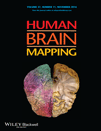

Prokrastynacja, to zaburzenie samoregulacji polegające na odwlekaniu niektórych czynności, pomimo świadomości, że takie zachowanie prowadzić będzie do dyskomfortu. Tendencję do odwlekania traktować można jako cechę i szacuje się, że problem ten dotyczy 15-20% populacji. Odkładanie zadań prowadzi do znaczącego obniżenia poziomu ich wykonania, rzutuje na satysfakcję z osiągnięć i prowadzi do obniżonej jakości życia, stąd coraz większe zainteresowanie badaczy tym tematem. Z dotychczasowych badań wiadomo, że prokrastynacja jest silnie związana z impulsywnością i trudnościami w regulacji emocji. W celu porównania neuronalnych mechanizmów kontroli impulsów u osób bez i z tendencją do odwlekania wykonano badanie z zadaniem go/no-go w czasie skanowania fMRI. Dodatkowo, aby zbadać wpływ czynników emocjonalnych na procesy poznawcze zadanie przeprowadzone zostało w trzech warunkach: neutralnym, z nagrodami finansowymi za poprawne wykonanie, oraz karami finansowymi za błędy. Zaobserwowano m.in. zmniejszoną aktywność przedniego zakrętu obręczy oraz lewej wyspy w nieudanych próbach hamowania w grupie osób z tendencją do odwlekania. Ponadto, w warunku z karaniem za błędy, aktywność prawej grzbietowo-bocznej kory przedczołowej u „prokrastynatorów” była niższa niż w grupie kontrolnej. Otrzymane wyniki sugerują, że prokrastynacja związana jest z wadliwym przetwarzaniem informacji o błędach w kontroli impulsów, co może przekładać się na trudności z korygowaniem niepożądanych zachowań. Wyniki sugerują też, że osoby z tendencją do odwlekania mogą mieć trudności ze wzmożeniem kontroli zachowania w wymagających tego sytuacjach, zwłaszcza jeśli sytuacje te wzbudzają negatywne emocje (np. ryzyko kary związanej z niepowodzeniem).
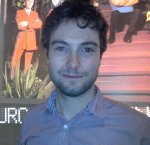
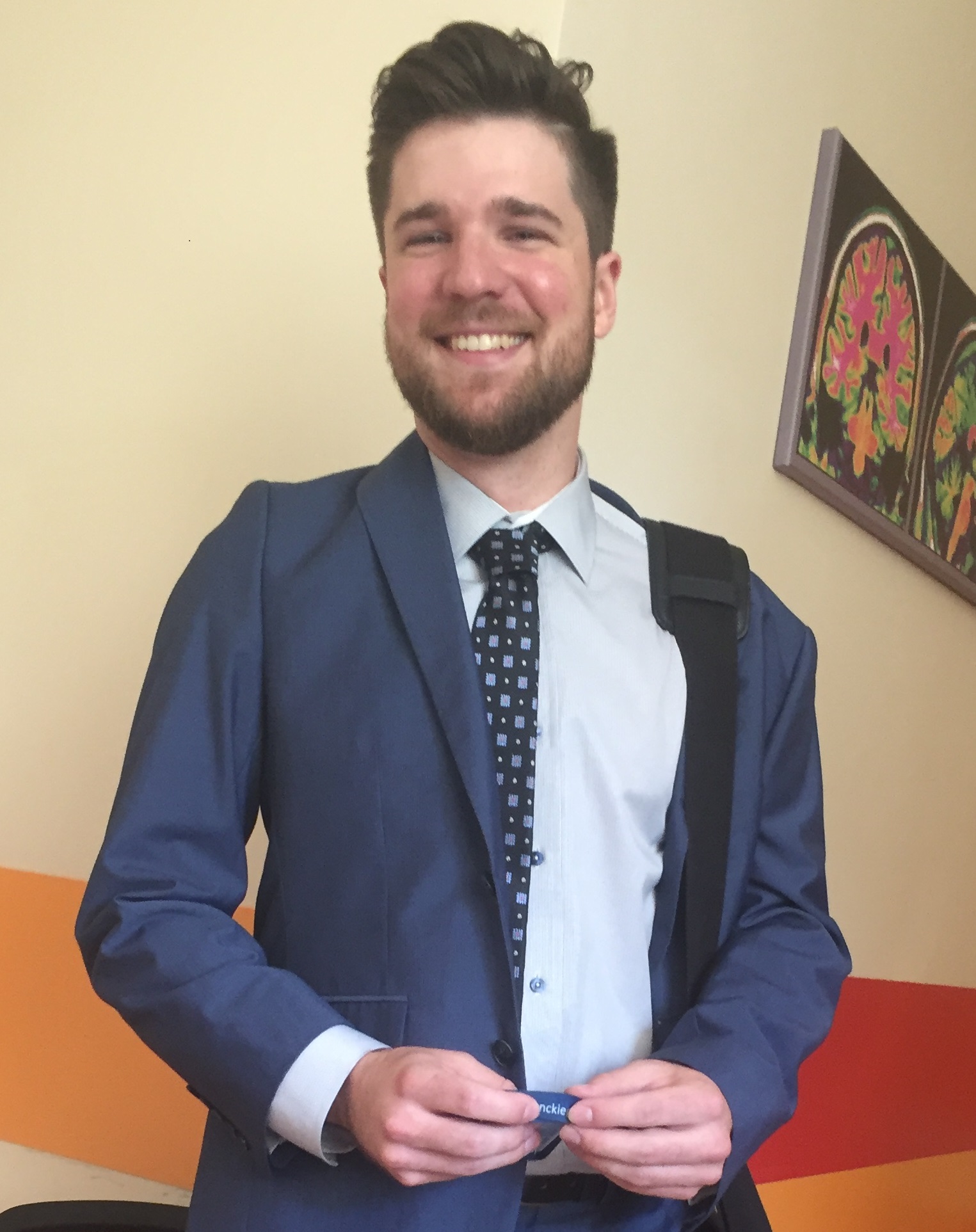

Although long a condition of interest spanning the gamut of neuroimaging modalities, study of the “null”, “fixation” or “resting” state has recently flourished. The fMRI community, in particular, has zealously embraced resting state approaches to mapping brain organization and function. Now, having demonstrated its utility for charting the large-scale functional architecture of the brain, and potential for the identification of biomarkers for clinical conditions, the field is returning to fundamental questions regarding the significance and validity of resting state (intrinsic brain) phenomena. Here, we discuss these challenges, and outline current developments.

INTERNAL WORKSHOP

INTERNAL WORKSHOP

INTERNAL WORKSHOP

INTERNAL WORKSHOP

INTERNAL WORKSHOP

The Dehumanization of Art (1925) the masterpiece by Ortega y Gasset continues to attract keen interest of the world of science, recently including neuroaesthetics. In contrary to the traditional approach toward Cognitive Aesthetics (Kisonova 2013), understood as a relation between the notion of beauty and truth, the neurasthenic approach is focused mainly on formal aspects of aesthetical perception and value evaluation recognized in the brain structures (Zeki & Ishizu 2013; Cela-Conde et all. 2009; Freedberg & Gallese 2007) Key words: neuroaesthetic, cognitive science, dehumanization, art, Ortega y Gasset
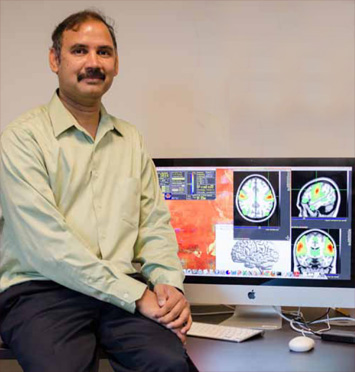

Since 2011 researchers are increasingly using resting state fMRI (rs-fMRI) to study individual differences in non-clinical groups. As a novel approach in personality studies, it gives a unique opportunity to observe spontaneous or intrinsic brain activation when a subject is not performing an explicit task. Past studies have shown significant relationship between rs-fMRI properties and traits defined by BIG FIVE and BIS/BAS theories. Therefore we chose Regulatory Theory of Temperament and Formal Characteristics of Behavior - Temperament Questionnaire (FCB-TI) by Bogdan Zawadzki and Jan Strelau (1997) to define temperamental traits and determine experimental groups. Furthermore, this well known and most appreciated polish theory of individual differences has never been used in neuroimaging studies. Methods: Subjects: We examined 61 women (age=20-30 years old) distinguished into low reactive (n=22) and high reactive (n=23) groups based on their FCB-TI scores. MRI procedure: Images were acquired with 3T MRI Scanner, 10 min resting state sequence (TR=2), subjects were requested to have their eyes closed. Data analysis: Data was preprocessed using SPM8. Regional Homogenity (ReHo) and seed-based analysis was performed. Results: ReHo comparison (high reactive group vs low reactive group) revealed significant difference in ReHo of left and right insula ( p<.02; cluster=97.7 vox). On the basis of ReHo results we performed seed-based analysis using anterior insula as a seed. The results revealed stronger positive connectivity of both left ant. insula (p<.001; cluster=18.1 vox) and right ant. insula (p<0.001, cluster=26 vox) to regions of DMN in low reactivity group. Conclusions: We hypothesize that in low-reactive subjects - less prone to react in highly emotional manner - the DMN is playing the suppressing role, which “helps” the insula to regulate emotional reactions. In conclusion, connectivity of insula and DMN may play a crucial role in regulation of emotional responses, which are the main component of emotional reactivity trait. Furthermore, the strength of this connection might be the main factor determining intensity of this trait. To the best of our knowledge, this study is the first attempt to validate Regulative Theory of Temperament using neuroimaging data.

Środowisko głuchych w Polsce porozumiewa się za pomocą Polskiego Języka Migowego (PJM), który jest językiem naturalnym, ale odrębnym od języka polskiego (języka fonicznego) (Świdziński, 2005). Osoby wykorzystujące w codziennej komunikacji Polski Język Migowy (PJM) oraz język polski są zaliczane do grupy charakteryzującej się dwujęzycznością migowo-foniczną (Grosjean, 2010). Według dotychczasowych badań (m.in. Bialystok, Craik, Green, Gollan, 2009) osoby dwujęzyczne (posługujące się dwoma językami fonicznymi) osiągają przewagę nad osobami jednojęzycznymi w zadaniach wymagających wykorzystania wybranych komponentów funkcji wykonawczych (hamowania interferencji informacyjnej, giętkości poznawczej i pamięci roboczej). Natomiast wciąż wyjaśnienia wymaga kwestia związku pomiędzy dwujęzycznością migowo-foniczną oraz wyższymi procesami poznawczymi (funkcje wykonawcze, executive function, EF). Do grupy osób dwujęzycznych migowo-fonicznie należą między innymi głuche dzieci mające głuchych rodzicow (GDGR), których pierwszym językiem (first language, L1) jest PJM, a które następnie w szkole uczą się drugiego języka (L2), czyli języka polskiego w piśmie. W badaniach z udziałem dzieci w okresie późnego dzieciństwa nie wykryto istnienia różnic na poziomie behawioralnym (poprawność wykonania zadania oraz czasy reakcji) pomiędzy GDGR (N=20) oraz ich słyszącymi, jednojęzycznymi rowieśnikami (N=20) w zadaniach określających poziom różnych komponentów EF (hamowanie behawioralne, hamowanie interferencji informacyjnej, pamięć robocza, planowanie, giętkość poznawcza). Otrzymane wyniki potwierdzają wcześniejsze doniesienia z badań, w których głuche dzieci jednojęzyczne osiągają niższy poziom EF niż słyszące dzieci jednojęzyczne i głuche dzieci dwujęzyczne posługujące się językiem migowym i pismem (Hall, Eigsti, Bortfeld, Lillo-Martin, 2016). Dwujęzyczność migowo-foniczna obejmuje również słyszące osoby dorosłe mające głuchych rodziców (children of Deaf Adult, CODA)_,_ dla których L1 to język migowy, a L2 to język foniczny. W przeprowadzonych badaniach sprawdzano, czy CODA (N=30) tak samo jak słyszące osoby dwujęzyczne (używające dwóch językow fonicznych) (N=30) osiągają wyższe wyniki niż osoby słyszące jednojęzyczne w zdaniu flankerów (flanker task) wymagającym wyhamowania interferencji informacyjnej. Dotychczasowe niereplikowane badania Karen Emmorey i in. (2008) wskazują na brak istnienia takiej przewagi w grupie CODA.
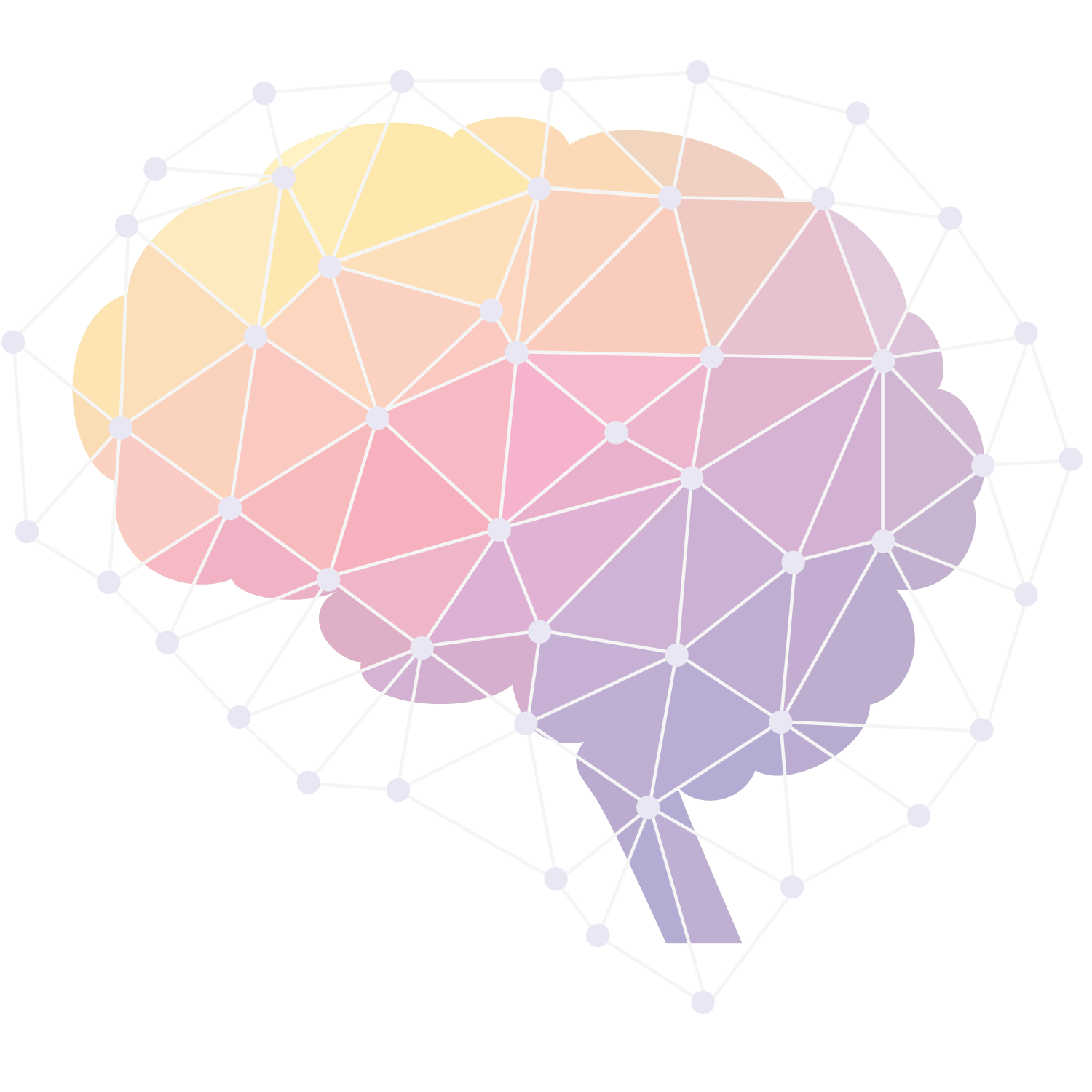

Many breath studies are conducted on carefully selected individuals under controlled laboratory conditions. Measuring a statistically meaningful number of people takes considerable time and can yield results that are influenced by the laboratory environment. An alternative approach is to assess large groups of people under real world conditions by measuring ambient air in crowded locations. In this talk we examine what can be learned by using a PTR-ToF-MS to measure the air composition at a football match and in a cinema. In both cases the trace gas signatures measured in ambient air are shown to reflect crowd behavior. By applying advanced data mining techniques we may examine whether groups of people reproducibly respond to specific stimuli by exhaling specific trace gases. The consequences of the findings will be discussed.
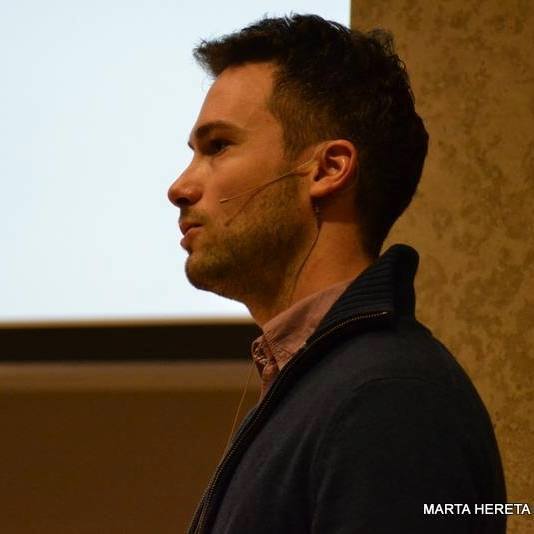

See our posters

See our posters

Ludzie mogą lokować aktualnie dostępne zasoby w jednym w trzech powiązanych ze sobą wymiarów: aktualnych potrzeb danej osoby, potrzeb przyszłych oraz potrzeb innych ludzi (Simon J., 1995). Siła związku miedzy "ja teraźniejszym" i "ja w przyszłości", podobnie jak miedzy interesem własnym i interesem innych osób jest jednym z aspektów samokontroli, które możemy mierzyć tempem dyskontowania (Rachlin H., 2000, 2002). Dostrzegając wyraźny związek między mniejszymi korzyściami dostępnymi natychmiast, a większymi dostępnymi w przyszłości, łatwiej nam zrezygnować z mniejszego, lecz bliższego wzmocnienia, podobnie w przypadku związku interesu własnego z interesem innych ludzi rozumianego, jako nierównoczesnej wymiany przysług(Cosmides L., Tooby J., 1992) - im lepiej jest on dostrzegalny, tym łatwiej nam zrezygnować z doraźnych korzyści na rzecz innych (Rachlin H., 2000). Dodatkowo zarówno w przypadku dyskontowania w czasie jak i społecznego możemy obserwować zjawisko niespójności preferencji, tzn. oddalenie skutków wyboru od decydenta w przestrzeni (czasowej lub społecznej) sprzyja zwiększeniu samokontroli (Rachlin H., 2002, Yi i wsp., 2011) - w przypadku wyboru między kwotą 100 zł. dostępnych dzisiaj lub 105 zł. jutro jest większe prawdopodobieństwo, że skusi nas opcja pierwsza niż w przypadku wyboru między 100 zł. za rok lub 105 zł. za rok i jeden dzień. W niniejszym badaniu uczestnicy byli proszeni o wyobrażenie sobie listy 100 osób, gdzie osoba numer 1 była najbliższa badanemu, a osoba numer 100 znana mu tylko z widzenia. Następnie rozwiązywali oni dwie serie problemów. W pierwszej wybierali między mniejszą kwotą dla osoby im bliższej i większą dla osoby bardziej oddalonej, w drugiej do wyboru była kwota niższa dostępna natychmiast lub wyższa otrzymywana z pewnym odroczeniem przyznawana kolejnym osobom na liście, przy czym dany wybór dotyczył zawsze jednej osoby. Wyniki pokrywają się z przeprowadzonymi do tej pory badaniami dotyczącymi dyskontowania społecznego - w miarę rosnącego dystansu społecznego decydenci skłaniali się ku wyborom bardziej racjonalnym, jeśli chodzi o interakcję dystansu społecznego i czasowego, to na poziomie trendu statystycznego możemy zaobserwować wyniki sprzeczne z założeniami teoretycznymi - w przypadku oddalania podmiotu od decydenta samokontrola w wymiarze czasu malała - w miarę malejącej więzi bardziej atrakcyjne były nagrody niższe, lecz szybko dostępne.

Rozważamy problem praktycznego zastosowania wieloźródłowego indeksu aktywności neuronalnej (MAI), narzędzia zaprojektowanego do lokalizacji źródeł czynności bioelektrycznej mózgu wykazujących skorelowaną aktywność (Moiseev et al., 2011). Korzystając z symulacji przeprowadzonych w środowisku MATLAB, analizujemy dwie techniki potencjalnie poprawiające dokładność lokalizacji, gdy mamy do czynienia z małą próbą i skorelowanymi danymi: lokalizację w beamspace i ściągający estymator macierzy kowariancji.
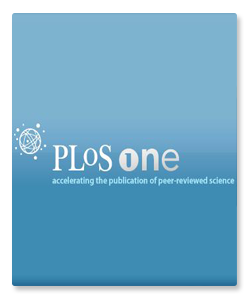

Podstawowym celem badań świadomości jest określenie poznawczych i neuronalnych mechanizmów formowania się świadomego doświadczenia. W ostatnich latach badania te koncentrują się na analizie mechanizmów świadomości metapoznawczej rozumianej jako zdolność do wydawania sądów na temat własnej pamięci i percepcji wzrokowej. W badaniach poświęconych tej tematyce aplikuje się założenia dwóch popularnych modeli świadomości, tj. modelu akumulacji dowodów oraz modelu integracji informacji. Żaden z nich nie wyjaśnia w pełni opisywanych w literaturze wyników, nie definiują bowiem jakiego typu informacje są akumulowane i integrowane. W ramach wystąpienia zaprezentuję serię badań behawioralnych i psychofizjologicznych w których testowaliśmy jakiego typu informacje wpływają na formowanie się świadomości metapoznawczej zarówno w kontekście materiału percepcyjnego jak i pamięciowego. Interpretując nasze wyniki będę odwoływał się do najbardziej popularnych modeli świadomości, a także modelu podejmowania decyzji i monitorowania poziomu wykonania czynności. Zaprezentuje również zarys modelu własnego który aktualnie testujemy w ramach naszych badań.

The study of sign languages provides a powerful tool for investigating the neurobiology of human language. Signed languages differ dramatically from spoken languages with respect to linguistic articulators and perceptual systems required for comprehension. Are the same key brain areas involved in producing and comprehending spoken and signed languages? Does the brain distinguish between gesture and sign? Does the biology of linguistic expression affect the brain bases of spatial language? The “yes” answers to these questions show that the human brain is designed for linguistic functions, regardless of the sensory-motor properties of language.

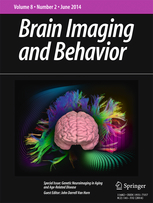
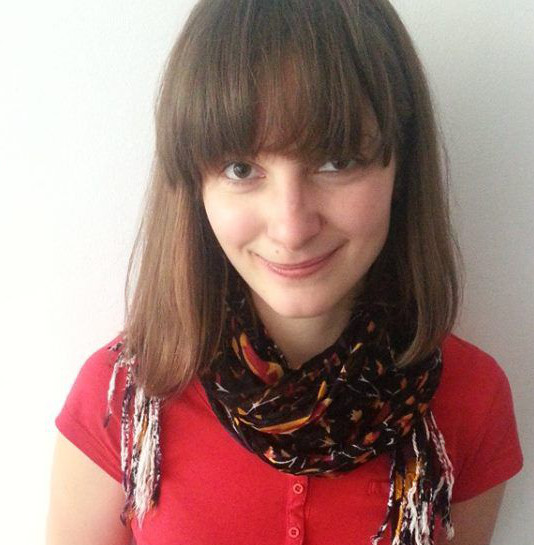

Sexual orientation is an important part of human sexuality. Sexual differentiation in humans is a process that occurs in many steps, some of which occur independently in time, and are not fully determined by sex chromosomes, but also by general interplay between genes and environment - mostly through epigenetics and hormonal influences. For this reason, it is possible that an individual will have a phenotype that is a mosaic of characteristics traditionally associated with both sexes. Hormones, especially in the prenatal period, play an important role in sexual differentiation of the human brain. Research on sexual orientation suggests that there is a shift in cognitive profile as well as brain structure and function of homosexual individuals towards that of heterosexual individuals of the opposite sex. In our project, we are looking for epigenetic, neuronal and cognitive correlates of male sexual orientation. There is a small body of literature on cognitive differences relating to sexual orientation, but almost no studies on the underlying functional differences. In this presentation we will talk about functional magnetic resonance paradigms that could be used to investigate functional differences between homosexual and heterosexual men. We hope to be able to discuss the feasibility of the proposed paradigms with our audience.
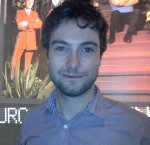
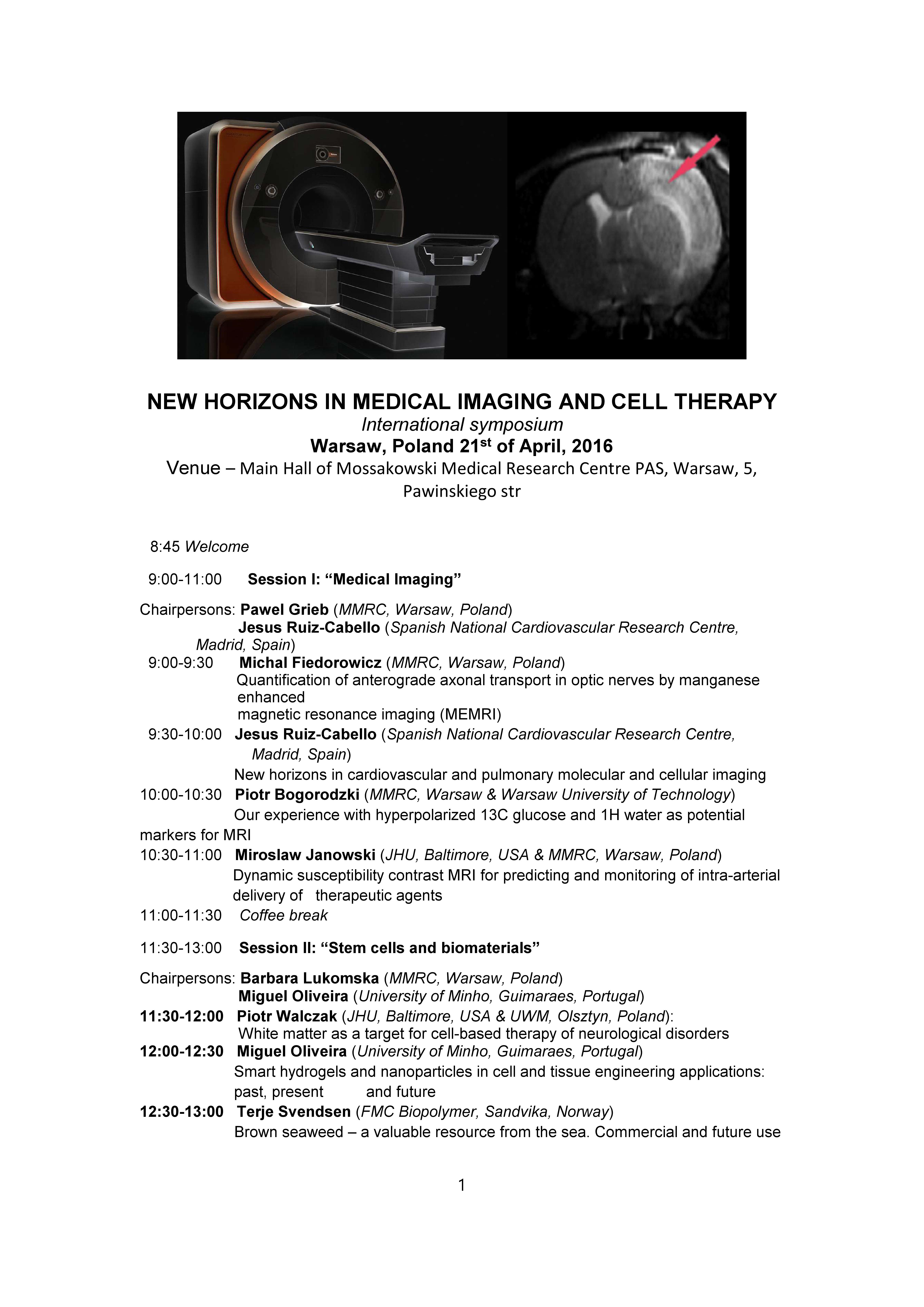

Effective adaptation in a dynamic and ever-changing environment requires optimizing the balance between exploiting well known options and exploring new ones. Recent behavioral evidence suggests that people use at least two distinct strategies while exploring the environment: directed and random exploration (Wilson et al, 2014). Directed exploration is driven by uncertainty and the need of obtaining essential information about the less known option while random exploration is driven by mechanisms related to behavioral variability. However, it has not yet been shown that these two types of behaviors have separate neural origins. In this study we present first causal evidence of the involvement of right frontopolar cortex (RFPC) in directed exploration. We designed a within-subject experiment using continuous theta bursts TMS protocol and a modified, sequential version of the Horizon Task (Wilson et al, 2014). We examined 16 participants in two conditions: vertex (control) and RFPC stimulation (experimental). Inhibiting the RFPC significantly reduced directed exploration while not affecting random exploratory behaviors nor ambiguity preference. This finding establishes the uniquely human role RPFC plays in exploration and inspires the creation of more detailed, mechanistic models of higher cognitive functions.

Cel spotkania/wystąpienia: Głównym celem spotkania jest przedstawienie i zapoznanie z najnowszym projektem pt.: „Badanie neuronalnego podłoża cech temperamentalnych z zastosowaniem wystandaryzowanych dynamicznych bodźców (Baza Filmów Emocjonalnych)” nr DI2014 010444, realizowanym w ramach konkursu Diamentowy Grant 2015. Streszczenie projektu: Próba zrozumienia reakcji emocjonalnych i usposobienia zdeterminowanego temperamentem sięga jeszcze Starożytnej Grecji. Współczesna nauka do badań nad zachowaniami emocjonalnymi wykorzystuje wiele metod badawczych – od prostych pomiarów psychofizycznych, przez wykorzystanie elektrofizjologii, aż po najnowsze odkrycia genetyki molekularnej i neuroobrazowania, a najczęściej stosowanymi w nich bodźcami, są statyczne, wzrokowe bodźce afektywne m. in.: fotografie (np. baza International Affective Picture System (IAPS), Lang i in., 2001) lub bazy słów (np. Nencki Affective Word List, Riegel i in., 2015). Użycie w eksperymentach badawczych filmów, które charakteryzują się dynamiką może pełnić bardzo istotną funkcję w badaniach dotyczących m.in. przetwarzania informacji emocjonalnej, różnic indywidualnych, a nawet temperamentu. Ruchome bodźce emocjonalne pozwalają na wywołanie silniejszego pobudzenia, a dynamika obrazu wpływa na naturalistyczny odbiór bodźca i umożliwia znalezienie się w sytuacji, która bezpośrednio odnosi się do indywidualnego doświadczenia jednostki (Rottenberg i in., 2007). Do tej pory stworzono zaledwie kilka baz tego typu, zbudowanych głównie z wyselekcjonowanych fragmentów filmów, które są powszechnie znane i komercyjne (np. baza The Emotional Movie Database (EMDB), 2012) lub opierające się na dostępnych krótkometrażowych filmach z programów takich jak: Apple Quick Time HD Gallery oraz YouTube (Nishimoto S., i in., 2011). Wyniki tych badań są bardzo obiecujące. Jednak należy zwrócić uwagę, że w przypadku stosowania bodźców statycznych dążyło się do stworzenia zupełnie nowych i wysoce wystandaryzowanych baz, czego nie można powiedzieć o wykorzystywanych do tej pory bodźcach ruchomych. Efekt znajomości filmów oraz aktorów ma duży wpływ na rzetelność wyników, ponieważ widz może mieć indywidualne doświadczenia i wspomnienia związane z prezentowaną sceną z filmu. Warto zauważyć, że bazy tego typu nie były do tej pory stosowane do badań nad temperamentem i różnicami indywidualnymi. Głównym celem projektu jest stworzenie nowatorskiego i wystandaryzowanego narzędzia badawczego, jakim będzie baza filmów emocjonalnych, która poza swoim ogólnym zastosowaniem do badań nad przetwarzaniem informacji emocjonalnej, będzie wykorzystywana także do badań nad temperamentem oraz różnicami indywidualnymi, nie tylko z użyciem klasycznych metod badawczych. Ponadto zrealizowanie projektu umożliwi lepsze zrozumienie moderującej roli temperamentu w przetwarzaniu bodźców afektywnych w oparciu o zaawansowane techniki neuroobrazowania.

This talk will consist of two loosely connected parts, both describing different aspects of brain connectivity. In the first part influence of food supplement to healthy elderly human brain will be presented. In the second part the relation between the tau protein deposition and functional connectivity will be investigated in AD subjects.
In the first part of the talk cognitive and neuronal effects of Carnosine and Anserine using functional MRI will be presented. Thirty-one healthy participants (age 40-78, IQR=58-71, 10M/21F) were randomised to receive 3 months of twice-daily doses of either Carnosine/Anserine (n=15), or placebo (n=17) in a double-blinded study. Functional MRI (3T Siemens, MAGNETOM Verio) and neuropsychological assessments were carried out at baseline and after 3 months. Resting state fMRI data was analyzed using the FSL analysis package, dual regression and randomize statistical analysis functions. There were no differences in neuropsychological scores between the groups at baseline. After 3 months of supplementation, the carnosine/anserine group had better verbal episodic memory performance and decreased connectivity in the default mode network, the posterior cingulate cortex and the right fronto-parietal network, as compared with the placebo group. Furthermore, there was a correlation between the extents of cognitive and neuroimaging changes. These results suggest that daily carnosine/anserine supplementation can impact cognitive function and that network connectivity changes are associated with its effects.
In the second part of the talk integration of two imaging modalities will be presented. The purpose of this study was to evaluate the influence of [18F] THK-5351 PET tracer to the connectivity of brain struck by Alzheimer's disease (AD). [18F] THK-5351 is the latest tracer able to bind to tau protein deposits, known to cause Alzheimer's disease. Brain connectivity was captured using DWI data. Participants were 8 AD patients and 7 age and gender matched cognitively normal healthy controls (HC). First all the image modalities were coregistered. Then left and right hippocampi, and the posterior cingulate cortex (PCC) VOI were extracted from structural MRI. Within these regions we identified significantly higher [18F] THK-5351 accumulation in AD patients as compared with HC. Selected VOIs were divided using standardized uptake value ratio (SUVR) grades as a threshold. Finally, we calculated fractional anisotropy in diffusion kurtosis imaging (DKI-FA) for each VOI at range of SUVR thresholds (starting at 0.5 to 4 in 0.25 increments). We used two way repeated measures ANOVA to evaluate influence of: group factor (AD and HC), SUVR factor (range of thresholds) and their interaction. Group effect was significant both in bilateral hippocampi and PCC, with AD group having significantly lower (p < 0.05) DKI-FA value than HC. Group difference suggests that [18F] THK-5351 accumulation in AD patients is pathological, and not related to aging. Moreover, higher tau concentration values yield higher DKI-FA values, which reflects greater number of axons or increased myelination.

Introduction: Consciousness is identified with both, overt responsiveness to external stimuli and covert internal awareness. Yet, a vivid “stream of consciousness” can be experienced during REM sleep or ketamine sedation despite behavioural unresponsiveness. Here we aimed to identify neural correlates of subjective inner awareness by studying brain functional interactions in a range of anaesthesia and sleep states.
Methods: Data from two independent experiments were analysed: i) anaesthesia experiment where ECoG data were recorded from macaque monkeys sedated with different anaesthetic agents; ii) sleep experiment where depth-electrodes recordings were acquired from 10 epilepsy patients. Correlation coefficient between the envelopes of five classic frequency bands was calculated as a measure of functional interactions.
Results: Hyper-correlated beta-band activity (more correlations and less anti-correlations) was observed during propofol-induced loss of consciousness, but not during wakefulness and ketamine sedation. In the sleep experiment hyper-correlated alpha-band activity was revealed during slow-wave sleep, but not during REM sleep and wakefulness.
Conclusions: The subjective “stream of consciousness” is maintained when brain activations are relatively independent from each other, but when brain signals become hyper-correlated the inner awareness is lost. The present approach is promising in the context of diagnosing consciousness in unresponsive patients.

For most people, pornography viewing is a form of entertainment, but for some individuals problematic pornography use (PPU) accompanied by excessive masturbation is a reason for treatment seeking. Such observations raise a number of societally, scientifically and clinically important questions: Can pornography consumption be addictive? What are the neural mechanisms underlying PPU? How might one best conceptualize PPU and intervene most effectively? Given the pervasiveness of pornography, these questions appear under-investigated and remain unanswered. Here, using fMRI methodology we examined brain reactivity towards erotic and monetary stimuli, disentangling cue-related ‘wanting’ from reward-related ‘liking’ among 22 heterosexual males seeking treatment for PPU and 22 matched controls. Compared with control subjects (CSubs), PPU subjects showed increased activation of brain reward circuits (ventral striatum; VStr and anterior orbitofrontal cortex; aOCF) specifically for cues predicting erotic pictures but not for cues predicting monetary gains. In PPU subjects, this brain activation was accompanied by increased behavioral motivation to view erotic images (higher ‘wanting’) but dissociated from subjective ratings of erotic pictures and VStr/aOFC reactivity for them (measures of ‘liking’). Among CSubs, measures of ‘wanting’ and ‘liking’ were correlated. Our results show that PPU resembles neural and behavioral patterns well-described in substance addictions and gambling disorder (GD). The findings suggest that for some people pornography may be addictive and that behavioral treatments for addictions, particularly those targeting learned cues, warrant investigation in PPU.
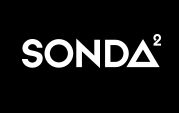

Our previous research revealed that mental tasks involving rule application (RA), e.g. performing arithmetic operations, cause grater tonic increase in cardiovascular activity than tasks requiring rule discovery (RD), e.g. logical completion of a series of digits. However, it was not well defined what brain mechanism was responsible for this difference. The aim of the present study was to compare patterns of brain and cardiac activity while solving both kinds of tasks. Eighteen males, students of medical university, completed a series of numeral RD and RA tasks. The results showed that both tasks did not differ in objective and subjective difficulty. Like in previous studies, tonic increase in heart rate was larger during the RA than the RD tasks. However, analysis of the fMRI data revealed larger brain activation during solving the RD than the RA tasks. Especially, the RD tasks caused larger increase in activity of superior, middle, inferior and medial frontal gyrus, middle temporal gyrus and cingulate cortex. Besides, performance of the RD tasks was positively correlated with the activation of middle and inferior frontal gyrus. These findings correspond with the brain activation pattern evoked by other RD tasks, like The Tower of London or Brixton Test. Furthermore, the RD tasks activated some areas specific for the numeral tasks solving, i.e. precuneus, supramarginal gyrus and angular gyrus. The obtained results show that the increase in brain activation, evoked by the RD tasks, does not correspond with previous cardiac findings (where RA evoked grater increase in cardiovascular activity than RD).

Trening metapoznawczy dla osób ze schizofrenią to metoda terapeutyczna w paradygmacie poznawczo-behawioralnym, która dotyczy zniekształceń poznawczych charakterystycznych dla osób z diagnozą zaburzeń psychotycznych. Między innymi przeskoku do konkluzji, deficytów teorii umysłu, negowania dowodów sprzecznych z tezą, błędnych atrybucji. Dotychczasowe badania wskazują na to, że cykl sesji treningowych (8-16 spotkań) przyczynia się do redukcji nasilenia zniekształceń poznawczych oraz objawów wytwórczych. W przedstawianym badaniu spróbowano odpowiedzieć na pytanie: czy udział pacjentów w modułach dotyczących przeskoku do konkluzji i teorii umysłu będą powodować zmianę terapeutyczną w tych obszarach? W eksperymencie z losowym doborem do grup z udziałem 31 pacjentów z rozpoznaniem schizofrenii wykazano zmianę w nasileniu przeskoku do konkluzji w odpowiedniej grupie na poziomie tendencji ze średnią wielkością efektu oraz istotną zmianę w wyniku testu rozpoznawania wyrazów twarzy ze średnią wielkością efektu w grupie z interwencją dotyczącą teorii umysłu. W pomiarze nasilenia objawów i ideacji paranoicznych nie wykazano zmian. Uzyskane wyniki mogą wskazywać na to, że moduły treningu metapoznawczego przyczyniają się w specyficzny sposób do redukcji zniekształceń poznawczych.

Gry komputerowe stają się w ostatnich latach coraz istotniejszą częścią naszego codziennego życia a tym samym – coraz częstszym przedmiotem zainteresowania psychologów. Wiele ostatnich badań sugeruje, że gracze komputerowi w porównaniu do osób nie mającymi z nimi kontaktu są sprawniejsi w zakresie zadań percepcyjnych, wzrokowo-przestrzennych oraz percepcyjno-motorycznych. Jednocześnie notujemy w badaniach pozytywny wpływ intensywnego grania na bardziej złożone funkcje, w szczególności te związane z przełączaniem się pomiędzy zadaniami i hamowaniem interferencji. Część badań pokazała jednak brak jakiejkolwiek poprawy w wykonywaniu zadań poznawczych. Szczególnie kiedy sprawdzano gry inne niż ,, strzelanki’’ czy gry strategiczne, ale zdarzało się także w przypadku gier akcji. Pomimo wciąż rosnącej popularności gier video, dotychczasowe badania nie dostarczają odpowiedzi na pytania o neuronalne podłoże zachodzących zmian w wyniku grania w gry. Podczas swojego wystąpienia przedstawię część wyników z projektu dotyczącego neuronalnych korelatów różnic w funkcjonowaniu poznawczym między osobami grającymi i nie grającymi w gry komputerowe. Skupię się na zaprezentowaniu wyników z neuroobrazowania strukturalnego – Voxel-based morphometry.
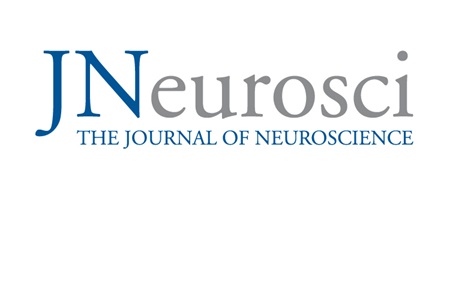


Reading is a relatively recent cultural phenomenon, that plays a crucial role in our society enabling fast access to knowledge gathered trughout the history of humankind. Therefore understanding the brain mechanisms underlying learning to read is of utmost importance. According to neuroimaging studies the ventral visual stream of the brain – containing the Visual Word Form Area (VWFA) – is responsible for the reading of printed words. However some researchers argue, that this area processes stimuli holistically, and thus its role is limited to fast effortless (skilled) reading. Learning to read is characterized by a transition from rather serial letter-by-letter decoding to parallel processing of words as a whole. This first stage of reading acquisition, requiring a process of ordering the symbols in unfamiliar strings, is likely to be placed in the dorsal visual stream known for its engagement in spatial processing. Despite a growing number of behavioral studies on letter position encoding, it is yet to be determined which brain region participates in this process. The aim of this study is to fill this gap by designing a functional magnetic resonance imaging (fMRI) study combined with transcranial magnetic stimulation (TMS) experiment that would test the involvement of the dorsal visual stream in the sequencing of letter position during reading.


Zmiany w zachowaniu i funkcjach kognitywnych kobiet zachodzące w trakcie cyklu menstruacyjnego są najczęściej rozpatrywane jako wynik fluktuacji dwóch najważniejszych hormonów płciowych występujących u kobiet: estradiolu i progesteronu. Zmiany te są częstym obiektem badań psychologicznych. Rozległa literatury z zakresu fizjologii dokumentuje olbrzymią zmienność cykli menstruacyjnych pod względem ich długości, długości poszczególnych faz, stężeń hormonów płciowych oraz momentu występowania owulacji. Pomimo to, metodologia badań psychologicznych opiera się częstokroć na bardzo nieprecyzyjnych sposobach identyfikowania tych, krytycznych parametrów cyklu. W swoim wystąpieniu przedstawię fakty dotyczące zmienności cykli menstruacyjnych kobiet, zidentyfikuję źródła tej zmienności oraz opowiem o możliwych konsekwencjach jej zaniedbywania dla wyników badań psychologicznych.

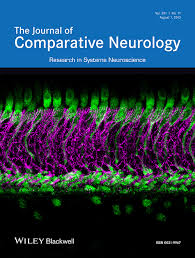

Aalto University School of Science, Brain and Mind Laboratory – raport z praktyk. Podczas spotkania opowiem o swoich dwu miesięcznych praktykach w zespole Lauriego Nummenmaa w Otaniemi, Espoo, Finlandia. Przedstawię krótko strukturę organizacyjną Aalto University i poszczególnych jednostek współtworzących jego infrestrukturę badawczą w dziedzinie neuroscience (http://sci.aalto.fi/en/). Przedstawię także najciekawsze projekty realizowane obecnie w BML (http://becs.aalto.fi/mbl/). W prezentacji działań BML zamierzam poruszyć zagadnienia takie jak: naturalistic neuroscience, dual coil fMRI, 7T MRI, ISC (intersubject correlation) oraz IPS (intersubject phase synchronization). Opowiem także o projekcie, w przygotowaniach do którego uczestniczyłam i o praktycznych aspektach pracy z filmami, jako materiałem eksperymentalnym.

Prezentacja projektu. Emocje wpływają na szereg procesów poznawczych, takich jak pamięć (Holland & Kensinger, 2013). Dobrym materiałem do badania tego mechanizmu są bodźce werbalne, ale zwłaszcza w ich przypadku konieczne jest wzięcie pod uwagę szeroko pojętego kontekstu (Riegel et al., 2015). Wyniki dotychczasowych badań są sprzeczne co do korzystnego lub szkodliwego wpływu emocji na pamięć pamięć asocjacyjną (Chiu et al., 2013). Zazwyczaj jednak przyjmowano, że kontekst emocjonalnej (na skalach znaku emocji/pobudzenia) informacji jest neutralny, a bodźce słowne ograniczały się do listy pojedynczych słów lub par słów. Celem niniejszego projektu jest zbadanie wpływu spójności emocjonalnej informacji słownej i jej kontekstu komunikacyjnego na pamięć asocjacyjną. Dodatkowym celem jest wykazanie, czy wpływ ten jest specyficzny dla emocji podstawowych: strachu i wstrętu (Chapmen et al., 2012, van Hoof et al., 2014). Zostaną przedstawione wstępne wyniki badania pilotażowego z wykorzystaniem fMRI.

Empatia definiowana jest jako proces wielowymiarowy polegający na współodczuwaniu emocji innych, ale także zrozumieniu co myśli i czuje druga osoba. Proces empatyzowania wymaga nie tylko wewnętrznej symulacji stanu emocjonalnego, ale także odróżnienia siebie od drugiego człowieka i umiejętności przyjęcia jego perspektywy, umożliwiając adekwatną reakcję na potrzeby innych. Podczas obserwowania, czy wyobrażania sobie emocji drugiego człowieka, aktywacje struktur mózgowych są bardzo podobne do tych, jakbyśmy odczuwali je jako własne. Poziom aktywności obszarów mózgowych związanych z empatyzowaniem względem osoby odczuwającej ból ulega zmianie w zależności od różnych czynników, takich jak intensywność bólu, czy kontekst sytuacyjny. Wśród nich wciąż niewiele wiadomo na temat wpływu cech osoby, z którą empatyzujemy, a dotychczas uzyskane wyniki są niejednoznaczne. Z jednej strony reaktywność na ból wyrażany na męskiej twarzy jest wyższa w porównaniu do twarzy kobiecej , a z drugiej strony wyniki badań nie pokazują różnic w poziomie empatyzowania z kobietą i mężczyzną. Natomiast dodanie do obserwowanej sytuacji takiego czynnika, jak atrakcyjność cierpiącej osoby, w interakcji z płcią modela pokazuje, że silniej empatyzujemy z atrakcyjnymi kobietami i nieatrakcyjnymi mężczyznami, a silniejszej aktywacji ulega przednia części kory zakrętu (ang. anterior cingulate cortex ACC) i wyspy (ang. anterior insula AI). To mogłoby sugerować, że kluczowe dla empatyzowania jest ukryta w twarzy kobiecość. Wygląd fizyczny: ubiór, fryzura, postawa ciała, niewątpliwie dostarcza wielu informacji dotyczących płci. Poszczególne części twarzy, jak brwi i oczy, szczęka, podbródek postrzegane są jako bardziej kobiece lub męskie. Męskie brwi zazwyczaj są grubsze i położone bliżej siebie, szczęka szersza i bardziej wysunięta. Jako kobiece ocenia się mniejszą, ale okrągłą twarz, duże oczy, mały nos, pełne usta. Kobiecość związana z delikatnością, ciepłem, troską, prawdopodobnie wywołuje silniejszą empatię. Męskość kojarzona z większą dominacją i mniejszą tendencją do współpracy oraz wyższym postrzeganiu cech aspołecznych może skłaniać do niższej empatii. Celem planowanego badania jest określenie, czy są różnice w empatyzowaniu z osobami tylko kobiecymi, tylko męskimi i tzw. typem mieszanym kobieco-męskim. Ponadto planowane jest określenie różnic płciowych podczas obserwowania bólu doznawanego przez kobiety i mężczyzn o kobiecych i męskich cechach wyglądy fizycznego. W trakcie wystąpienia zostaną zaprezentowane teoretyczne i empiryczne założenia projektu.

Project presentation - Asocjacyjne uczenie się obejmuje procesy, umożliwiające tworzenie skojarzeń między dwoma bodźcami, lub bodźcem a określoną formą zachowania. Badania przeprowadzone na zwierzętach wykazały, że poszczególne części ciała migdałowatego, środkowo-przyśrodkowa (SP) i podstawno-boczna (PB) należą do odrębnych systemów, zaangażowanych w różne aspekty asocjacyjnego uczenia się. Na podstawie tych badań sformułowano kilka hipotez dotyczących funkcjonalnej organizacji ciała migdałowatego. Najważniejsze z nich to hipoteza „znaku emocji” (ang., valence hypothesis), hipoteza „znaczenia” (ang., salience hypothesis) oraz hipoteza „równoległego przetwarzania informacji w ciele migdałowatym". Według pierwszej hipotezy, część SP jest zaangażowana w uczenie się apetytywne, a część PB w awersyjne. Według drugiej, części SP i PB są w różnym stopniu zaangażowane w przetwarzanie informacji o bodźcach znaczących, ważnych z punku widzenia przetrwania organizmu lub gatunku, niezależnie od tego, czy mają charakter apetytywny czy awersyjny. Według trzeciej hipotezy, część SP jest zaangażowana w tworzenie skojarzeń między bodźcami (warunkowanie klasyczne), a część PB w tworzenie skojarzeń między określoną formą zachowania i jej konsekwencjami (warunkowanie instrumentalne). Dotychczas nie wykazano, która z tych teorii najlepiej opisuje funkcjonalną organizację ciała migdałowatego u ludzi, ponieważ w eksperymentach prowadzonych z wykorzystaniem metod obrazowania mózgu ciało migdałowate zwykle traktowane jest jak jednolita struktura. Z tego względu celem niniejszego projektu jest wyjaśnienie roli odrębnych części ciała migdałowatego SP i PB w różnych aspektach asocjacyjnego uczenia się u ludzi.
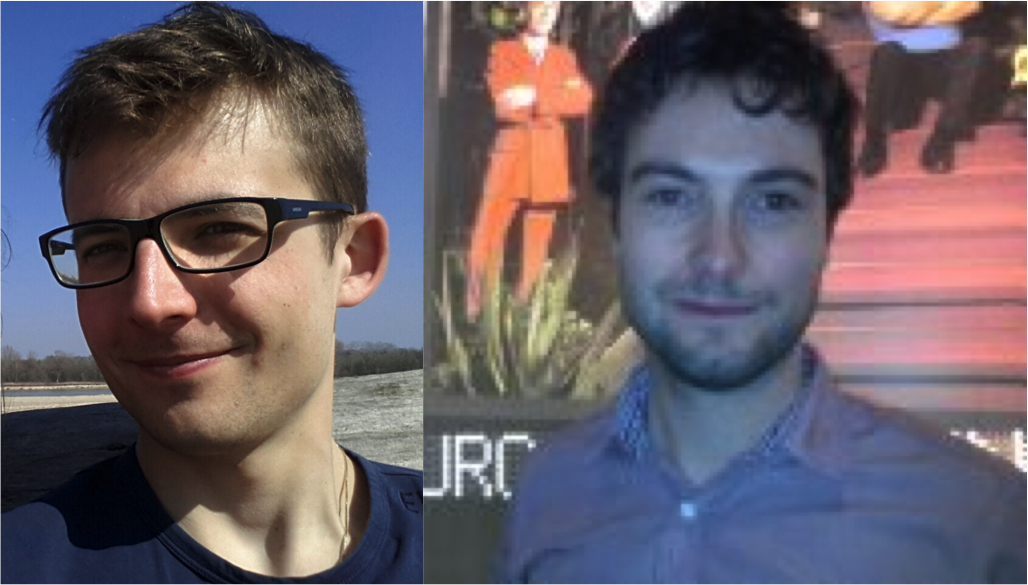

Ze względu na rolę jaką nieprawidłowe sposoby regulowania emocji odgrywają w kształtowaniu się różnych zaburzeń psychicznych istotne wydaje się zrozumienie mechanizmów prowadzących do ich wytworzenia. Ważną rolę w tym względzie odgrywają czynniki ryzyka związane z wczesnym okresem życia (np. przemoc i zaniedbywanie) oraz krytyczne silnie stresujące zdarzenia doświadczane na późniejszych jego etapach. Współczesne badania co raz częściej uwidaczniają sposób w jaki czynniki środowiskowe wpływają na zmiany aktywności genów oraz wynikające z nich zróżnicowanie budowy i funkcji obszarów mózgu będących bazą dla rozmaitych procesów psychicznych. Głównym mechanizmem tego oddziaływania są zmiany o charakterze epigenetycznym, w tym przede wszystkim zmiany w zakresie metylacji DNA. W trakcie wystąpienia zaprezentujemy teoretyczne i empiryczne podstawy poszukiwania zależności pomiędzy częstością występowania negatywnych zdarzeń w dzieciństwie oraz krytycznych zdarzeń z okresu wczesnej dorosłości a procesami regulowania emocji (W trakcie badania planuje się również powiązanie zróżnicowania w zakresie wymienionych aspektów środowiska ze zmiennością wzorca metylacji genomowego DNA oraz określenie roli jaką zmieniona aktywność niektórych genów może odgrywać w wyjaśnianiu aktywności i struktury mózgu). W wystąpieniu przedstawione zostaną ponadto propozycje paradygmatów stosowanych przy badaniu różnych aspektów regulowania emocji, które planujemy wykorzystać w naszym badaniu.

Special guest Prof. Richard Frackowiak

Most research on ethnicity in neuroscience and social psychology has focused on visual cues. However, accents are strong social markers of ethnicity and strongly influence evaluations of others. In the present article, we examine how varying auditory (vocal accent) and visual (facial appearance) information about others affects neural correlates of ethnicity-related expectancy violations. Participants listened to standard German and Turkish-accented speakers and were subsequently presented with faces ethnically either congruent or incongruent to these voices. We expected that incongruent targets (e.g., German accent/Turkish face) would evoke a more negative N2 event-related brain potentials (ERP) component. Results confirmed this, indicating that incongruence evoked more effortful processing of both Turkish and German target faces. These targets were also subjectively judged as surprising. Additionally, the varying lateralization of ERP responses for Turkish and German faces suggests that the underlying neural generators differ, potentially reflecting different emotional reactions to these targets. Behavioral responses showed an effect of violated expectations: German-accented Turkish-looking targets were evaluated most positively of all targets. We suggest that bringing together implicit and explicit measures of expectancy violations, as well as using both visual and auditory information yields a more complete picture of the processes underlying impression formation.
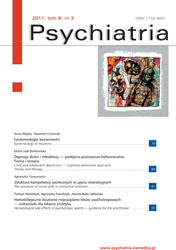

What is the role of spontaneous brain activity? While some consider resting-state activity to be pure noise, others argue that it plays an important role in perception and cognition. Indeed, spontaneous brain activations are not random and noise-like, but rather exhibit highly structured spatio-temporal patterns. Concerning brain’s temporal dynamics, ample research indicates that at rest the brain explores a finite number of reoccurring patterns/states ,which might have a specific functional role (e.g. the so called EEG microstates). In my talk I will present an ongoing study on temporal dynamics of spontaneous functional connectivity networks. Functional networks were estimated based on phase-synchronization from resting-state ECoG data recorded from macaque monkeys. Importantly, ECoG allows studying networks dynamics with both, high spatial and temporal precision. I will present preliminary results indicating that functional connectivity networks are highly dynamic, as they reorganize and evolve on the time-scale of seconds. I will also present methods to uncover the underlying “connectivity states” and discuss the results in the context of existing theories concerning brain spontaneous activity.
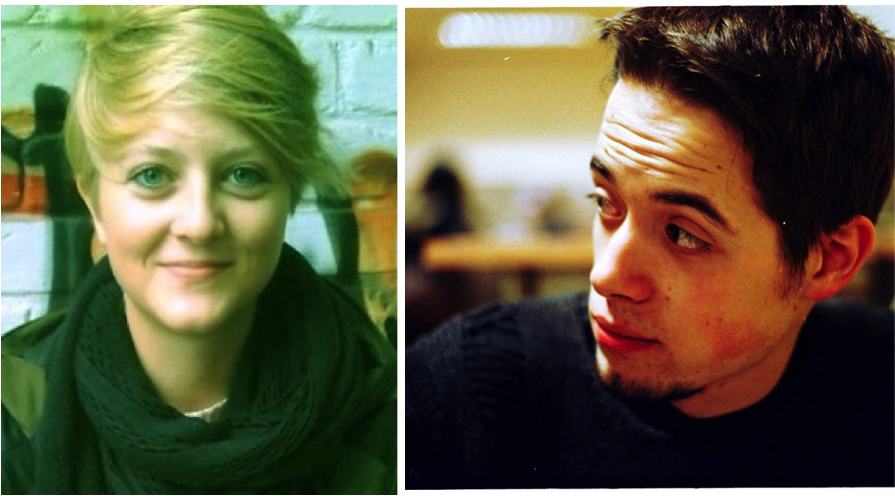
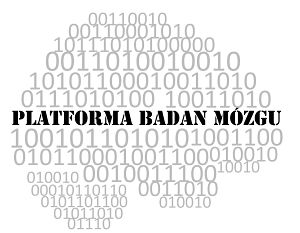

Złożone decyzje wymagają integrowania informacji z wielu źródeł. Często jednak ludzie zamiast uwzględniać wszystkie dostępne informacje, jak nakazują normy racjonalności, wykorzystują tylko część informacji i stosują proste heurystyki decyzyjne. Jakie czynniki sprawiają, że używamy prostych heurystyk? W trakcie wystąpienia zostaną zaprezentowane badania nad neurofizjologicznymi korelatami stosowania prostych heurystyk decyzyjnych. Pierwsze omawiane badanie dotyczyło wpływu pobudzenia emocjonalnego na stosowanie strategii decyzyjnych. Osoby badane podejmowały decyzje wielokryterialne, przed podjęciem decyzji badanym prezentowano zdjęcia z zestawu IAPS. W trakcie badania mierzono przewodnictwo skóry. Wysokie pobudzenie emocjonalne było związane z tendencją do stosowania prostej strategii decyzyjnej. Celem drugiego badania było znalezienie korelatów stosowanie strategii decyzyjnych w sygnale EEG. W trakcie podejmowania decyzji wielokryterialnych dokonywano pomiaru EEG. Amplituda komponentu na P300 na kolejne wskazówki decyzyjne była skorelowana z rodzajem zastosowanej strategii decyzyjnej. W dyskusji omówione zostaną wskaźniki neurofizjologiczne, które pomagają przewidzieć stosowanie heurystyk, możliwe anatomiczne źródła tych sygnałów oraz plany dalszych badań w tym obszarze.

Recent studies have shown that bilinguals outperform monolinguals in non-verbal tasks requiring engagement of cognitive control. It has been suggested that experience of second language acquisition alternates the executive control network. Yet, little is known about neural representation of bilingual cognitive control mechanism per se. In the present study, a canonical paradigm for executive functions measurement was utilized to (a) investigate the modulation of interference and facilitation by stimulus onset asynchrony (SOA) and (b) to explore the recruitment and activation of executive control network in bilinguals using fMRI method. Eleven English-Spanish speakers performed a modified Stroop task, in which either the target and distractor occurred simultaneously (SOA 0 ms) or a word was displayed 200 ms before colour (SOA -200 ms). Regardless of condition the highest mean reaction times (RTs) were observed in incongruent trials. In addition, RTs were sensitive to SOA manipulation, such that asynchrony between relevant and irrelevant stimuli increased interference and Stroop effects, but did not affect facilitation. Further, neuroimaging data showed the similar pattern of activation for Stroop and interference, although the latter revealed more extensive frontoparietal network. The common recruited regions included inferior and middle frontal gyri and anterior cingulate. Facilitation showed no significant activation. Contrary to the expectations, neither interference nor Stroop effects appeared to be modulated by SOA condition at brain activity level. One potential explanation of this result could be that bilingual control network is used more efficiently to employ attentional control over time. Further analysis and research are needed to better understand this finding.

Rhea French1, Przemysław Marcowski, Robert W. Flint, Jr.1 1The College of Saint Rose, Albany, NY, USA Abstract Diffused throughout the brain are neurotransmitter systems responsible for the neurological and behavioral mechanisms of learning and memory. Of these main systems the serotonergic system is found to be extremely important in both basic and complex functionality, but is yet to be fully understood. Decades of research suggests that serotonergic system is required and responsible for behavioral, mechanistic, and cognitive processes. Fundamental research places heavy emphasis on the relationship between serotonin (5-HT) and emotion by correlating 5-HT with mood dysregulation. However more recent research has directed attention to the integration of 5-HT, emotion, learning, and memory, e.g. through the interplay of the hypothalamic-pituitary-adrenal axis, and brain structures such as the amygdala, hippocampus, and prefrontal cortex. The aim of the present study was to investigate the relationship between tryptophan depletion, the precursor to 5-HT, and anxiety, learning and memory, and depression. We hypothesized that compared to control groups, those exposed to 4-Chloro-DL-phenylalanine methyl ester hydrochloride (PCPA) will display (1) increased anxiety-like behaviors on the elevated plus maze; (2) longer cross over latencies in the passive avoidance chamber; (3) impaired extinction learning; and (4) increased depressive-like behaviors in the forced swim test. Results revealed that administration of PCPA significantly altered behavior in the passive avoidance chamber and forced swim test, but not the elevated plus maze in adolescent male rats. Future studies should examine the state dependent nature of the drug.

W naszej prezentacji omówimy projekt badawczy “Fluent” zrealizowany w latach 2011-13 na University College Cork (Irlandia) we współpracy z uniwersytem w Jyväskylä (Finlandia). Celem projektu była ocena skuteczności eksperymentalnej komputerowej gry edukacyjnej Graphogame-Fluent jako narzędzia poprawy tempa czytania u dzieci w klasach 3-6 szkoły podstawowej. W ramach projektu opracowano grę, przeprowadzono badania przesiewowe (w celu identyfikacji dzieci wolno czytających) oraz eksperymentalne badania skuteczności gry – równolegle w dwóch krajach (Polsce i Irlandii). Badania napotkały na szereg przeszkód – technologicznych, logistycznych i pedagogicznych – których nie przewidzieliśmy planując projekt. W rezultacie nie udało nam się zebrać danych wystarczających (ilościowo i jakościowo) do oceny skuteczności interwencji. Te dane, które udało nam się zebrać, sugerują skuteczność niewielką lub zerową. W naszej prezentacji przedstawimy pokrótce metodologię i wyniki badań, koncentrując się na przeszkodach, które uniemożliwiły nam realizację projektu w formie pierwotnie zaplanowanej – ufając, że słuchacze nauczą się czegoś na naszych błędach.
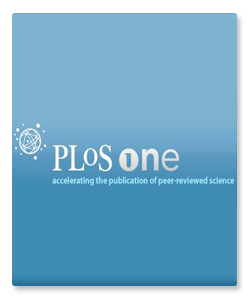

I will present a method for source localization in human epilepsy patients with intractable seizures [1], using recordings from Electrocorticography (ECoG) and Stereoelectroencephalography (SEEG). I will show preliminary results from kernel Electrical Source Imaging (kESI) method, which is based on the kernel Current Source Density (kCSD) method [2]. I will also expand on the planned strategy to extend this method using imaging techniques, into a patient specific, pre-surgical evaluation tool. 1) Kaiboriboon et.al (2012) 'EEG source imaging in epilepsy—practicalities and pitfalls'. Nature Reviews. http://www.nature.com/nrneurol/journal/v8/n9/full/nrneurol.2012.150.html 2) Potworowski et.al (2012) 'Kernel current source density method.', Neural Computation. http://www.ncbi.nlm.nih.gov/pubmed/22091662

Reading skills are indispensable in modern technological societies. As literacy is a relatively new, cultural invention, it has been suggested that reading acquisition is rooted in, and interacts with, naturally evolved brain mechanisms for visual and auditory processing. In a series of neuroimaging studies, we have investigated how the learning of letter symbols interacts with brain mechanisms for audiovisual and speech processing. I will discuss results that point to at least two important sources of variability in how script fine-tunes speech processing in superior temporal cortex (STC): 1) developmental differences in reading fluency and 2) the language in which someone learns to read. Recently, we have also started a project to "zoom in" to the fine-scale organization of letter and speech sound responses in STC, by systematically investigating unimodal and multimodal responses at different spatial resolutions using 3T (3mm3) and 7T (1.5 mm3 and 1.1 mm3) fMRI. I will present preliminary data showing that the increase of spatial resolution reveals a higher proportion of letter-selective voxels, which potentially indicates even stronger influence of script in the "auditory" STC.

Expected utility theory posits that a rational choice under risk results from the trade-off between alternatives made by weighting the utilities of consequences by their probabilities and by summing weighted outcomes across each alternative. Nevertheless, numerous research has repeatedly demonstrated that people are not normatively rational – especially if decision problems are associated with affect (i.e., affect-rich outcomes). For example, it has been shown that affect-poor outcomes were preferred over affect-rich outcomes under certainty, but the direction of this effect reversed under low probability. There are at least two competing hypotheses regarding the cognitive process underlying these results. On the one hand, in affect-rich decision problems, people may neglect information about probability. On the other hand, processing information about probability may be biased resulting in a stronger curvature of the inversely S-shaped probability weighting function which reflects how a decision-maker transforms objective probabilities into decision weights. In this talk, we are going to present a series of studies investigating the psychological mechanism of the risky decision-making process. Specifically, we will focus on the role of numerical abilities that are likely to account for differences between affect-rich and affect-poor decisions.

http://ohbm.loni.usc.edu/program/

Neurobiology Center
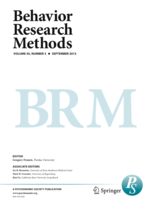

W czasie prezentacji przedstawię program służący automatyzacji i optymalizacji obróbki danych zarejestrowanych z wykorzystaniem rezonansu magnetycznego.

Mimo, że dopiero w czwartym roku życia dzieci zaczynają werbalnie wnioskować na temat fałszywych przekonań innych osób, to nawet 9-10 ms niemowlęta zachowują się jakby rozumiały co może, a czego nie może wiedzieć dorosły. Inne badania pokazują, że z jednej strony dorośli popełniają wiele egocentrycznych błędów w interakcji z drugą osobą, ale jednocześnie mają nieświadomą i nieintencjonalną tendencję do kierowania uwagi na zachowania i przekonania innych. Wyniki te są obecnie tłumaczone przez model podwójnego przetwarzania, który wyróżnia automatyczną i refleksyjną teorię umysłu (np.Apperly & Butterfill, 2009, Schneider et al., 2012). Podczas wystąpienia chciałabym przedstawić ostatnie wątpliwości wysunięte wobec takiego rozwiązania, oraz zaproponować alternatywę: model iteracyjnego przetwarzania (Cunningham, Zelazo, 2007), który nie zakłada istnienia dwóch oddzielnych systemów, ale stopniowy wzrost refleksyjności w czasie, ograniczony przez kontekst i czynniki zewnętrzne. Przedstawię projekt badawczy mający na celu weryfikację modelu iteracyjnego na poziomie behawioralnym i mózgowym w odniesieniu do przetwarzania perspektywy poznawczej innych osób.

W czasie prezentacji zostanie przedstawiony projekt badania które ma dostarczyć dowodów na przyczynową rolę bocznej kory bieguna przedczołowego (okolice BA 10) podczas zmian strategii decyzyjnych mających na celu maksymalizację zysku w niepewnym i zmieniającym się środowisku. Hipoteza badawcza zakłada, że stymulacja prawej BA10 przy użyciu stymulacji ciągłymi impulsami w rytmie theta (continuous theta bursts, cTBS) przy użyciu przezczaszkowej stymulacji magnetycznej (Transcranial Magnetic Stimulation, TMS) spowoduje wyhamowanie aktywności w obrębie tej części kory, tym samym ograniczając liczbę adaptacyjnych zmian strategii podczas zadania decyzyjnego.

Istnieje wiele badań związanych z mózgowymi korelatami emocji, zdecydowana jednak większość dotyczy sytuacji, w której aktywność mózgu rejestrowanajest podczas percepcji bodźców emocjonalnych. Wiemy, że za aktywność struktur emocjonalnych odpowiedzialny jest w znacznym stopniu proces percepcji oraz rozpoznawanie i wartosciowanie bodźców emocjonalnych. W naszych badaniach, będących rozszerzeniem dotychczasowych procedur EEG, staramy sie odnaleźć te strukturymózgowe, których aktywność jest skorelowana z samym doświadczeniem stanu emocjonalnego (a nie percepcji afektywnych tresci). Dodatkowo, wiele badań czyni założenia, wg których prezentacja określonych treści wzbudza założony stan emocjonalny. Jako, ze rzeczywisty efekt stymulacji jest zindywidualizowany, w naszej procedurze staramy się zbierać deklaracje o aktualnym stanie emocjonalnym osoby badanej, by wykorzystać je jako predyktor aktywacji mózgowych.

Neuroplasticity in the adult brain is usually constrained by sensory boundaries. A large-scale, cross-modal reorganization is thought to be possible only in sensory loss or brain injury. Against this view, we recently showed that the visual cortex of sighted braille learners can be activated by tactile reading. Thus, cross-modal recruitment of visual areas for tactile tasks is possible even in sighted adults. Here we wanted to test whether this recruitment is associated with changes in the brain structure. 29 subjects were enrolled in a 9-month tactile braille course. At the beginning of the course and at its end, they underwent an MRI session, during which high-quality T1-weighted images were acquired for voxel-based morphometry (VBM) analysis. Additionally, resting-state fMRI data were collected for functional connectivity analysis. 9 months after the end of the course, 19 subjects participated in a follow-up session. Almost all subjects learnt tactile braille reading and reached reading speeds comparable to blind 2nd graders. After the training we observed grey matter volume increase in the primary and secondary visual cortex. Structural changes were left-lateralized and restricted to regions that represent peripheral visual field. Moreover, grey matter volume in these regions was correlated with progress in tactile word reading. Observed changes were largely preserved even almost a year after the end of the training. In line with our previous study, 9-month braille training did not result in somatosensory cortex reorganization. Our results show that cross-modal interactions between somatosensory and visual cortices are sufficient to trigger structural changes in the visual cortex. Our study thus demonstrates that experience-dependent, structural brain plasticity can overcome sensory division of the cortex even in the healthy, adult brain. Together with our previous findings, our results shed light on brain reorganization induced by prolonged tactile training – complex tactile input, such as braille, seems to be processed partly in the higher-tier visual cortex, to which it is transferred via corto-cortical connections between early somatosensory and visual cortices.

Sensory deprivation such as blindness or deafness is known to enhance perception and cognition in the remaining modalities. Blind people are known to have superior verbal memory and learn braille alphabet more easily. Proposed mechanisms of change: Plasticity of neuronal connections. Some processing networks (e.g. language) are expanded by including a deprived sensory cortex. In Blind, the reorganised visual cortex is recruited for language (Bedny et. al., 2011). Congenitally deaf have superior peripheral visual perception under attentional load and are expert in using a sign language (Bavelier et. al., 2006). However, evidence from animal model studies located sources of visual enhancements only in secondary auditory structures. (Lomber et. al., 2010). Impact of congenital deafness on role of auditory cortex and overall brain structure and function is still poorly understood. Resting-state functional connectivity can unravel connections of deprived cortices (Bedny et. al., 2011). Seeds of auditory areas were defined using anatomical templates, confirmed with individual tracking of thalamocortical fibers using Diffusion Tensor Imaging MRI. Thalamocortical auditory tracts remain intact in the deaf. Results show increased connections of primary auditory cortices with orbitofrontal regions and cerebellum. Secondary auditory cortices show increased connections with orbitofrontal, somatosensory and various areas of cuneus, including fusiform face area. Visual and somatosensory connections of secondary auditory areas conform to evidence from animal models of deafness, specifically. Planum Temporale seems to contribute to enhancements in visual processing. Secondary areas’ connections with fusiform face area can be an effect of sign language acquisition, in which facial expression takes part in coding a grammatical structure. Extensive connectivity with orbitofrontal cortex can indicate role in in prioproceptive-motor integration and emotional activities (Kringelbach et. al., 2006).

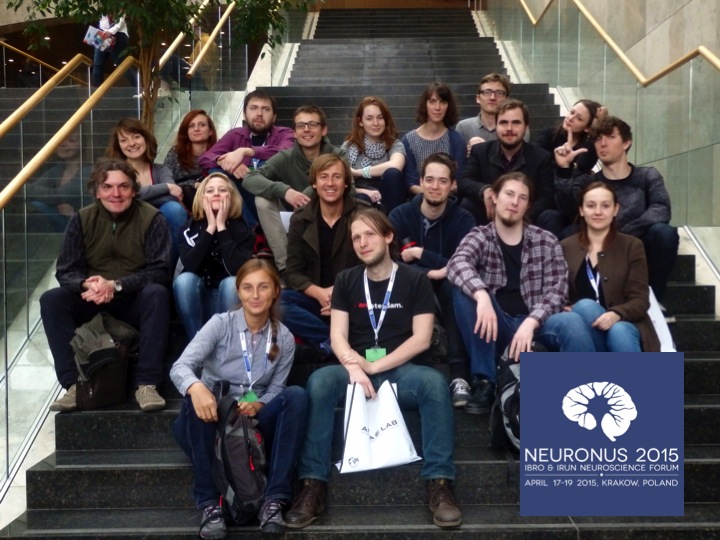

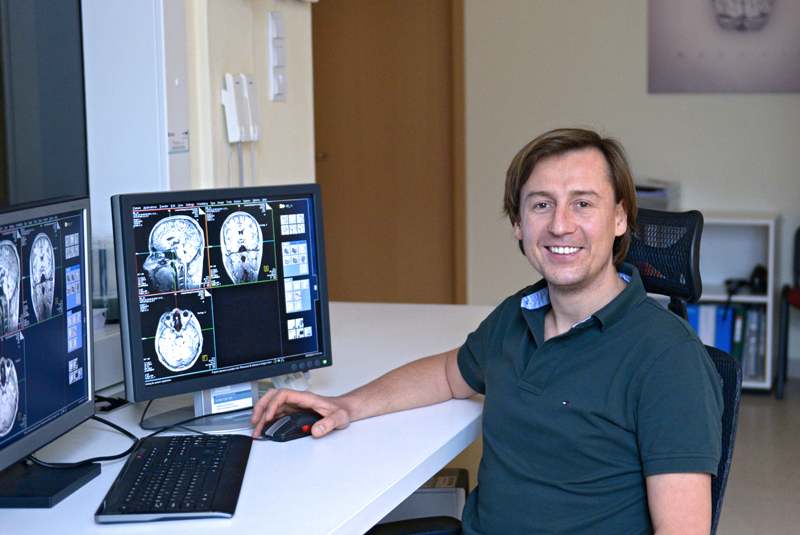

Emotion can influence various cognitive processes, however its impact on memory have been traditionally studied over relatively short retention periods and in line with dimensional models of affect. As distinct categories of basic emotions are known to also affect cognition, the present study aimed to investigate emotional effects on long-term memory according to a combined framework of affective dimensions and basic emotions. Behaviourally, the more negative the pictures they better they were remembered, but also the more false recognitions they provoked. Similar effects were found for the arousal dimension. Retrieval success was greater for pictures with lower intensity of happiness and with higher intensity of surprise, sadness, fear, and disgust. fMRI analyses showed a significant activation for remembered vs. forgotten images in several cortical areas including anterior cingulate and bilateral anterior insula as well as subcortically, in bilateral caudate and right thalamus. These results emphasize the need to control for different categories of basic emotions in research investigating the retrieval from long-term memory. Our data supports the hypothesis that the memorized material over time becomes stored in a distributed cortical network including the core salience network and basal ganglia.

This project proposes a new method in the cognitive analysis of the concept HUMAN as it is embodied in the thoughts of the Spanish philosopher Ortega y Gasset, and lexicalized in his essay the dehumanization of art. The HUMAN element is here understood through cognitive mappings of metaphorical and metonymic projections. We will try to show the importance of the concept DEHUMANIZATION and its application to the notion of social evolution in the 21st century.

W referacie zostanie przedstawiona metodologia badań nad węchem i preferencjami zapachowymi. Opisana zostanie specyfika tego typu badań, ich wady i zalety, oraz najnowsze trendy w badaniach nad węchem. Na przykładzie zainteresowań badaczy pracujących w Smell and Taste Centre (Drezno), a także w kontekście literatury światowej w tym zakresie, zaprezentuję metodologię badań węchu i zapachu stosowaną w badaniach interdyscyplinarnych, także powiązanych z neuropsychologią.

W referacie zostaną przedstawione zasady prowadzenia badań "ktrótko-terminowych" w populacjach tradycyjnych, w tym w plemionach Yali (Papua Zachodnia) i Tsimane (Amazonia). Opisana zostanie specyfika tego typu badań, ich wady i zalety. Na przykładzie badań, przeprowadzonych przez nas i inne grupy badawcze, zaprezentujemy wiele ograniczeń i trudności, które można napotkać podczas badań terenowych. Z drugiej strony, wskażemy liczne, ambitne projekty badawcze, z różnorodnych dziedzin nauki, które zostały przeprowadzone przy współpracy z badaczami pracującymi wśród plemion tradycyjnych.

W projekcie weryfikowane są hipotezy o zakłóceniu percepcji bodźców dotyczących własnej osoby u pacjentów z zaburzeniami ze spektrum autyzmu (ang. autism spectrum disorder - ASD). Przedstawione zostaną wyniki badań wyjaśniające, w jakim stopniu specyfika przetwarzania bodźców, odnoszących się do Ja i do otoczenia społecznego, jest odzwierciedlana w mechanizmach neurobiologicznych, obserwowanych przy pomocy EEG. Do stymulacji mózgowej reakcji w odpowiedzi na informacje odnoszące się do Ja, wybrane zostały bodźce powiązane z własną osobą – imię i nazwisko oraz twarz. W zakończonych eksperymentach wykazano brak typowego dla populacji generalnej, preferencyjnego zaangażowania uwagi automatycznej i intencjonalnej (odzwierciedlonej amplitudą P300 ERP) na bodźce dotyczące własnej osoby w grupie nastolatków i dorosłych z ASD. W przypadku grupy eksperymentalnej nie wystąpiło różnicowanie między własną osobą a dobrze znaną osobą bliską (członkiem rodziny), podczas gdy u osób kontrolnych to własna twarz i imię angażowały uwagę w sposób preferencyjny. Ponadto przeprowadzono analizy ERD/S (event related synchronization/desynchronization) oraz koherencji sygnału EEG między poszczególnymi kanałami. Stwierdzono, że przetwarzanie bodźców społecznych (imion i nazwisk) u osób typowo rozwijających się wiąże się z wyraźną synchronizacją widma mocy w paśmie beta oraz wzrostem koherencji między obszarem potylicznym a czołowym. W paśmie alfa stwierdzono spadek synchronizacji w obszarach potylicznych. U osób z ASD efekty ERD/S były istotnie słabsze w poszczególnych pasmach częstotliwościowych, natomiast koherencje były słabsze w paśmie beta i silniejsze w paśmie alfa, w porównaniu do grupy kontrolnej.

Dokładne zbadanie relacji między różnymi rodzajami fobii a wyżej wymienionymi procesami poznawczymi służy udoskonaleniu sposobów zapobiegania i leczenia tego rodzaju zaburzeń. W prezentowanych badaniach zastosowano metodę symultanicznej rejestracji EEG i funkcjonalnego rezonansu magnetycznego (fMRI) w celu zbadania aktywności mózgu w trakcie stymulowania zdjęciami przedstawiającymi obiekty/sytuacje zagrażające dla osób z lękiem społecznym, arachnofobików i hematofobików. W badaniu uczestniczyli mężczyźni i kobiety w wieku 18-35 lat z lękiem społecznym (N=13), arachnofobią (N=12), hematofobią (N=12) i 12 osób kontrolnych. Osobom badanym prezentowano dwie serie zdjęć przedstawiających ekspozycję społeczną, dwie serie zdjęć przedstawiających pająki i dwie serie zdjęć pokazujących krew/iniekcję. W każdej z tych serii pomiędzy zdjęciami fobicznymi pokazywane były zdjęcia neutralne. Ponadto osoby badane oglądały dwie serie zdjęć w skład których wchodziły tylko zdjęcia neutralne. W referacie przedstawione zostaną wyniki behawioralne i neuroobrazowe.

Dotychczasowe badania zdają się dość jednoznacznie wskazywać na uprzywilejowany charakter bodźców seksualnych w szeregu procesów zachodzących w organizmie człowieka. O ile istnienie różnic płciowych w tym zakresie było wielokrotnie dokumentowane, stosunkowo niewiele wiadomo na temat różnic w przetwarzaniu bodźców seksualnych wynikających z orientacji seksualnej. W obliczu braku dostępności odpowiednich bodźców, baza Nencki Affective Picture System (NAPS) uzupełniona została o zestaw zdjęć o tematyce erotycznej, sprofilowany pod kątem badania grup o odmiennej płci i orientacji seksualnej. Porównanie wyników dla poszczególnych grup badanych sugeruje, że zarówno płeć, jak i orientacja seksualna stanowią istotne czynniki modulujące oceny behawioralne bodźców erotycznych.

Polipeptyd aktywujący przysadkową cyklazę adenylową (PACAP) oraz jego receptor (PAC1) są białkami zaangażowanymi w zarządzanie behawioralną odpowiedzią organizmu na sytuację stresu. Niedawno stwierdzono istnienie specyficznej dla płci relacji pomiędzy zmiennością w genie ADCYAP1R1 (kodującym PAC1) oraz zaburzenia po stresie traumatycznym (PTSD). W trakcie swojego wystąpienia przedstawię dane dotyczące relacji pomiędzy zmiennością we wspomnianym genie oraz temperamentem w rozumieniu Graya a także aktywnością mózgu w trakcie sytuacji stresu społecznego. W badaniu uczestniczyło 412 osób obydwu płci. W całości grupy analizowano relację pomiędzy szeregiem polimorfizmów a cechami temperament mierzonymi kwestionariuszem BIS-BAS. Aktywność mózgu analizowano zaś na grupie 48 osób (25 mężczyzn i 23 kobiety) wyselekcjonowanych pod kątem występowania różnych wariantów polimorfizmu rs2267732 umiejscowionego w genie ADCYAP1R1. Sytuacja stresu społecznego wywoływana była przy zastosowaniu procedury MIST (Montreal Imaging Stress Task). W badaniu wykazano specyficzną dla płci relację pomiędzy zmiennością w genie ADCYAP1R1 a cechą BAS. Ponadto wykazano specyficzną dla płci relację między polimorfizmem rs2267732 a aktywnością mózgu podczas stosowania procedury MIST.

It is still a matter of debate, what are the mechanisms and patterns of developmental dyslexia, its mediators and the relation between congenital and external factors. In fact, there is now evidence that cognitive abilities and intellectual achievements are affected by the environment in which a child is raised. Yet, very little is known about the relation between socioeconomic status, dyslexia and its neuronal correlates. The aim of present study was to investigate, whether those relations can be observed in a sample of Polish pre-reading children, who are at familial risk of developmental dyslexia and their age-matched control peers.

Wystąpienie dotyczyć będzie dwóch wątków: podobieństwa ścieżek patrzenia uwarunkowanego treścią i kategorią afektywną bodźca oraz relacji pomiędzy podobieństwem ścieżek patrzenia a poprawnym rozpoznaniem bodźca.

LabMeeting LOBI
Psychologów badających dyskontowanie interesuje proces subiektywnego spadku wartości kwoty wraz z jej odroczeniem lub z niepewnością otrzymania. Podczas prezentacji omówione zostaną wybory: (a) w warunkach odroczenia, tj. kiedy alternatywy wyboru różnią się momentem otrzymania, (b) w warunkach niepewności, tj. kiedy alternatywy wyboru różnią się prawdopodobieństwem otrzymania. Analizie i porównaniu zostanie poddana słabiej zbadana percepcja ryzyka związanego z odsunięciem wypłaty w czasie z lepiej poznaną percepcją ryzyka rozumianego jako niepewność otrzymania wypłaty natychmiastowej.

LabMeeting LOBI
Zdolność prawidłowej odpowiedzi na bodźce społeczne jest jednym z podstawowych wyznaczników warunkujących sprawność funkcjonowania społecznego. W licznych badaniach dotyczących m.in. rozpoznawania emocji na podstawie wyrazu twarzy czy postrzegania ruchu biologicznego udokumentowano specyficzne deficyty w zakresie reakcji na bodźce społeczne u osób chorych na schizofrenię. Jednocześnie rodzaj prezentowanych treści (ludzie, twarze vs nieożywione obiekty, krajobrazy) rzadko uwzględniany jest jako czynnik w badaniach dotyczących zdolności odpowiedzi na bodźce afektywne w schizofrenii. Prezentowane badanie miało na celu ocenę behawioralnych i neurofizjologicznych wskaźników odpowiedzi na bodźce neutralne i awersyjne z baterii Nencki Affective Picture System w zależności od rodzaju ich treści. Zaobserwowano różnice pomiędzy grupami w zakresie oceny bodźców społecznych (pacjenci oceniali je jako mniej pobudzające niezależnie od typu zdjęcia, podczas gdy osoby zdrowe bodźce awersyjne zawierające treści społeczne postrzegały jako bardziej pobudzające niż bodźce bez takich treści), przy braku różnic w zakresie odpowiedzi neurofizjologicznej na różne typy bodźców. Ponadto, zaobserwowano związek pomiędzy oceną bodźców społecznych oraz reakcją neurofizjologiczną na nie a odpowiednio objawami wytwórczymi i ubytkowymi schizofrenii.

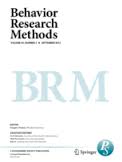

LabMeeting LOBI

LabMeeting Lobi
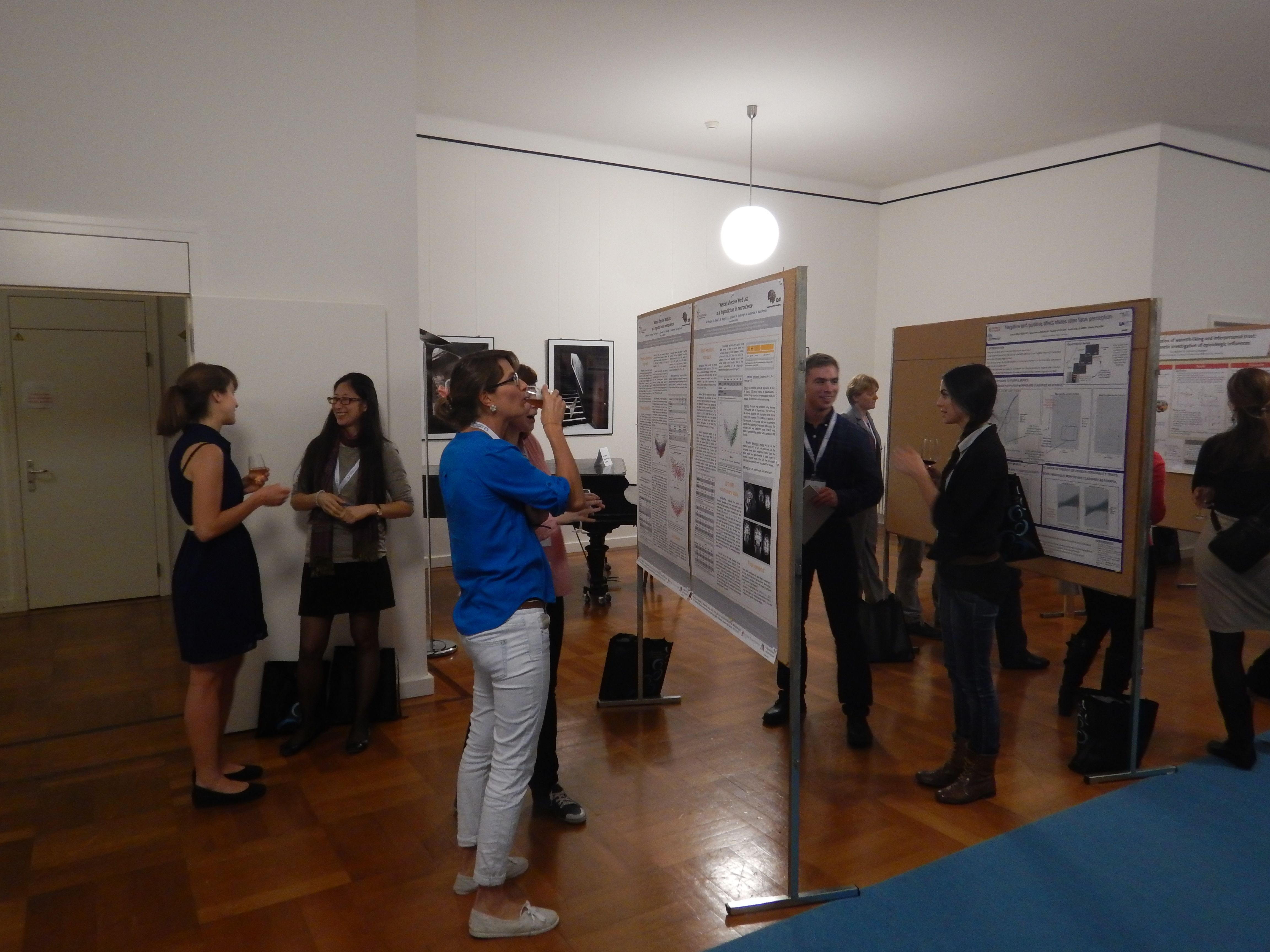

How do emotions enter perception, cognition, and behavior? This talk offers some behavioral and physiological (EMG and fMRI) evidence suggesting a role for somatosensory and motor resources in processing of facial expressions, gestures, and emotional concepts. I will start by showing some basic emotional embodiment effects. Critically, I will then highlight the situated and even "rational" nature of emotional embodiment. That is, I will argue that recruitment of embodied resources can be highly selective and that, when relevant, top-down inferences flexibly transform the involvement of embodied resources. Overall, my talk will call for a more dynamic view of the links between emotion, cognition, and embodiment.
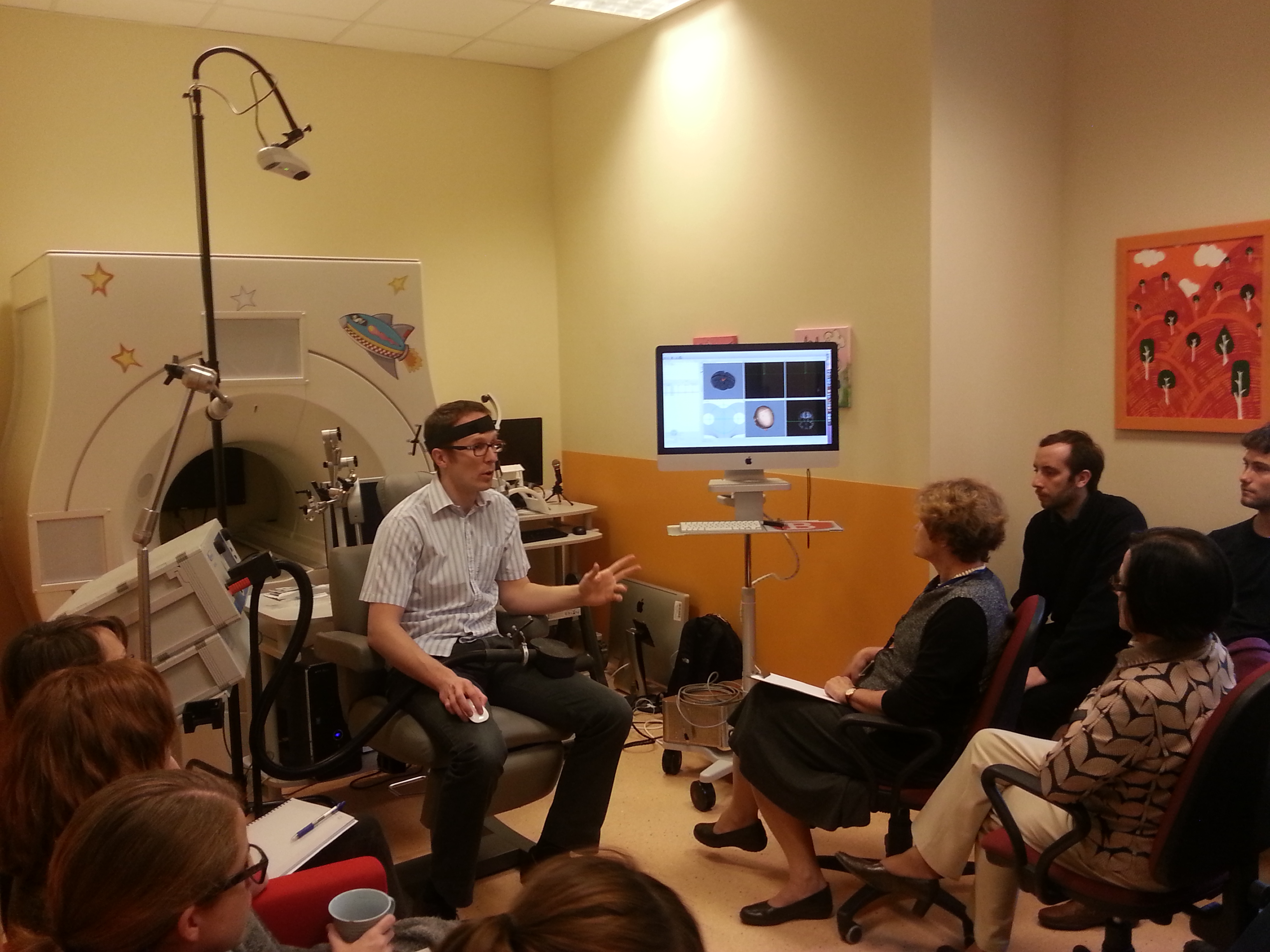

Cognition emerges from interactions within spatially distributed but synchronized brain networks. Such networks are transient and dynamic, established on the timescale of milliseconds in order to perform specific cognitive operations. But it is not known whether topological features of transient cognitive networks contribute to cognitive processing. Cognition might merely change weights of intrinsic functional networks or, conversely, cognitive act might require qualitatively new topological arrangements. To address this question, we recorded EEG when subjects performed a visual discrimination task and characterized source-space weighted functional networks with graph measures. We revealed rapid, transient, and frequency-specific reorganization of network’s topology during cognition. Specifically, cognitive networks were characterized by strong clustering, low modularity, and strong interactions between hub-nodes (i.e. the rich-club nodes). Dense and clustered inter-modular connectivity between hubs might facilitate network-wide integration of information and be a substrate of the “global workspace” necessary for cognition and consciousness to occur.

The opening of the Laboratory of Brain Imaging was inaugurated with a workshop on structural and functional brain imaging. We invited our colleagues from Switzerland, Austria, Germany, France, Poland and US. The speakers included:
• Antoine Lutti, Ferath Kherif, Stanisław Adaszewski, Bodgan Draganski and Richard Frackowiak Laboratoire de recherche en neuroimagerie, CHUV, Univeristy of Lausanne, Switzerland
• Stefan Heim - Deptartment of Psychiatry, RWTH Aachen University, Germany
• Irene Altarelli – Laboratoire de Sciences Cognitives et Psycholinguistique, Ecole Normale Supérieure, Paris, France
• Fabio Richlan - University of Salzburg, Department of Psychology, Austria
• Piotr Bogorodzki - Warsaw University of Technology, Poland
• Marcin Szwed - Institute of Psychology, Jagiellonian University, Cracow, Poland
• Kenneth Pugh - Haskins Laboratories, New Haven, United States

Auditory processing disorder (APD) describes listening problems manifested by poor sound localization, auditory discrimination, auditory pattern recognition; temporal aspects of audition; auditory performance in competing acoustic signals (ASHA, 2005; Chang, Keith, 2009; Dawes et al., 2008; Miller et al., 2011). Atypical activation of brain network implicated in acoustic attention may underlie behavioral problems (Bamiou et al., 2003). However, the neural correlate of central auditory dysfunction is poorly understood. Recently, there is a growing interest in the investigation of spontaneous brain activity as researchers claim that alterations in patterns of intrinsic activity of the brain might be implicated in various brain disorders (Paaki et al., 2010; Raichle, 2001; Yu-Feng et al., 2007). Resting-state fMRI is fast developing field and various methods are applied to analyze the data (Cole, Smith, & Beckmann, 2010). To date, the most popular method for identifying intrinsic interactions among multiple brain regions is independent component analysis (ICA). Another, novel approach is ReHo which investigates the congruency of the time series of a given voxel to adjacent ones (Liu, et al., 2005; Zang et al., 2004).However, according to the authors’ knowledge, there is no study which first, applies ReHo and ICA method in one study, and secondly, investigates spontaneous brain activity within children with APD. Therefore, the aim of the presented study was to investigate the baseline brain activity in children with CAPD in comparison to healthy controls with the use of two independent methods: ICA and ReHo.

Developmental dyslexia is a reading disorder occurring despite adequate visus, intelligence, and schooling. With a prevalence of up to 20%, it is a common problem for primary school children which may persist even in adulthood. Mechanisms underlying impaired reading in dyslexia can be found both at the cognitive and at the neurobiological level, which may interact. However, there is a long-standing debate about the exact nature of the deficits causing, or associated with, reading problems at these respective levels. Recent theories focus on phonological processing, auditory processing, visual processing, automaticity, or attention as potential cognitive factors for dyslexia. At the neurobiological level, effects range from a shift in the lateralisation of physiological processes in the brain over reduced or increased local cerebral blood flow in mostly left-hemispheric brain regions to structural abnormalities in the cerebellum, visual word form area, or perisylvian structures. This heterogeneity of positions has led to the idea of distinct subtypes of dyslexia which may suffer from different cognitive or neurobiological deficits, a notion which would explain why not all dyslexic children profit equally well from the same kind of remediation. Data from a series of experiments indicate that there are indeed dyslexic readers with distinct cognitive profiles, or “fingerprints”, with predominant difficulties in phonological awareness, visual attention, or a multitude of functions. Linking these profiles to brain activation during reading, phonological processing, auditory discrimination, or visual attention reveals a repercussion of the cognitive fingerprints in the neurophysiological patterns. These findings may explain both the differential lateralisation of brain functions and the heterogeneous patterns of hyper- or hypoactivation in different brain regions reported in the literature. A novel approach to simulate dyslexic symptoms in normal readers further contributes to the understanding of the different neurofunctional networks implicated in reading and dyslexia. Finally, the identification of cognitive fingerprints of dyslexia has motivated a new attitude for improved diagnostics and intervention for reading problems, which consider the individual deficit patterns in order to optimise the outcome of individually-targeted intensive trainings. The usefulness of this approach is being investigated in a randomised controlled trial yielding robust reading improvement after four weeks of selective and intensive training.

In my talk I will present our recent studies on neural correlates of individual and age-related differences in cognitive performance in healthy adults in their 3rd and 7th decade of life. First, in a Diffusion Tensor Imaging (DTI) study on a large sample of healthy younger and older adults, we identified patterns of age-related differences in diffusivityproperties, which suggest that age-related decreases in white matter integrity may have different, region-specific biological correlates (Burzynska et al., 2010). In the second study, we found that thicker cortex within task-relevant regions is related to better executive functioning, and that these associations are stronger in older than in younger adults. Within older adults, high and low performers differed in cortical thickness in task-relevant regions suggesting that "youth-like" grey matter structure is associated with "youth-like" executive performance (Burzynska et al., 2011a). These results underscore the need to consider the heterogeneity of brain aging in relation to cognitive functioning. Then, we combined fMRI and DTI to investigate the relationship between white matter microstructure and the increase of the BOLD signal as a function of increasing working memory load ("BOLD responsivity") in young adults. We foundthat higher fronto-parietal structural connectivity is related to higher BOLD responsivity and better working memory performance (Burzynska et al., 2011b). In the current study, we hypothesized that reduced BOLD responsivity, white matter integrity, and presence of white matter lesions may result in altered structure-function relationships in advanced age. Indeed, we found that in a sample of 28 healthy older adults, lower white matter intensity burden and higher integrity across the white matter (rather than in task-specific tracts) were related to higher BOLD responsivity and lower BOLD signal change at the minimal cognitive load.

W czasie wystąpienia przedstawię podstawy metodologiczne morfometrii opartej na wokselu (ang. Voxel Based Morphometry, VBM), czyli ilościowej zautomatyzowanej metody analizy strukturalnych obrazów mózgu człowieka. Uczestnicy wykładu dowiedzą się jak wygląda procedura rejestracji danych, przygotowanie do analizy (ang. preprocessing), wnioskowanie statystyczne oraz interpretacja wyników. Omówione zostaną także klasyczne badania kliniczne oparte na VBM (choroba Alzheimer’a) oraz najnowsze publikacje pokazujące potencjał metody w badaniach plastyczności mózgu oraz funkcji poznawczych (pamięć, język). Przedstawię także aktualne kierunki rozwoju strukturalnych badań wolumetrycznych, między innymi metody klasyfikacji danych oparte na metodzie wektorów nośnych (ang. Support Vector Machine, SVM).

W czasie wystąpienia przedstawię metodę obrazowania połączeń istoty białej w ludzkim mózgu za pomocą obrazowania tensora dyfuzji (ang. Diffusion Tensor Imaging, DTI). Opiszę podstawy dyfuzji cząsteczek wody w tkankach mózgu i zilustruje w jaki sposób miary dyfuzji opisują mikrostrukturę istoty białej. Przedstawię także metodę Tract Based Spatial Statistics (TBSS) do automatycznej analizy parametrów dyfuzji dla pojedynczych wokseli w mózgu. Ponadto zaprezentuję w jaki sposób możemy obrazować całe włókna nerwowe za pomocą traktografii. Omówię prace z zastosowaniem DTI i traktografii badające zarówno grupy kliniczne jak i funkcjonowanie poznawcze u osób zdrowych.

